

Staying safe while navigating the college social scene.
EDITORIAL
PRINT MANAGING EDITOR Brendan Le
ASSISTANT MANAGING EDITOR Jimmy He EDITOR-AT-LARGE Grace Snelling
SENIOR FEATURES EDITORS Naomi Birenbaum, Sela Breen, Emma Chiu, Mia Walvoord



Staying safe while navigating the college social scene.
PRINT MANAGING EDITOR Brendan Le
ASSISTANT MANAGING EDITOR Jimmy He EDITOR-AT-LARGE Grace Snelling
SENIOR FEATURES EDITORS Naomi Birenbaum, Sela Breen, Emma Chiu, Mia Walvoord
having an elle woods treadmill moment
ASSISTANT FEATURES EDITOR Caroline Neal
SENIOR DANCE FLOOR EDITORS Lauren Cohn, Kim Jao, Eva Lariño, Tessa Paul
ASSISTANT DANCE FLOOR EDITORS Jamie Dickman, Iris Swarthout
SENIOR PREGAME EDITORS Ava Levinson, Brooklyn Moore
ASSISTANT PREGAME EDITORS Sari Dashefsky, Chloe Rappaport
SENIOR HANGOVER EDITORS Tabor Brewster, Julia Lucas
ASSISTANT HANGOVER EDITORS Goldie Beck, Natalia Zadeh
Escapism in the Bobb showers
my house literally just burned down
I’m an applied math major
“What is your best hyper-specific playlist name?”
EDITOR-IN-CHIEF Ali Bianco
EXECUTIVE EDITOR Coop Daley MANAGING EDITORS Grace Deng & Jayna Kurlender
ASSISTANT MANAGING EDITOR Kim Jao DIVERSITY, EQUITY & INCLUSION EDITORS Rafaela Jinich & Stephania Kontopanos
CREATIVE DIRECTOR S. Kelsie Yu
ASSISTANT CREATIVE DIRECTOR Emma Estberg
PHOTO DIRECTOR Eloise Apple DESIGNERS Sam Bull, Valerie Chu, Pat Chutijirawong, Bennie Goldfarb, Amy Kim, Sarah Kim, Abigail Lev, Sammi Li, Alex Miranda, Jesse Perlmutter, Michelle Sheen, Esther Tang, Raven Williams, Allen Zhang
It’s not you, it’s Glee
WRITERS Isabelle Butera, Lindsey Byman, Noah Coyle, Atarah Israel, Katie Keil, Olivia Kharrazi, Matilda Le, Ashley Sanchez, Jade Thomas, Nghi Tran
broadway songs that make me drive my car off a cliff a melancholic credits scene
NEWS+POLITICS EDITOR Elliot Oppenheim
ENTERTAINMENT EDITORS Jayna Kurlender & George Segress
STAFF WRITER Judy Lawrence LIFE+STYLE EDITORS Ashley Sanchez, Astry Rodriguez
SPORTS EDITOR AJ Anderson ASSISTANT EDITOR Miles French INTERACTIVES EDITORS Aditi Ram, Maren Kranking FEATURES EDITOR Allison Arguezo
ASSISTANT EDITOR Ryan Morton OPINION EDITOR Christine Mao
CREATIVE WRITING EDITOR Amaya MikoličBerrios
MULTIMEDIA EDITOR Jade Thomas GRAPHICS EDITOR Olivia Abeyta
man songs i collect rocks to
PUBLISHER Julianne Sun
EVENTS MANAGER Ellisya Lindsey
FUNDRAISING John Ferrara, Iliana Garner, Tina Qu MARKETING Lele Demello, Nicole Feldman AD SALES Stephania Kontopanos
INSTAGRAM/TWITTER MANAGER Emily Zou TIKTOK MANAGER Linda Shi

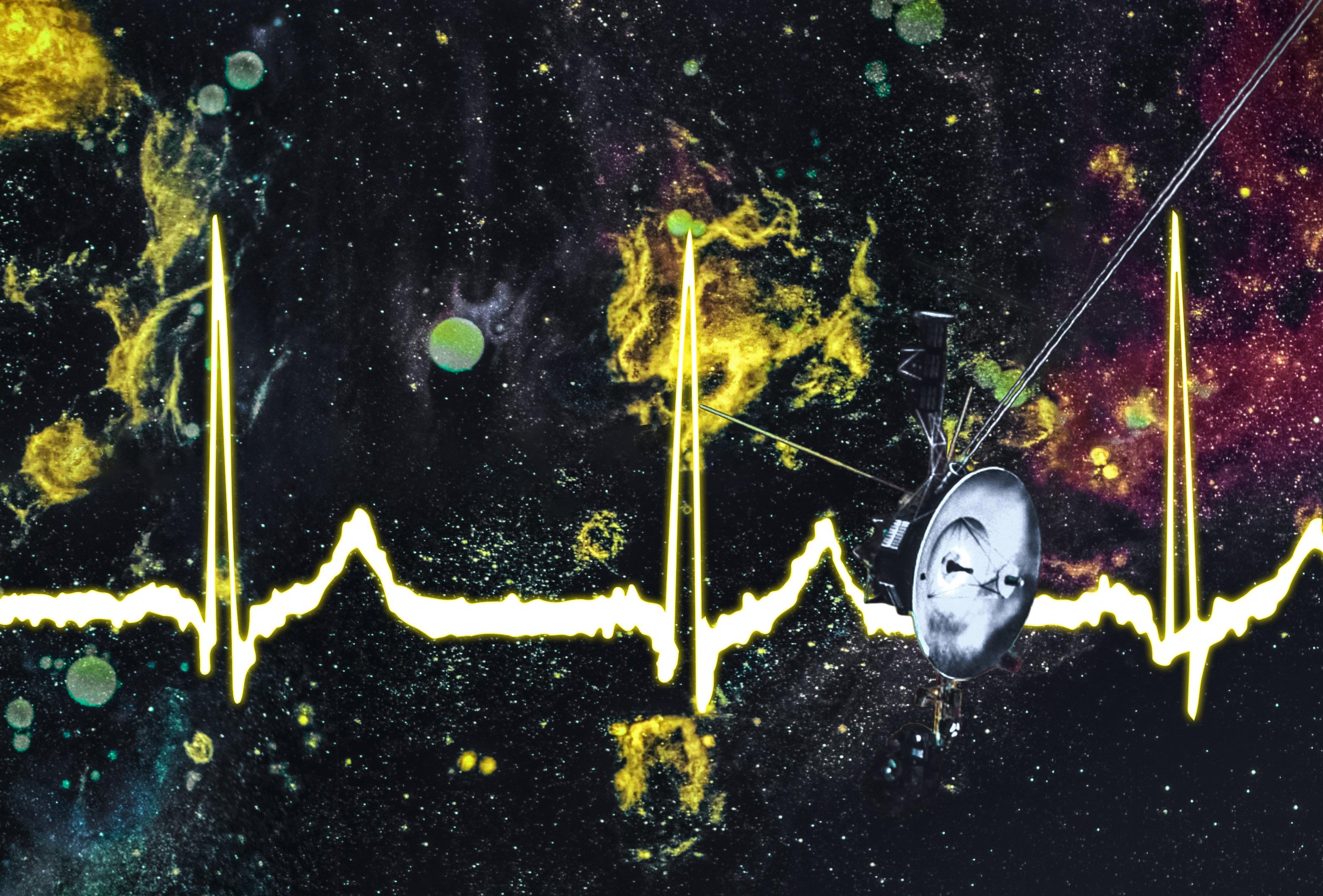
The Block Museum of Art Northwestern University 40 Arts Circle Drive, Evanston, IL 60201
(2018-2023).
The first quarter of each school year at Northwestern is always full of growth — a chance to learn more about yourself and uncover new understandings of the world around you. Freshmen figure out how to navigate on-campus life; sophomores solidify their academic and social standing; juniors adjust to living on their own and seniors start to pave their paths forward. In this issue of NBN, we aim to assist you through these transitions.
In Pregame, Tony Award-winning actorturned-professor KO imparts words of wisdom to students entering their professional lives. And if you’re wondering where to grab boba, we created a comprehensive review of Evanston tea shops. Dance Floor explores how Evanstonian students view attending Northwestern. You might also find some spicy statistics on page 23.
This issue’s cover story, “Party precautions,” details how to safely partake in Northwestern’s party scene, with protocols provided by club leaders and advice from partygoers. On page 34, we delve into start-ups SteadyScrib, Renota and Overture Games, three innovative businesses from The Garage’s Jumpstart program.
In Hangover, our staff traversed campus to compile a list of the best and worst bathrooms. And to round out the issue, we’ve put together a quiz to tell you which of our curated playlists you need the most.
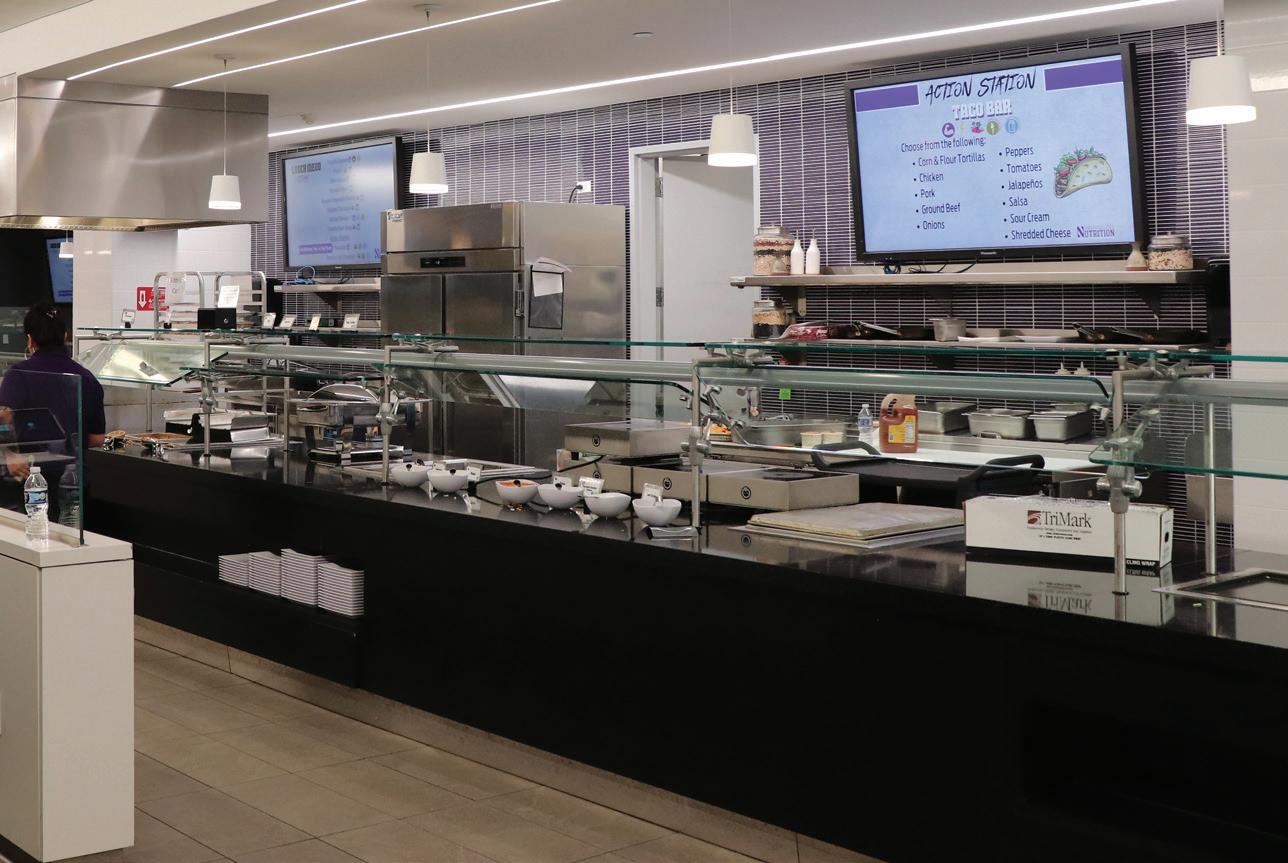
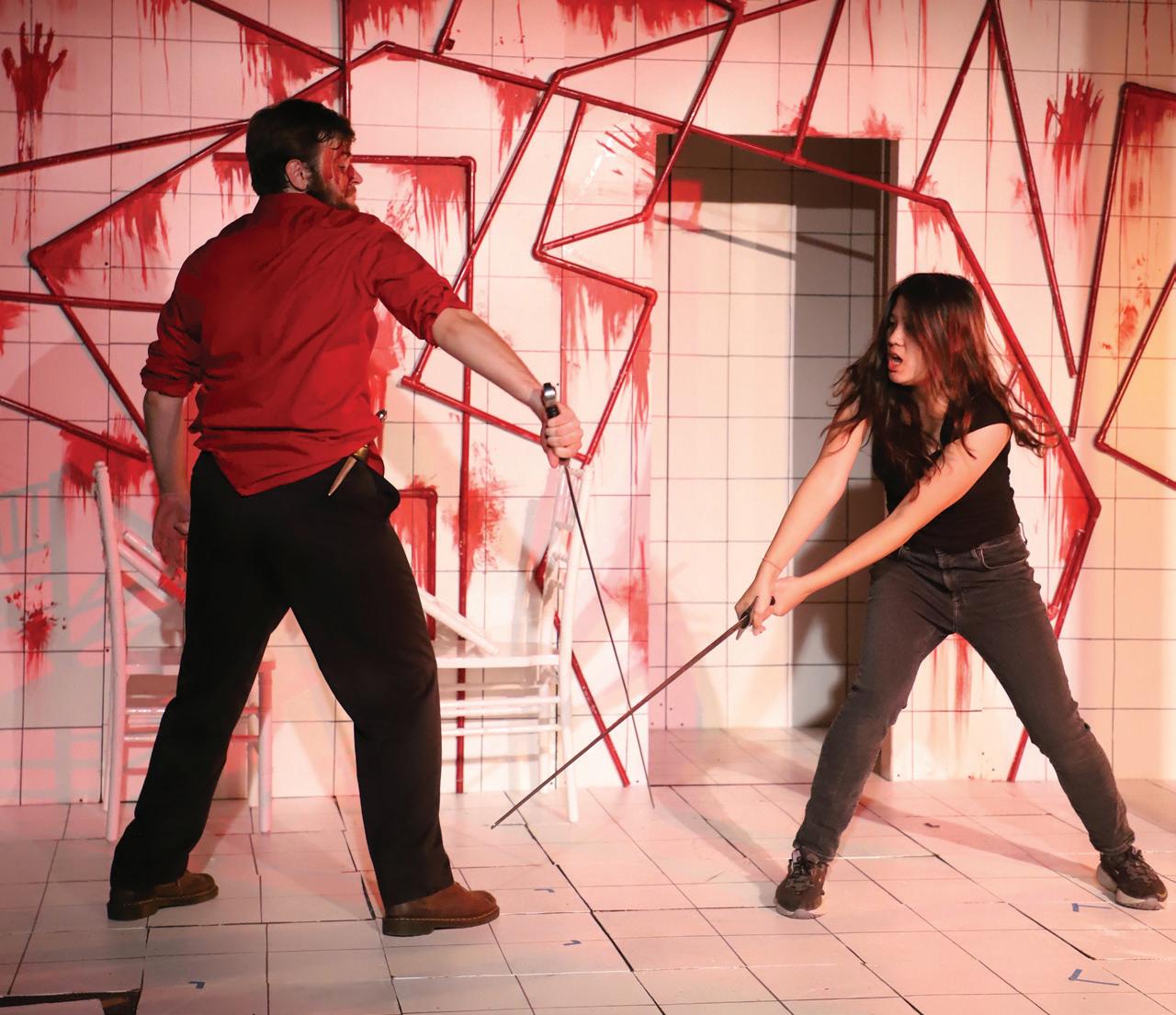

NBN prides itself on being a learning publication. This quarter, we welcomed fresh faces onto our creative and editorial teams, along with many freelance writers. Our staffers, new and seasoned, worked tirelessly to write, edit, design and refine this magazine. All the while, they continued to hone their abilities as journalists and designers to further our publication’s goal of producing content by Northwestern students, for Northwestern students.
From our hands to yours, we hope NBN’s Fall 2022 issue will be a valuable companion to you in your Northwestern journey — now, and beyond.




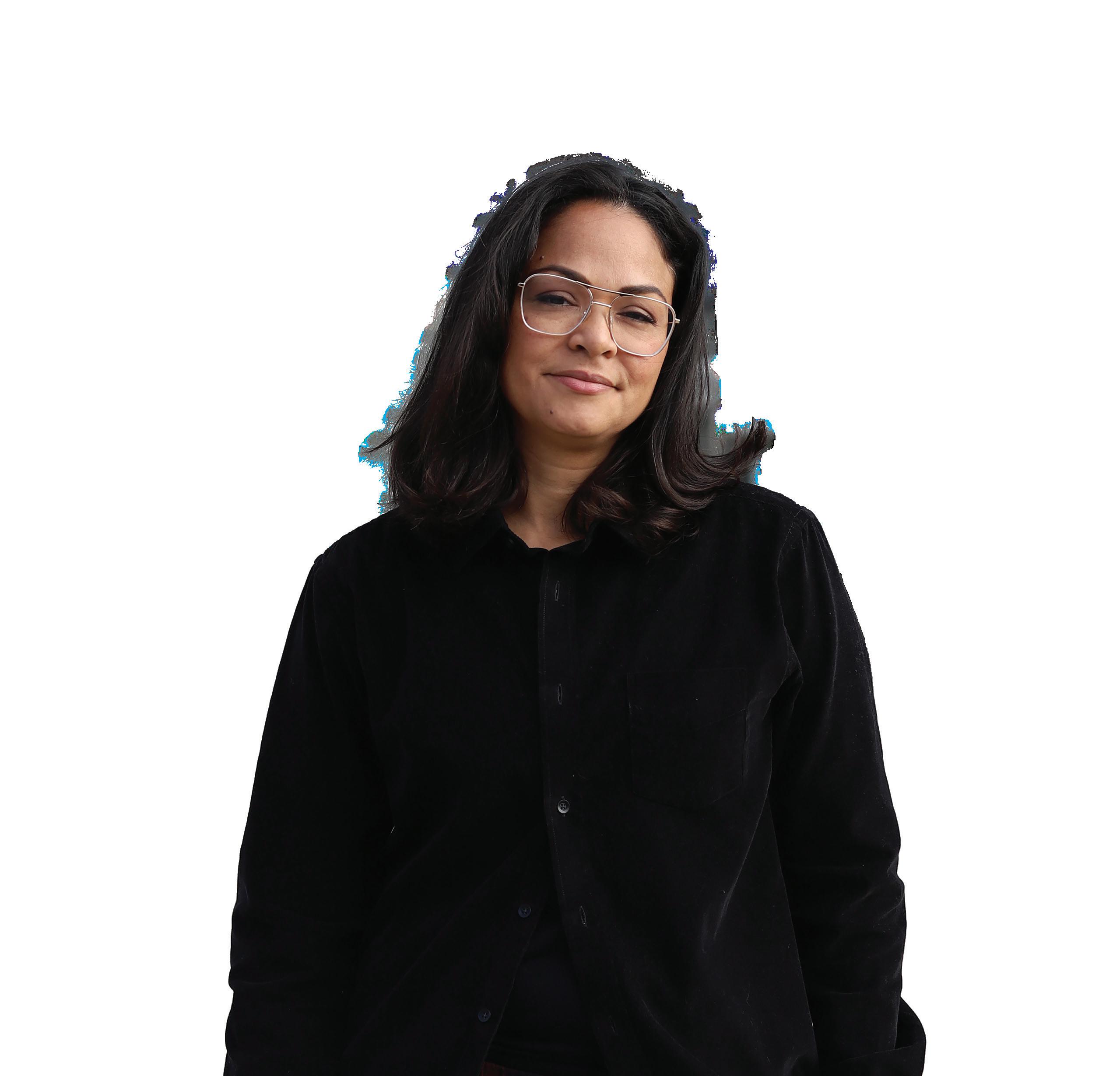
This interview took place on the homelands belonging to the Council of the Three Fires, the Ojibwe, Potawatomi and Odawa.
At Radio City Music Hall in New York City, theatre professor KO basked in the bright lights. They had just accepted the Best Actress in a Musical Tony Award for their portrayal of Anita in West Side Story Surrounded by people who looked like them and lived similar experiences, KO encountered something out of their wildest dreams.
Because their father was a director and their mother enjoyed stage managing, KO grew up on the stage. They fondly remember believing theatre was something everyone did, like going to the grocery store. During their 20 years in the industry, they have played Faith in Brooklyn, Angelica Schuyler in Hamilton and originated In the Heights Vanessa on Broadway. In 2022, KO became an associate professor of theatre and the director of the Music Theatre Certificate program at Northwestern.
KO sat down with NBN to talk about building a career and professional life.
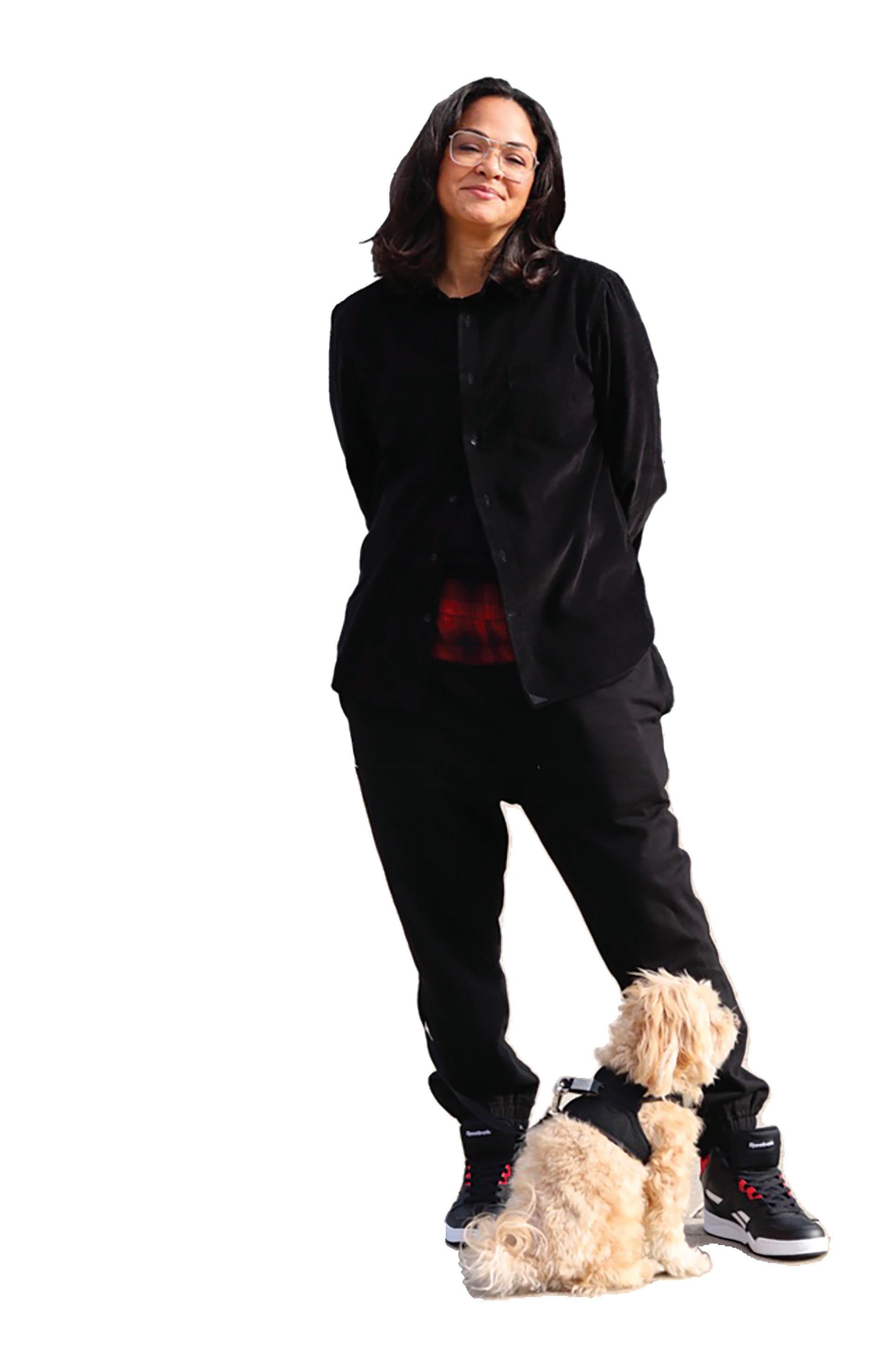
The following interview has been edited and condensed for length and clarity.
Q: What would you tell a young person trying to find a job they are passionate about in a competitive field?
A: If you’re passionate about the field, understand what you bring to it. You obviously know that you like it, but there’s something very specific about the way you see it. That is unique to you. That should be the cornerstone of how you step into most of your spaces.
Q: How do you find that quality that makes you priceless or unique?
A: Spend a little bit more time being quiet. Meditation is huge. Really start to look at what you’re surrounding yourself with. Knowing what you believe in and having integrity in your work will lead you to a place in which you can execute the thing that only you have.
NBN ranks and reviews four of Evanton’s boba shops.
WRITTEN BY NGHI TRAN & MATILDA LE // DESIGNED BY S. KELSIE YU // PHOTOS BY VALERIE CHUTwo new boba shops opening in the past two years brings downtown Evanston’s tally to four stores that specialize in selling bubble tea. Around campus, we’ve overheard questions like, “Where should I go,” “Why is it so expensive” and “Which one is the best?”

Boba, also known as bubble tea, is a traditional Taiwanese beverage that has a tea base and toppings, commonly tapioca pearls. The popular drink became known for its sweet, refreshing taste after making its way to America in the ‘90s. In Evanston, students satisfy their boba cravings at four shops: TEAlicious, Happy Lemon, Kung Fu Tea and Möge Tee. We tried each store’s signature drink and compiled a comprehensive guide to Evanston’s boba shops.
Address: 1565 Sherman Avenue (11-minute walk from the Arch) Shop vibes: Pleasant and comfortable. TEAlicious is quite busy most of the time because people like to study and hang out there. The decorations are pretty standard, but its signature Squishmallow-covered wall screams “photo-op.”
$ (10% off with Wildcard)
Signature drink: Strawberry Matcha Bubble Latte + Review: Who would have thought strawberry and matcha could make such a flavorful combination? Because all the drinks here use cane sugar, there’s a subtle sweetness that keeps you sipping. TEAlicious’s tapioca is wonderfully soft and chewy. Our only gripe is that there’s not enough strawberry syrup. This item is definitely a must-try.
Other bestsellers: Brown Sugar Bubble Tea with Milk, Blueberry Bubble Tea Latte, Taro Bubble with Milk, Bubble Tea Latte with Oreo Mochi, Wintermelon Lemonade
1590 Sherman Avenue (11-minute walk from the Arch)
Modern and lively. The spacious seating area makes Möge Tee perfect for both relaxing and studying. Bonus point for providing self-ordering kiosks, which saves customers time. $$$ (No Wildcard discount)
Signature drink: Brown Sugar Bubble Milk
+ Review: Möge Tee generally does a great job at blending caramel dark sugar with the tea’s light flavor. The tapioca pearls are fresh and chewy, which reminds us of the bouncy texture of mochi or candied jellies. We recommend decreasing the sweetness for a better experience. If you go to Möge Tee and don’t know what to order, try this drink!
Other bestsellers: Super Fruit Green Tea, Mango Pomelo, Grapefruit Yakult, Strawberry Tea, Oreo Milk Tea
Address: 1607 Chicago Avenue (7-minute walk from the Arch)
Shop vibes: Bright and cheerful. The employees are friendly and helpful, and they prepare your drinks quickly. However, the shop has limited tables and can get crowded. Pricing: $$ (10% off with Wildcard)
Signature drink: Jasmine Green Tea with Salted Cheese
+ Review: For a signature drink, this didn’t impress us. The drink tastes better once the ice has melted, and the salted cheese has a somewhat powdery texture that rapidly mixes with the liquid. Still, the green tea is light and sweet and pairs well with the salted cheese and tapioca. If you have a sweet tooth and love creamy tea, you’ll enjoy this drink.
Other bestsellers: Mango Matcha Smoothie, Boba Milk Tea, Mango Jasmine Green Tea, Dark Brown Sugar Boba Milk Tea, Strawberry Green Tea with Salted Cheese

726 Clark Street (6-minute walk from the Arch)
Shop vibes: Warm and relaxing. Kung Fu Tea is relatively small, only big enough for two tables and bar counters. If you want a cozy place to chat with friends, this shop is the place to go.
(No Wildcard discount)
Signature drink: Kung Fu Milk Tea/Milk Green Tea


+ Review: When we first poked a straw into the drink, the tooth-aching sweetness startled us. We suggest reducing the sugar level for a more balanced taste. The tapioca pearls were firm and weren’t satisfying to chew. However, the jasmine tea flavor saved the drink. This is a great classic for those new to the shop.
Other bestsellers: Oreo Milk Strike, Honey Oolong Tea, Taro Slush, Wintermelon Green Tea, Passion Fruit Green Tea
Nike Dunks. Air Jordans. New Balance 550s. Over 150 shoeboxes line the walls of Weinberg third-year Vincent Mei’s apartment, the makeshift warehouse for his shoe-reselling company, Exhibit Chicago.
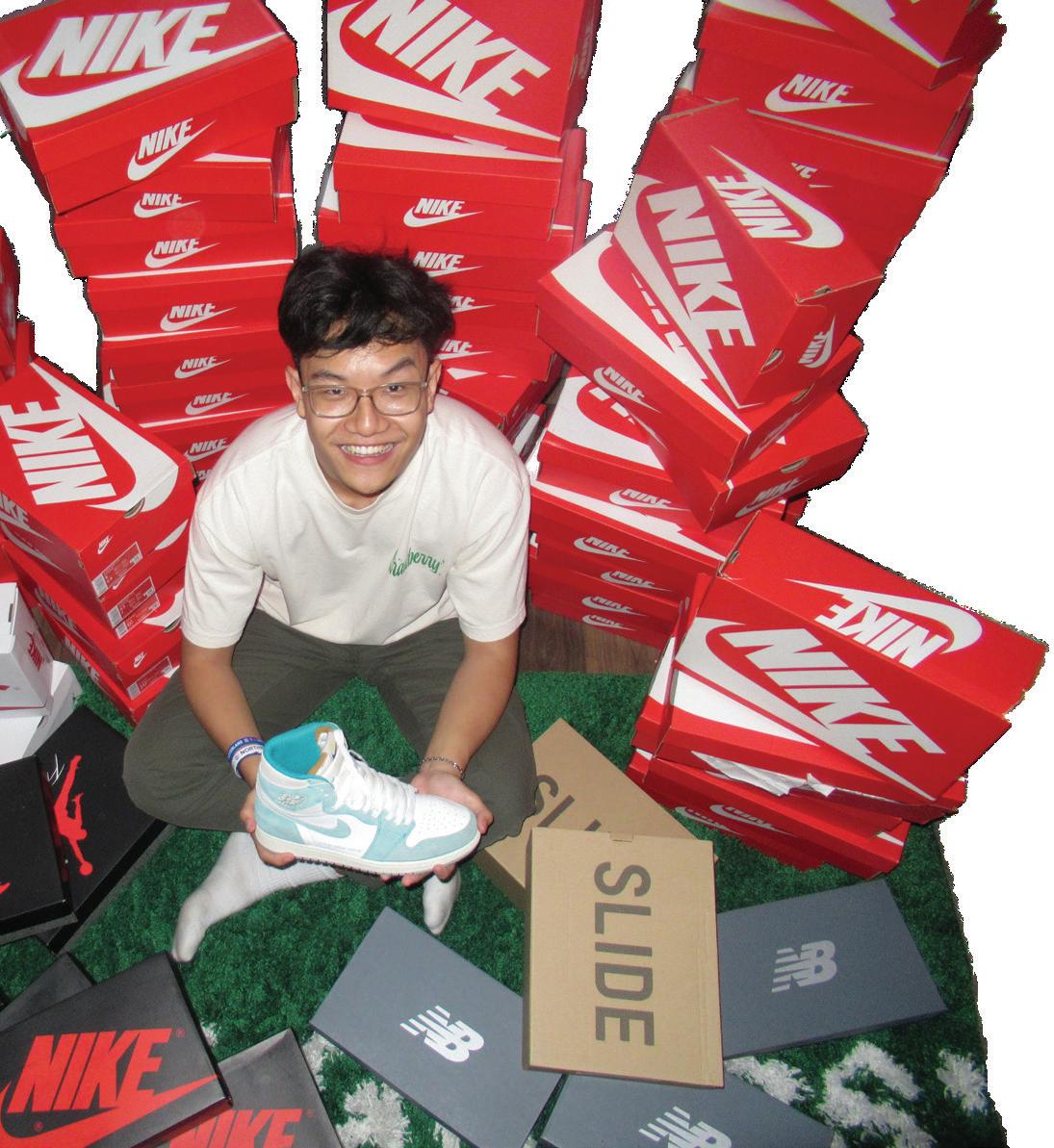
Four years ago, Mei and his younger brother Ivan sold their bikes to raise funds to start Exhibit Chicago. They’ve slowly built a dense network of hundreds of connections with buyers and sellers in the industry and have made over $75,000 in revenue.
“We sold both of our bikes, and we took that $2,200 and we just kept
flipping until we got to where we are now,” Mei says.
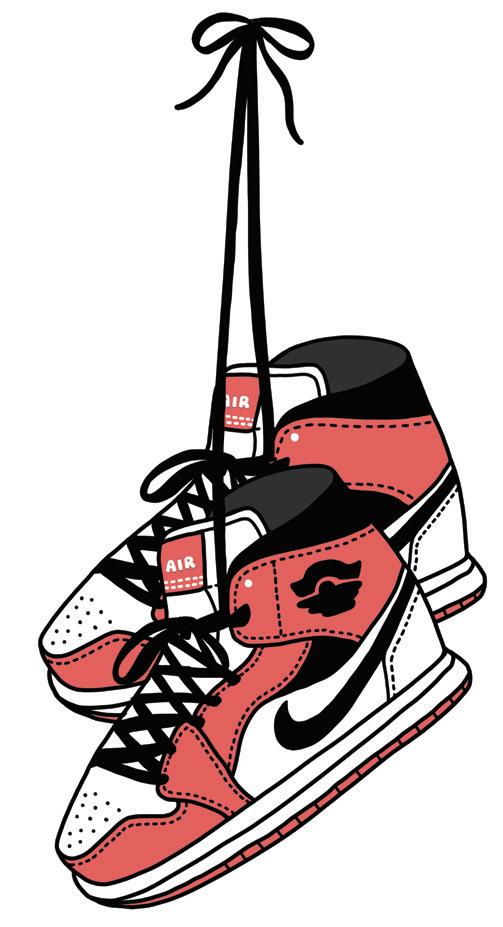
By “flipping,” Mei means “shoeflipping,” a common practice in the hypercompetitive fashion sneaker market. He buys shoes in bulk for a lower price from distributors who sell exclusively to resellers like him. For retailers and online resellers like StockX or GOAT, the shoes go through a middleman for authentication, costing time and money. As a personal reseller, Mei can skip authentication and provide shoes at a similar price, but far quicker than customers would get them from those other outlets. Mei says his customers usually get their product “the day of or within the week” of the purchase depending on their schedules.
“People really like convenience, so being able to get someone their shoe on hand right after they’ve paid is really good,” Mei says. Mei is committed to Exhibit Chicago but doesn’t let it interfere with his studies. He says he dedicates 4-5 hours per week to his business. During study breaks, he takes 10-15 minutes to post shoes on his Instagram story. When people message him, he tries to respond quickly.
However, his passion for the shoe industry means that he also constantly watches videos, follows brands’ updates and does research about the market in his free time.
“Keeping up with the market is not an easy thing to do. There’s new releases every single day, or every single week there’s like five new shoes dropping,” Mei says.

In Mei’s eyes, the most rewarding part of the job is making contacts in the industry.
“Connections to me are the most useful thing that I have. It’s not about the 150 pairs of shoes I have in my room in my apartment. It’s about the people that I meet,” Mei says.
The hustle is not without its drawbacks. Mei describes the industry as unpredictable; he may sell 25 pairs of shoes in some months, while others can leave him with barely any sales.
“The money is just an extra thing that comes with it,” Mei says. “The value that I’m capable of providing people who are interested in shoes — and even if they’re not interested, getting them interested in shoes — and giving them something that they can wear that they’re comfortable with and feel confident with is something that I care a lot about.”
Running a business is no small feet. Vincent Mei, founder and owner of Exhibit Chicago, sits with his merchandise.Three wooden signs labeled “Light Training Day,” “Medium Training Day” and “Heavy Training Day” sit on a counter in the athlete-exclusive dining hall, Nona Jo’s. Recommended portions of food from the day’s menu fill sample plates that sit behind each sign.

Tucked on the third floor of the Walter Athletics Center, Nona Jo’s serves daily breakfast and lunch exclusively for Northwestern’s Division I athletes. Rows of stations contain hot meals along with staples of an average Northwestern dining hall such as salads, fruit and a sandwich station. Past the buffet is an expansive seating area surrounded by floor-to-ceiling windows that overlook the lake.

Sitting with a few of their teammates from the Northwestern swimming and diving team, Weinberg fourthyear Markie Hopkins and McCormick first-year Malachi Cohen praise the dining hall’s salmon. Teriyaki salmon,
Nona Jo's seating area.
entertainment hospitality group that has partnered with Northwestern Athletics & Recreation since 2018.
Bridget Mooney, Levy’s executive chef at Northwestern Athletics Venues, wrote in an email to NBN that Nona Jo’s
Nona Jo’s signage displayed reminders to drink fluids during training and information on the consequences of dehydration.
“We do all of this because we want to prepare the student-athletes for success
A look inside Northwestern's most exclusive dining hall.Diving into the music that defines Northwestern.
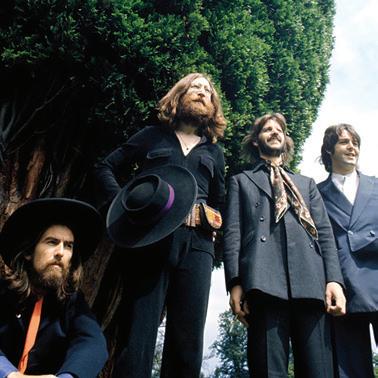
 WRITTEN BY IRIS SWARTHOUT // DESIGNED BY EMMA ESTBERG
WRITTEN BY IRIS SWARTHOUT // DESIGNED BY EMMA ESTBERG


Taylor Swift dominated our Wrapped — and the charts — this year. The Pennsylvania-born singer started her career at just 14 with a country appeal and transitioned through pop and folk genres thereafter. Alternative beats began to bleed into Swift’s 2017 Reputation and re-emerged with her recent Midnights, which brought soft R&B into the mix. At Northwestern, students have already placed songs like “Anti-Hero,” “Vigilante Shit” and “Snow On The Beach” in their top three beats, proving the strength of Midnights’ range. Just look at “I’m a monster on the hill” and “Lately I’ve been dressing for revenge” to inspire your new, multifaceted personality.

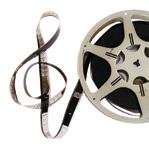






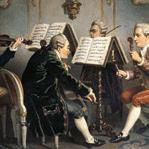




A list of six POC-owned businesses to explore in Evanston.
 WRITTEN BY OLIVIA KHARRAZI DESIGNED BY SAMMI LI
PHOTOS BY ELOISE APPLE
WRITTEN BY OLIVIA KHARRAZI DESIGNED BY SAMMI LI
PHOTOS BY ELOISE APPLE
BAKE SHOP
607 W Howard St.
Growing up in Mexico, co-owner of Sweet Temptations Bake Shop Yuri Oropeza remembers her mother baking sweet treats for her family. That tradition continued after her family immigrated to the U.S., and in 2016, Oropeza and her mother opened their dream bakery.
“We’re a family-owned, womenowned business, and we try to give as much back to the community, and the community gives it back,” Oropeza says.
Sweet Temptations specializes in custom event cakes while also serving coffee and Mexican-inspired baked goods.
2NICELENA & FRIENDS
1235 Chicago Ave.
It’s hard to miss niceLena & Friends’ bright yellow exterior and fes tive window display. Owner Lena Kim opened the store in 2018 and sells jew elry, candles, printed mugs and coasters, among other homegoods. Kim’s items are handmade with designs inspired by her childhood in South Korea.

“Being a retail owner is kind of like being a bartender but during the day,” Kim says. “People come through, and there’s a lot of small talk, deep talk.”
607 Dempster St.
Co-owner Nargis Fatima has owned Nargis Beauty Spot with her husband for nearly 14 years. The business specializes in hair treatments, facials and brow styling.

When it comes to the business, Fatima says she tries to make her cus tomers happy before focusing on money.

4TIBETGIFT 828 Dempster St.
Owner Tashi Tsering Phuri opened TIBETgift in 1998 to bring Tibetan traditions to Evanston. Over the last 30 years, Phuri says the store has promoted Tibetan culture and Buddhism by selling artifacts and hosting classes about the Buddhist faith. The store also strives to unite Evanston’s community by holding events like visits from monks and lamas as well as performances, art exhibitions and book showings for Tibetan creatives.
5STEPPING OUT ON FAITH 1632 Orrington Ave.
Owner Vivian Killebrew fulfilled her dream of owning a consignment store when she opened Stepping Out on Faith in 2008. The shop sells a range of clothing, jewelry and accessory items.
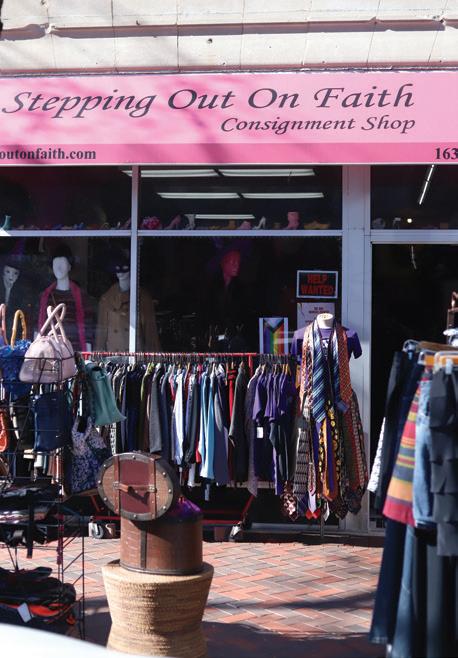
While Killebrew and the items’ previous owners keep part of the profits, a portion is donated to Connections for the Homeless, an organization dedicated to ending homelessness and helping homeless individuals find housing.
Killebrew emphasized her positivity and efforts to empower women by giving them a step up. “If you look good, you feel good, right?” she says.
YOFRESH YOGURT CAFE 635 Chicago Ave. #7
Though the self-serve yogurt and sweet toppings may be the main attraction for many customers, for co-owner Larry Murphy, community service is YoFresh Yogurt Cafe’s top priority.
Murphy and his wife Jean opened the store in 2014. A year later, they and the owners of C&W Market and Ice Cream Parlor established the Black Business Consortium of Evanston/Northshore, which provides resources for and a network among Black business owners. In March 2022, the duo launched L&J’s YoFresh Foundation for Expanding Youth Horizons, which awards grants to students for international travel.
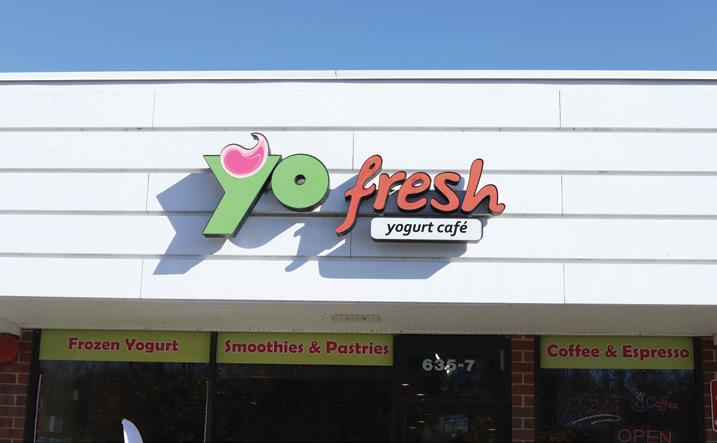
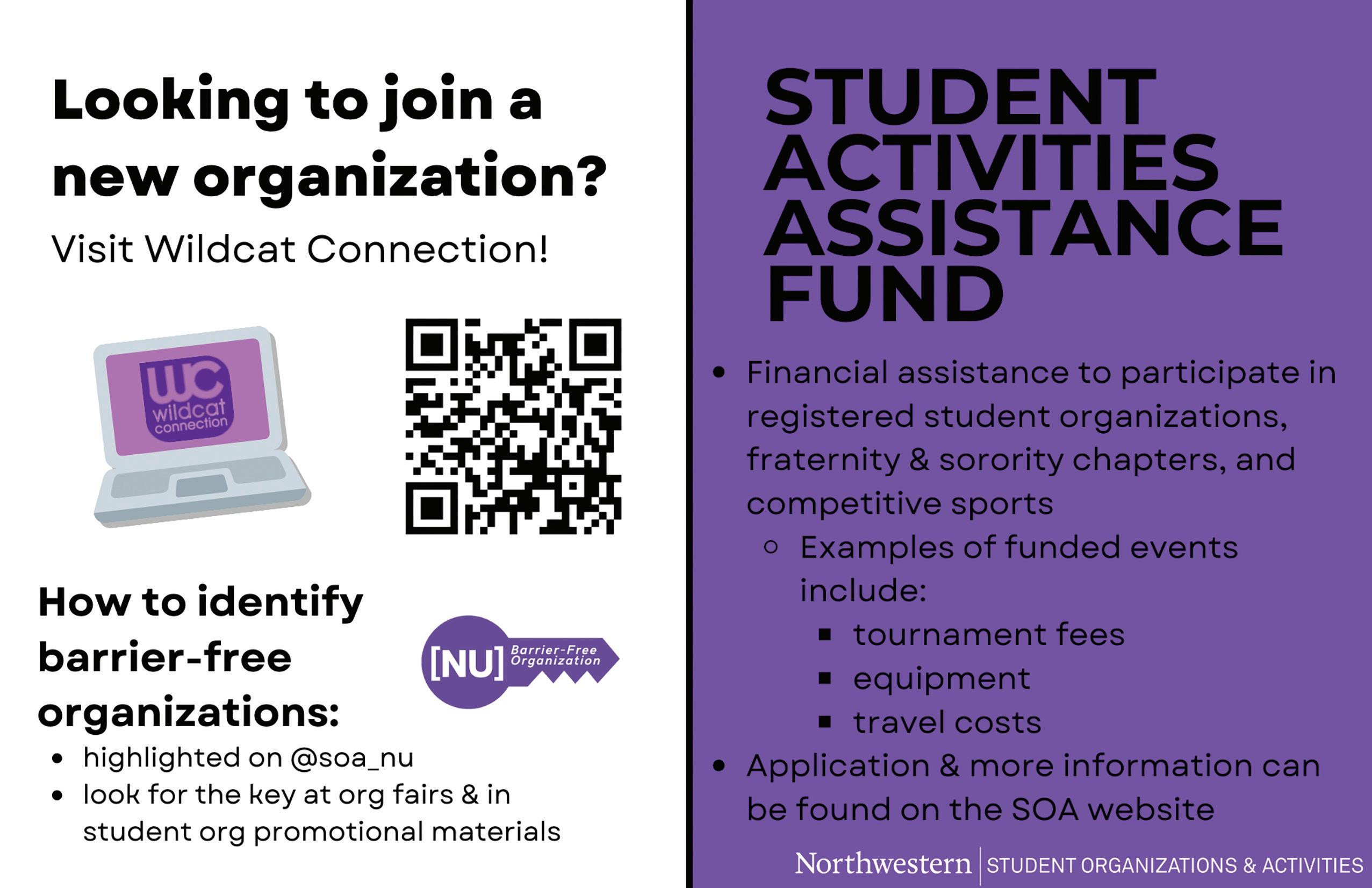

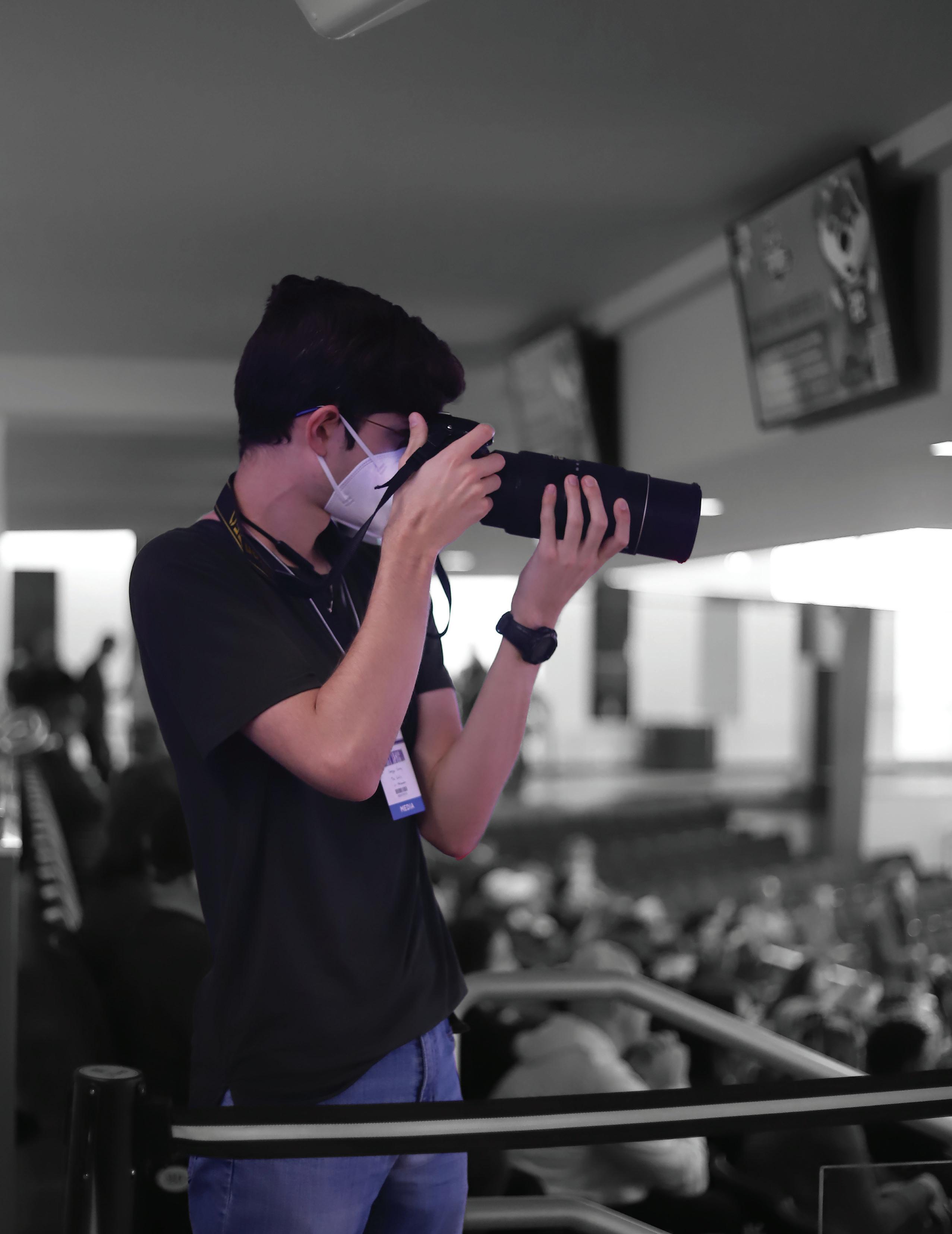
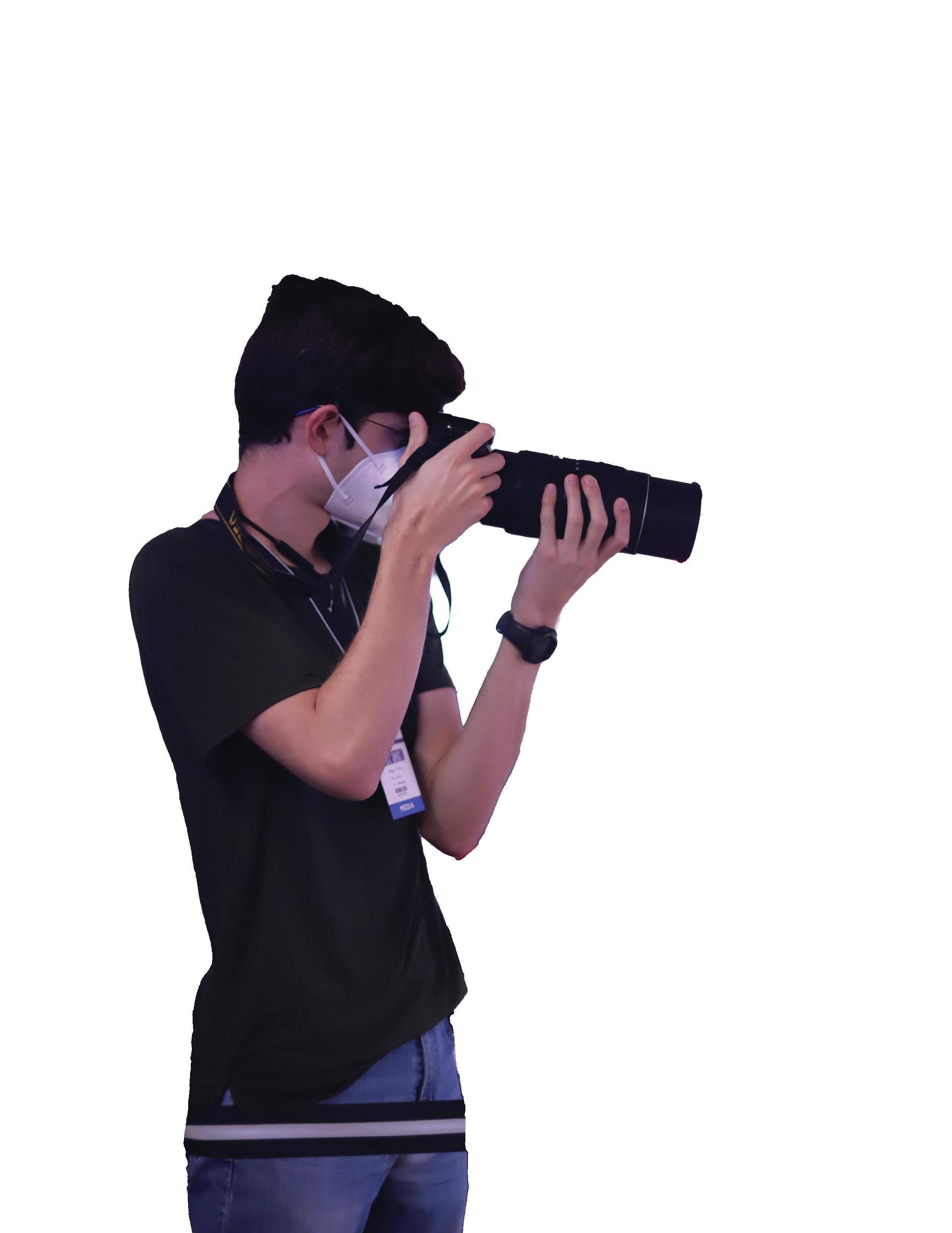
Hooves pound the dirt, billowing dust to create a haze through which a crowd of hands clap and wave. The shutter clicks. A cowboy sits atop a light-colored horse, his right arm outstretched holding a rope. A captive audience’s mouths fall agape, enthralled at the spectacle. Weinberg first-year Josh Sukoff captured this moment in a black-and-white photograph at a Colorado rodeo.
A photographer’s work begins before they press the shutter button. To create the best shot, they first choose a lens, adjust the camera mode and select an optimal position for lighting and angles. The process also extends long after taking the photos, when the photographer sifts through hundreds, sometimes thousands, of their images to choose the top few. From setup to photo selection, Northwestern student photographers put a lot of thought into getting the right shot.
When Sukoff debated which of his photos to bring as decorations for his college dorm room, the monochromatic image of the Colorado rodeo stood out. He wanted one that would hold his interest, calling the picture “timeless.”
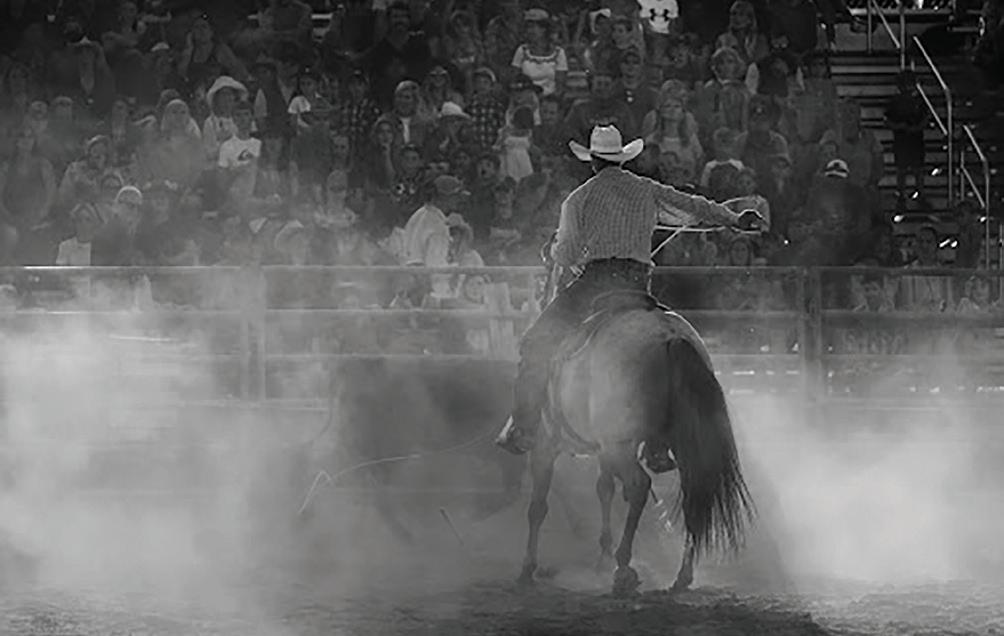
Sukoff discovered visual media at sleepaway camp in 2014, where he says his disinterest in sports led him to shooting clips for a documentary with the camp’s media department. He says his passion for photography stemmed from this experience with videography.
“I enjoyed being behind the camera,” Sukoff says. “I enjoy being able to put different stories together with the same type of media.”
An avid skier, he began by photographing his home state of Colorado. Sukoff experimented with new techniques and uploaded his photos onto Unsplash, a royalty-free stock
image website. He also began posting his photos on social media sites such as Instagram.
Impressed by a photo he posted on Instagram, the Aspen Daily News messaged Sukoff about shooting the 2022 X Games, an annual extreme sports event.
“You’re surrounded with people who are so much more talented than you, but they’re so willing to share their tips and tricks,” Sukoff says. “I didn’t feel afraid to go up to the person who’s working for The Denver Post and ask him about something.”
One tip that a fellow reporter gave Sukoff was to avoid “guy in the sky” photos, in which an airborne biker is set against the sky as a background. Sukoff says that although these images are cool, the reporter explained that it’s more important to show the player’s position in relation to the ground.
Sukoff’s camera takes 20 photos per second. By holding the shutter at critical moments, he can capture images the human eye cannot.
“If I were to look at something, I’m not seeing it as a picture. I’m seeing it as a moving object,” Sukoff says. “With a photo, that’s a still frame in time.”
Sukoff now shoots photos for Northwestern Wildside and works as an official content creator for the University’s Instagram. He also shadowed the Northwestern gameday network, Studio N Productions, during their broadcast of a Northwestern volleyball game. The energy of the room was hectic as camera operators panned between players on the court.

Sukoff’s broadcast experience only reaffirmed his passion for photography, helping him realize he prefers working oneon-one with his subjects.
“The way that I’m able to impact people through these pictures makes me feel good,” Sukoff says. “Being able to put a smile on someone else’s face puts a smile back on mine.”
How Northwestern student photographers get the perfect shot. A cowboy at the Colorado rodeo. Josh Sukoff taking photos at Welsh-Ryan Arena. PHOTO COURTESY OF JOSH SUKOFFMedill second-year Seeger Gray’s passion for photography began with a point-and-shoot camera gifted to him by his granddad when he was younger. Gray spent the next few years photographing local Wisconsin lakes and forests, which he found less daunting than photographing people.
“You have some time to mess around with it,” Gray says. “Also, I liked that there was kind of an excuse to get out to these places. Enjoy nature.”
Although he still brings his camera on walks, Gray’s journalism interests as a Northwestern first-year pivoted his craft to photojournalism and portraits. In the summer of 2021, Gray volunteered at his local WORT-FM news station to report and occasionally take photos for his articles, which was his first time merging his interest in journalism with his love for photography.
For a photojournalism class assignment on capturing emotion through photography, Gray took portraits of people working a volleyball game at Welsh-Ryan Arena. Instead of taking photos of the game on-court, he wanted to photograph behind-the-scenes workers that spectators don’t usually notice.

“I want to show people something that only a camera can,” he says.
Along with his interest in portrait photography, Gray is the sports photo editor at The Daily. He advises his fellow photographers to position themselves at optimal angles for their shots. For example, if a basketball player is going up for
a three-pointer, he says photographers should stay on the side where the player’s arm will not block their face.
For Gray, an added benefit of joining The Daily was the ability to borrow photography equipment. With used cameras still costing hundreds of dollars, he says photography is an expensive hobby that is difficult to break into without access to equipment.

Gray bought a camera in 2021 to branch out into more paid work, doing freelance photojournalism in Chicago and photographing student performances like Into the Woods
“I really like watching theater and dance shows, but I do have kind of a short attention span. I like being able to simultaneously enjoy the show and be working at the same time,” Gray says.
Positive feedback from his photo subjects makes the experience worthwhile, he says. It’s why he wants to do photography professionally rather than just as a hobby.
“Photojournalism gives me more of a chance to have my work be seen and make an impact,” he says.
Boomshaka’s 2022 Spring Quarter show. Seeger Gray taking photos in Welsh-Ryan Arena. PHOTO COURTESY OF SEEGER GRAYIt’s a brisk fall morning in Highland Park, and Weinberg third-year Angeli Mittal readies her camera to photograph the Northwestern women’s golf team.
“I’m using an 18-400 millimeter lens, which means that I can get really close up,” Mittal says. “The more close up that you get, the better. It’s called a bokeh effect.”
Mittal focuses the lens.
She waits for a player to swing, then clicks. The image shows the high-definition golfer framed against a soft, out-of-focus background — indicative of the bokeh effect.
Mittal inherited her uncle’s interest in photography. In fact, the camera she brought to the women’s golf match is his. Since she was 10, Mittal and her uncle have gone stargazing annually to photograph the night sky. After learning the basics of taking photos, she dove into the intricacies of camerawork through trial and error.
Mittal is the digital managing editor for The Daily, where she mainly photographs sports and campus events like the 2022 Northwestern Commencement ceremony. Photography is a form of visual self-expression for Mittal.
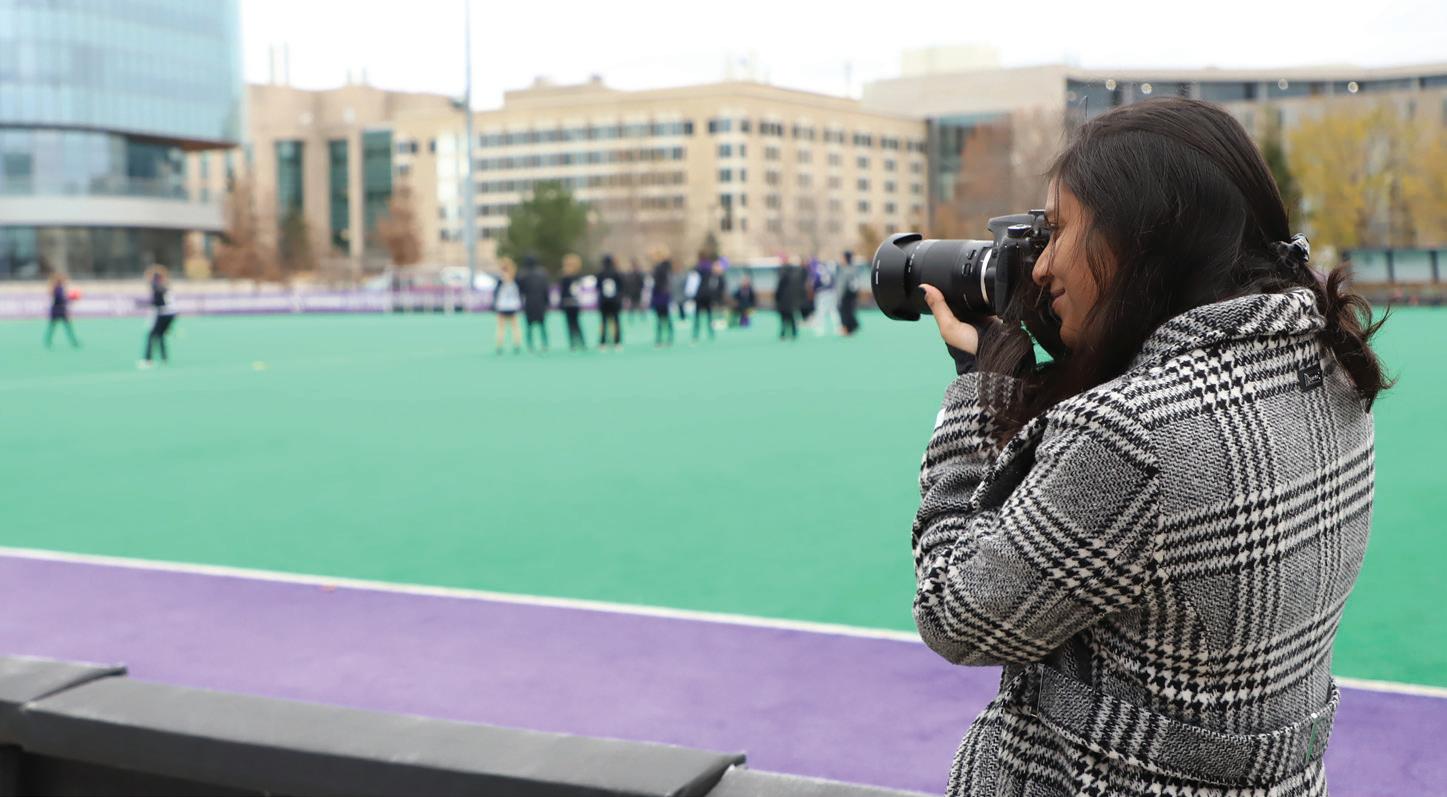
“I think that photos are just way more appealing than words,” she says. “I think that’s also just the first thing that people see, so taking a good photo can mean whether or not someone reads an article.”
One of Mittal’s proudest photo sets includes pictures she took of the Northwestern Diwali celebration, sponsored by Religious & Spiritual Life, OM at Northwestern and the South Asian Students Alliance in 2021. She says this project meant a lot because she celebrates Diwali, the Festival of Lights, at home.

At Northwestern’s Diwali event, Mittal set up the festive lights lining the Sheridan sidewalks and adorning Tech. She also photographed the religious ceremony, where lights spread across the stage.
In addition to the striking photos that she took, the Diwali celebration reminded her of time spent with her grandfather, a Hindu priest.
“It was really nice to bring a little bit of home to campus,” Mittal says.
Angeli Mittal taking photos at Lakeside Field. The religious ceremony of Northwestern’s Diwali celebration. PHOTO COURTESY OF ANGELI MITTALCarol Heimer’s email signature began with the same title for nearly 40 years: “Carol A. Heimer, Professor of Sociology, Northwestern University.” Now retired since Aug. 31, Heimer says rewriting her signature is one of many transitions she’s had to navigate. Another pressing issue is figuring out what retirement means to her.
“In the best of all possible worlds, we retire to something rather than retire from something,” Heimer says.
According to Pew Research Center, the annual growth of retirees increased by approximately 1.2 million more baby boomers than usual in 2020. In addition to financial concerns, retiring professors in particular must face the transition
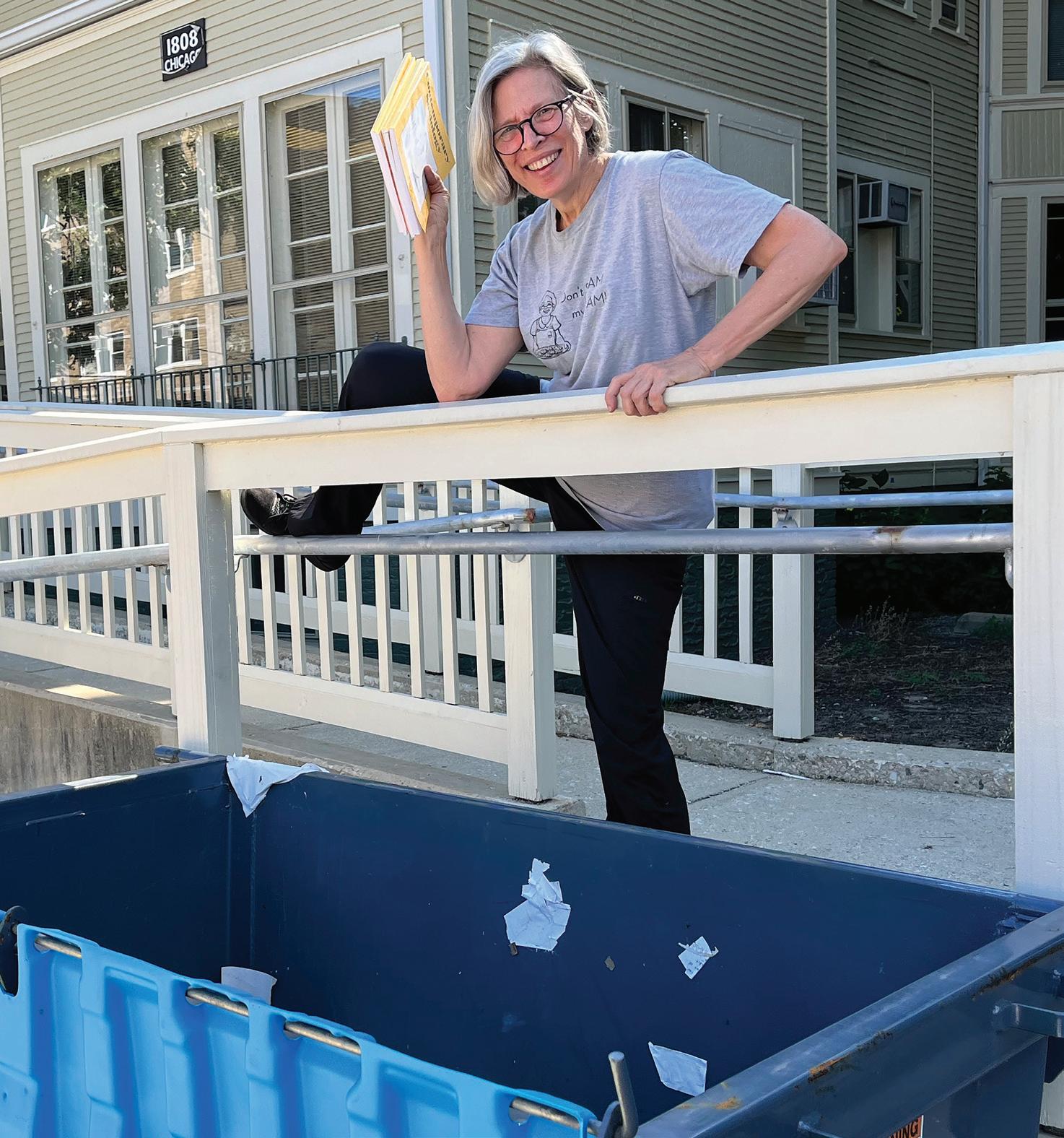
out of what is usually considered a lifetime career.
Wendi Gardner, associate professor of psychology at Northwestern, refers to professors’ careers as “role identities,” a term Oxford Bibliographies defines as “the character people play when holding specific social positions in groups.” Careers often shape the way professors structure their lives, and without that structure, Gardner says it’s crucial to find other forms of purpose.
“One of the most important things that we can do in the successful transition to retirement is identify the aspect of the higher identity that you value the most and make sure you continue to express it,” Gardner says.
For professors, this process can manifest in various ways. Michael Roloff, professor emeritus of communication studies at Northwestern, retired from his post at the beginning of September, though he still takes part in some professional work. A professor gains emeritus status when they retire as a means of keeping their academic title.
Retiring professors tackle the identity shift of leaving their jobs. WRITTEN BY ATARAH ISRAEL // DESIGNED BY MICHELLE SHEEN“In the best of all possible worlds, we retire to something rather than retire from something.”
Carol Heimer, Northwestern professor emeritus of psychologyPHOTO COURTESY
OF CAROL HEIMER
Currently, he evaluates professionals for promotion and reviews journal submissions but is considering teaching summer sessions. Roloff says he also values the freedom of choice that these commitments bring.

“I could see myself starting to read stuff I haven’t read in a long time,” Roloff says. “I’ve got eight grandchildren. I’ve already been spending more time with them than I’ve ever spent before.”
Heimer has remained active in academia by shifting her focus to the American Bar Foundation (ABF), a nonprofit law research organization. For the past 11 months, she’s led ABF’s seminar series. She is also writing a book about the intersection of the legal and medical fields.
“One of the big mistakes people make is they think they’re just going to stop working, but when you move into a place where you’re stopping working, then you lose a lot of your connections with other people,” Heimer says.
Prior to retirement, Heimer lost both her husband and mother after the onset of dementia. Her focus on caregiving at the time meant she did not have the capacity to consider post-retirement plans.
Now in the midst of the transition, Heimer is confronting the loss of her previous role as professor.
“It’s disconcerting on a daily level,” Heimer says. “Some days you get up and you bounce through the day, and other days you get up and you think, ‘Oh, my god, I don’t have any plans to see anybody today.’”
Roloff has witnessed other retired colleagues reconcile with becoming unrecognized in an environment where they were once distinguished.
“You have to realize that it’s not just you who’s evolving and making this choice, but the University is evolving and making the choice,” Roloff says. “You realize you don’t fit as well as you did.”
Growing up in a family of educators and raising children to have the same passion for teaching, the field has personal value to Roloff. However, concerns about his job performance declining with age and his place at Northwestern made him consider retirement as his next step.
“My feeling was that some of the great athletes that I have respect for were the ones who retired before they actually needed to,” Roloff says. “They could still play the sport — not as well as they did in their prime — but they could still do it. I think that was a critical factor for me. It was internal.”
For professors struggling with retirement anxiety, Gardner suggests it’s important to find a social circle beyond the University.
Karen Chou, clinical professor emeritus in the McCormick School of Engineering, says the COVID-19 quarantine helped her find new ways to be social. She began going on walks during isolation, leading her to meet new friends she otherwise wouldn’t have. Even now, she maintains those meaningful connections.

“I found a group of seniors walking, and I became the baby in the morning group. Now, we have weekend coffee in Panera,” Chou says.
Gardner adds that meaningful hobbies are important for retirees. According
to the National Institute on Aging, pursuing hobbies can provide happiness and health benefits.
“Even for people who might be struggling with the role transition, I want to say, ‘Take heart,’” Gardner says. “More than likely, your well-being will continue to improve, even if this is a rough patch.”
For retirees, leaving a profession is not the end of a career but a chance to discover new goals. Heimer says she is taking the time to explore different aspects of herself.
“You want to look forward and say, ‘What am I gonna do now that I haven’t done in the past?’” Heimer says. “‘What new skills am I going to learn? What new adventures
“Youhavetorealizethatit’snotjust you who’s evolving and making this choice, but the University is evolving and making the choice.”
Michael Roloff, Northwestern professor emeritus of communication studiesPHOTO COURTESTY O F K A R E N C H O U
Destigmatizing sex with statistics.
WRITTEN BY KATIE KEIL // DESIGNED BY SAM BULL & ALLEN ZHANGAt the beginning of Fall Quarter, Northwestern history professor Michal Wilczewski commenced his first-year seminar course titled “Sex in the Slavic World,” a class focused on redefining misconceptions about sex by exploring the history of sexuality in Eastern Europe. His first lesson examined society’s conversations around sex.
Wilczewski told his students that conversations about sex are unavoidable. The real problem lies in how to promote talking about it in a healthy way.
“When we say that we’re not going to talk about sex, we’re talking about it anyway, because it’s still on our minds,” Wilczewski says.
The culture around sex and sexuality in college is well-documented through national health reports, campusconducted surveys and student newspapers. According to the biannual National College Health Assessment, 12.4% of undergraduates reported having four or more sexual partners in the previous year. From data collected by NBN in an anonymous survey filled out by 105 students, 36.9% of Northwestern undergraduates reported having four or more partners within their lifetime.
is significantly less than national estimates, which fall between 60-80%. Weinberg second-year Avery Blaszak says people who participate in hookup culture are often slut-shamed due to stigma that surrounds conversations about sex.
“A lot of people define a hookup in different ways, and I don’t think there should be any shame or stigma in defining it,” Blaszak says. “I think people need to realize that sex can be different things for different people.”
Students’ comfort levels in approaching conversations about sex at Northwestern stem in part from their upbringing. For Blaszak, open discussions with her parents have helped her feel more comfortable discussing sexuality.
“I feel like my mom addressing it so forwardly helped me prepare myself and be safe in my experience,” Blaszak says.
Some Northwestern students, including SESP second-year Adrienne Scheide, cite inadequate sex-ed programs in high school as damaging to young adults’ concept of sex. Scheide says her high school’s sex education focused more on using scare tactics to promote abstinence rather than confronting these topics head-on.
“It wasn’t instructive or healthy at all,” Scheide says.
Building a community that encourages healthy conversations about sex is important for students’ well-being. Wilczewski emphasizes normalizing discussions surrounding sex.
Understanding that sex has different meanings for everyone is essential to fostering a more comfortable environment for open conversation, Blaszak says.
“People are coming with different levels of experience,” she says. “If people could just eliminate judgment before thinking or talking about sex, I think that would make Northwestern a better community.”
When it comes to the concept of “hookup culture,” which refers to the normalization of casual sex, approximately 33.3% of surveyed students say they participate. This
“My goal in class is to take sexuality out of the realm of the taboo, make it something that is the forefront of the conversation,” Wilczewski says.
By having these conversations about sex in a supportive environment, we
NBN conducted an anonymous survey that asked Northwestern students about their sexual health and habits to destigmatize conversations around the act of sex and pleasure. The statistics displayed to the right are compiled from 105 survey responses.
can begin to break down the concept of what sex should be versus what is healthy for us.
“If people could just eliminate judgment before thinking or talking about sex, I think that would make Northwestern a better community.”
- Avery Blaszak, Weinberg second-year
“We’re talking about it anyway, because it’s still on our minds.”
- Professor Michal Wilczewski
(based on 32 responses)
1. 2. 3.
choking
How many sexual partners have you had?
How old were you when you lost your virginity?
1
out of every 3 respondents say they engage in “hookup culture.”
9
12 1 2 3 4 5 6 7 8
10 11
minutes. 40 98
respondents say they use a condom, making it the most popular form of contraceptive.
19 18 17 16 15 Comm
McC Medill WCAS
On a scale of 1-10, how comfortable are you with talking about sex?
9 8 7 6 5 4 Comm
At the beginning of the school year, SESP third-year Lily Ng presented campus residential assistants a map of Evanston and asked them to point out Northwestern University.
“They really had no idea how big Evanston was and how close we are to the edge in relation to where everything is. We just take up this little lakefront piece, and
there is this huge slot going from Wilmette to Howard,” Ng says.
Most students don't realize that northern Evanston is not the full extent of the city. Yet, several Northwestern students grew up with Evanston as the backdrop to their coming-of-age and know it like the back of their
hand. Now attending the University, they see a new side of their hometown.
NBN talked to three Evanston-raised Northwestern students about what it’s like to attend school so close to home, how their perception of Evanston and the University has changed and how their peers have a limited knowledge of the city that they reside in.
Ng grew up with little connection to Northwestern despite living in Evanston her whole life. Like many Evanstonians, she thought of the campus area as “the Lakefront.”
Community engagement was a consistent aspect of Ng’s childhood. She joined the selective Justin Wynn Leadership Academy (JWLA) in fourth grade and started doing community service with partners, including soup kitchens and elderly homes. This experience taught her collaboration and leadership skills.
As she conducted her college search, Ng realized that attending the University would allow her to continue making an impact in Evanston.
“The easiest way to be involved with the community — or really the only way — is to be there physically, and there wasn't really going to be any other way for me to do that besides going to Northwestern,” Ng says.
All of Ng’s extracurriculars are Evanstonbased. Through a program called Emerge, she teaches asset-based community development — a method of using untapped connections, institutions and monetary funds for sustainable expansion — to Evanston youth. She is also active

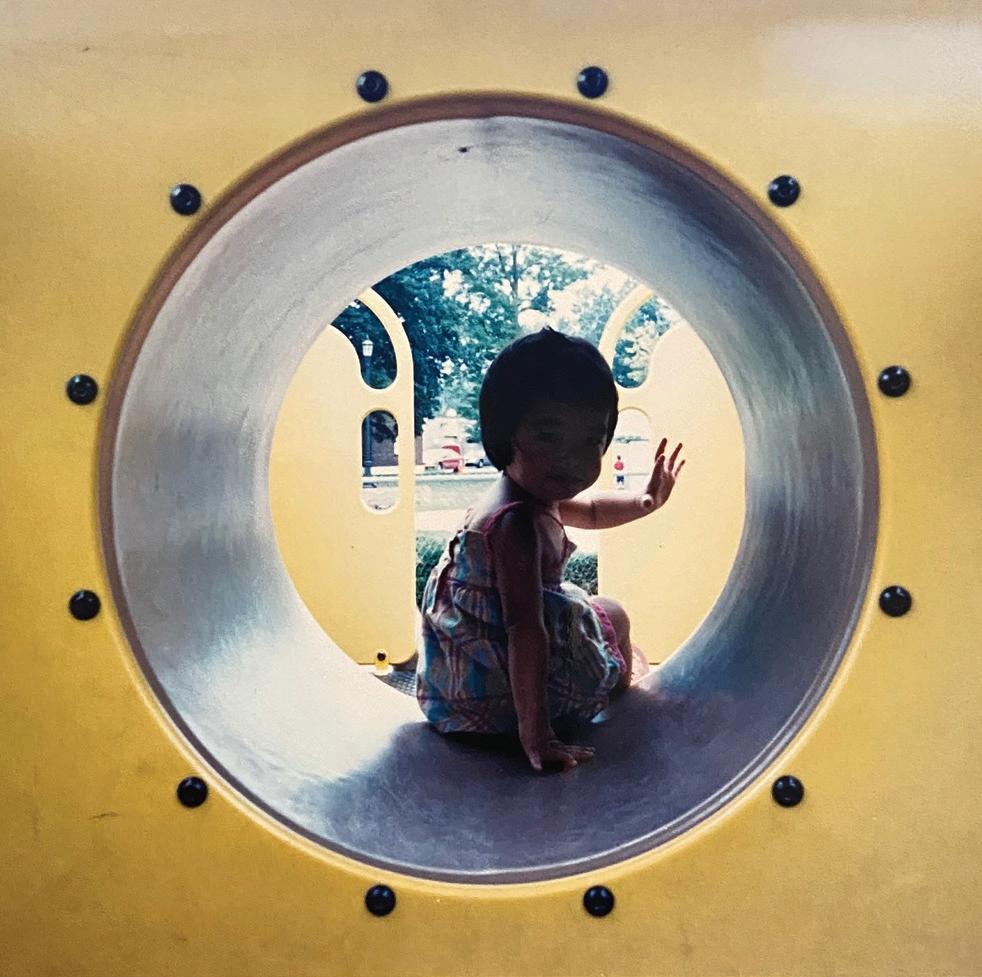
Ng, 20 months old.
in Evanston Grows, an organization that addresses food insecurity by providing locally grown food to community members in need.
Ng says residents don't like Northwestern for a number of reasons. She remembers her parents complaining about noisy tailgates that left beer cans in their yard. Beyond that, Northwestern’s status as a charitable nonprofit organization exempts it from paying property taxes.
“People just don't really feel Northwestern is accessible to them or
inviting them at all to be a part of their space,” she says. “It's kind of like an exclusive echelon of people.”
Ng only knows of one Northwestern program that gives back to the Evanston community: Good Neighbor Great University, the scholarship fund she received aid from. The program provides $1,000-$5,500 of financial aid to Evanston and Chicago high school graduates.
Evanston-raised Northwestern students reflect on their relationships with the University and their hometown. Ng, age 20. PHOTO BY ELOISEAPPLEEvanston residents’ ambivalence toward Northwestern made Ng initially uncomfortable about attending the University.
“Going to Northwestern, I felt sort of guilty to be participating in this institution,” she says. “I felt like I was going to the bad side.”
At Northwestern, Ng has encouraged her peers to take advantage of Evanston’s offerings. She wants people to know that Evanston was not created to serve
the University, and students should build up the community around them.
“What you see [on campus] is definitely not the full story of Evanston,”
Ng says.
She recommends looking into programs offered by the Northwestern Center for Civic Engagement Office. Ng highlighted Campus Kitchen, a student organization that redistributes leftover food from the dining halls to the community, and Books and Breakfast,
which invites Northwestern students to tutor Evanston public school students in the mornings.
“I really encourage people to get involved with the community,” Ng says. “There are just so many amazing efforts going on that are honestly unique [to Evanston].”
LILY’S FAVORITE SPOTS: Sea Ranch Sushi, Bagel Art Cafe, Dollop Coffee & Hoosier Mama Pie Company, CrossRhodes Restaurant
“I remember being in the car, driving the 10 minutes to get to campus on move-in day and packing that morning and sort of feeling dejected and crestfallen,” Franchere says. “I was like, ‘I do not want to go to this school. This is gonna be terrible.’”
Franchere set boundaries with his parents by limiting home visits to academic breaks. He also expressed interest in study abroad and summer programs outside of Evanston to exercise greater independence.
But Franchere’s initial dread dissipated as he settled in and realized that Northwestern exceeded his expectations. He adds that Northwestern’s campus and the people he encountered felt distinct.
“The people at Northwestern are so much more spread out and so much more different,” Franchere says. “It's not just going to high school with the same exact people — it's more interesting people.”
However, as an Evanstonian, Franchere felt a disconnect between his perception of Evanston and those of his peers. He says a vast number of students had no idea how large the city was and how much it had to offer, partially due to how insular Northwestern’s campus can be.
Freshly graduated from high school, Evanston local and Weinberg second-year Damian Franchere chose to take a gap year to apply to more universities instead of attending Northwestern that Fall. He deemed the University too close to home, and not liking his other college options, decided to spend an additional year applying to schools.
After his preferred college plans didn’t pan out, Franchere returned to the location of his first college tour: Northwestern.
“There's probably such a minority of students at the school who have been to Lee Street Beach or who have eaten on Main Street,” Franchere says. “I feel like it's so easy to get stuck on this campus and not go out and be actually in the Evanston community.”
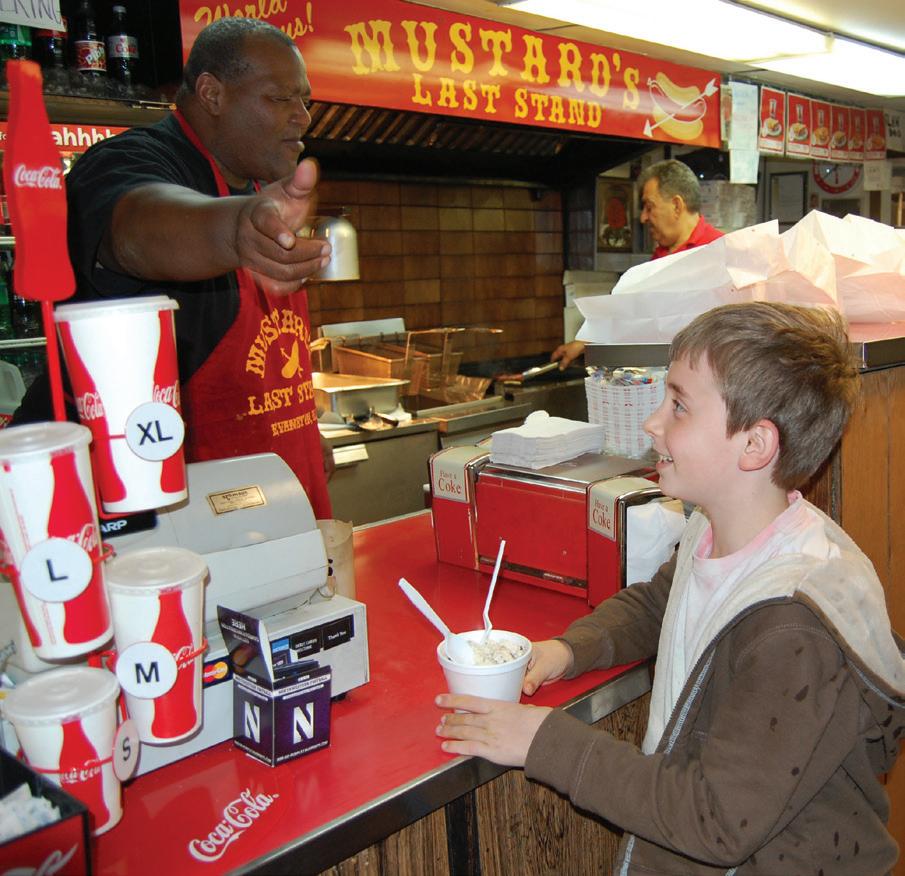
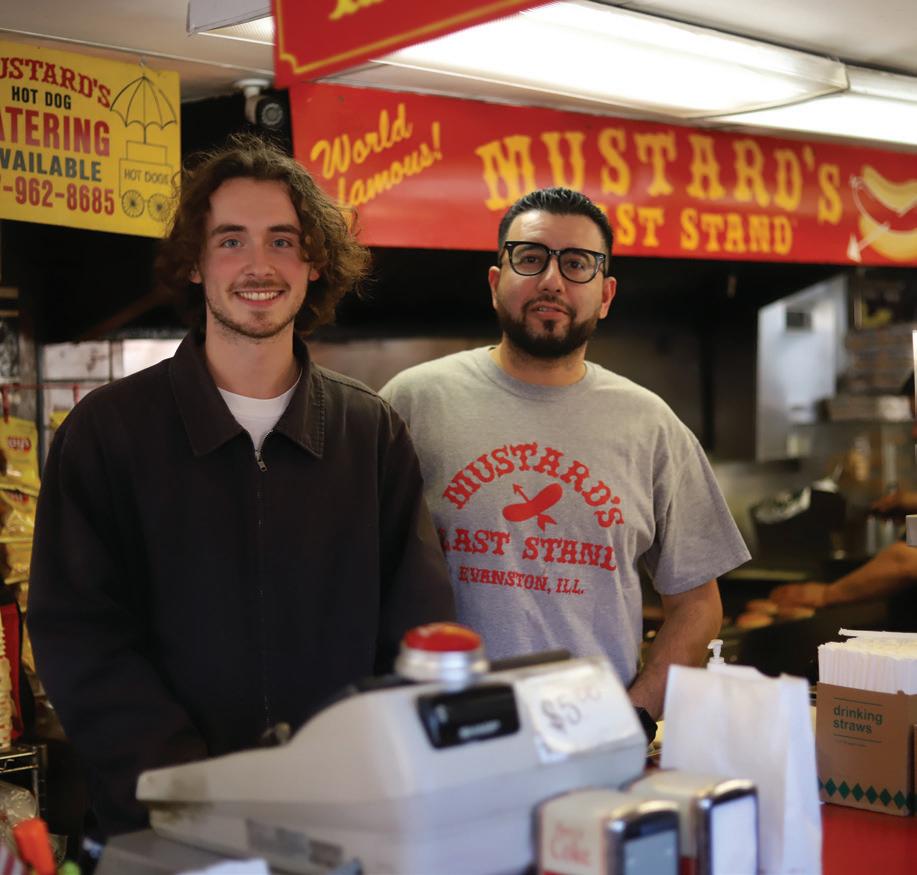
Franchere recommends visiting the more local Lee Street Beach in the warmer spring and summer months to get off campus. For what Franchere calls “the best sushi in Evanston,” he sings praises for Kuni’s Japanese, south of campus. In the fall, he suggests finding friends to visit an apple orchard or a pumpkin patch with.
“Nobody does it like we do,” Franchere says of Evanston autumns.
DAMIAN’S FAVORITE SPOTS: Kuni’s Japanese, Sarkis Cafe, Lee Street Beach
Damian Franchere celebrates his ninth birthday at Mustard’s Last Stand. Franchere, age 20. PHOTO BY ELOISE APPLEImmediately after committing to Northwestern, Weinberg fourth-year Sofia Boczkowski established rules with her parents, complete with a fake contract to ensure she didn’t take advantage of her proximity to home. Among other things, she wasn’t allowed to sleep, do laundry or take groceries from home.
Boczkowski refrained from relying on her parents, even when she had a hard time adjusting during her first year. Now, she sees her parents about once a month. While she feels staying in Evanston has sheltered her in some ways, she still appreciates having her family nearby.
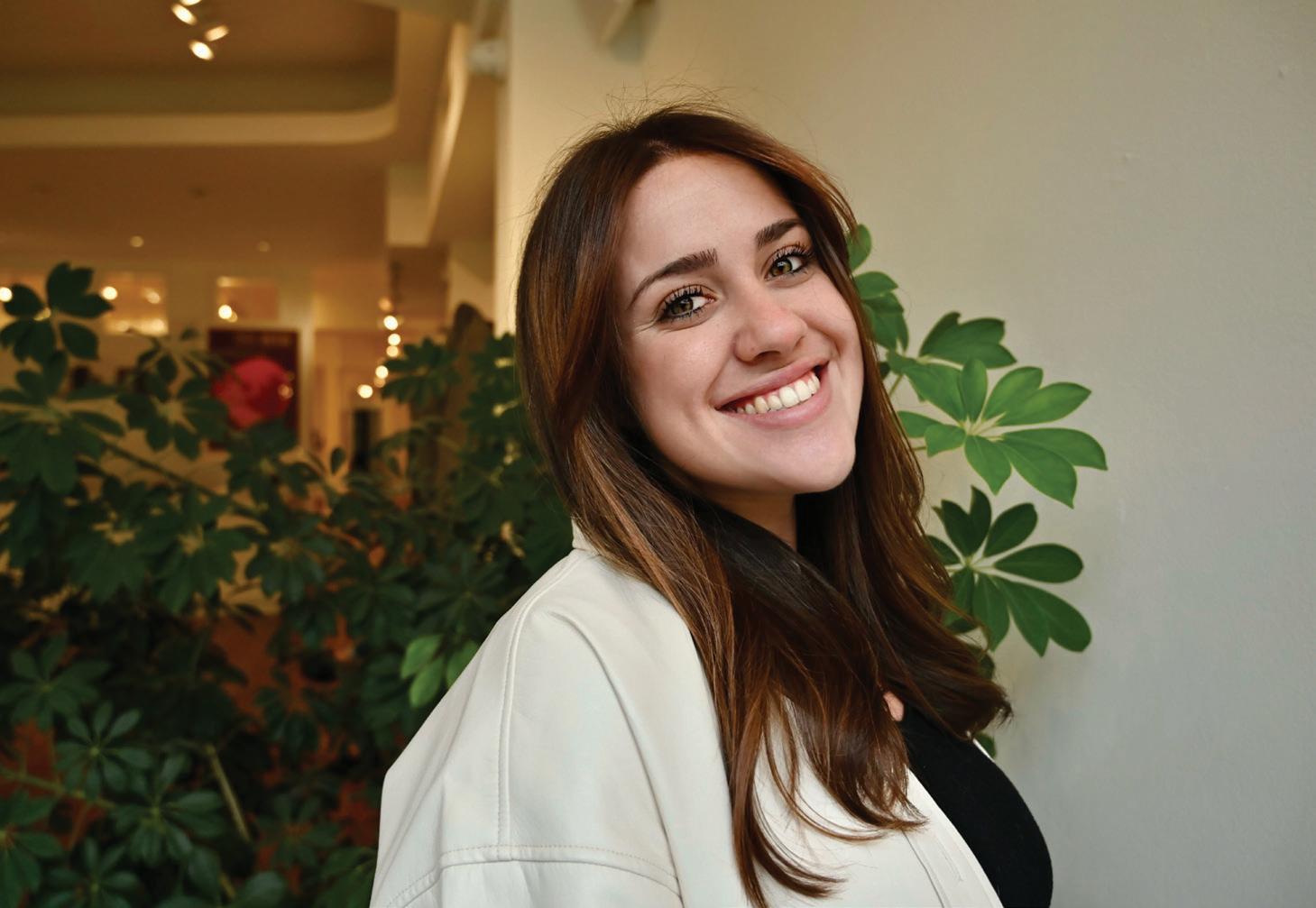
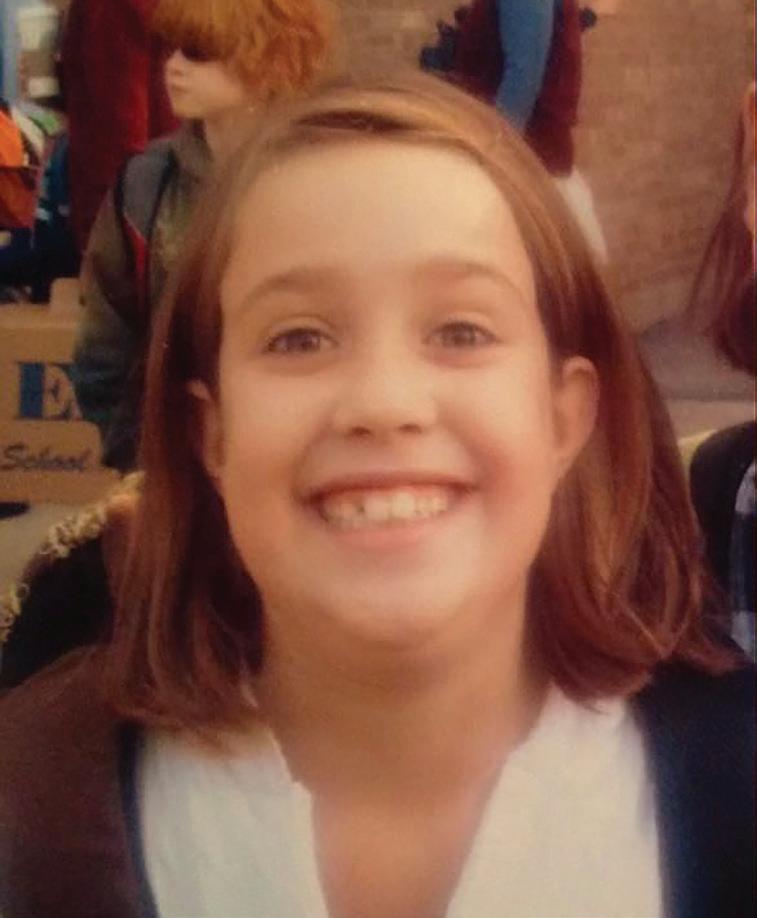
Northwestern played a large part in Boczkowski’s childhood. She participated in Northwestern University’s Dance Marathon several times and held multiple birthday parties in the Norris basement. As a teenager, she spent hours after school at tennis practice and tournaments in SPAC.
In high school, Boczkowski often hung out on Central Street, an area popular with Evanston Township High School (ETHS) students. She says downtown Evanston was more of a “Northwestern home base.”
The geographical divide is something many Northwestern students don’t see. Like Ng and Franchere, Boczkowski
thinks there’s a disconnect between Northwestern and Evanston. One way she sees that manifest is through Northwestern students’ false perception that Evanston is racially monogamous.
“Northwestern is not diverse at all, and I think that makes people from Northwestern see Evanston as non-diverse because the surrounding areas of Northwestern are wealthy, middle and upper-class Evanston,” Boczkowski says.
She also spoke about students lacking awareness of redlining in Evanston. Redlining occurs when specific groups of people, typically of a lower income or particular race, are steered toward living in a certain area. This can be done through banks denying loans or realtors only showing people of color homes in poorer areas. The practice creates geographical divides with economic and social consequences.
Boczkowski explained how this manifests on Evanston’s Gulf Road.
“One side of Gulf Road is predominantly upper-middle class white families and the other side, literally when you cross Bridge Street, you get into predominantly Black and
people of color-owned homes that are predominantly middle-to-lower class,” she says.
Boczkowski believes many students don’t recognize Evanston's socioeconomic divide because they’re often only familiar with the campus and Downtown area. She feels students incorrectly believe the Evanston world circulates around the Northwestern campus.
To remedy this, Boczkowski suggests more interaction between Northwestern and ETHS. Currently, the Northwestern/ ETHS Partnership Office is dedicated to facilitating more educational opportunities between ETHS and the University, reporting more than 100 partnerships with initiatives ranging from STEM diversity to college access and career preparation.
Her main suggestion for students to better immerse themselves in the Evanston community is to leave the Northwestern bubble.
“Talking to people outside of the Northwestern communities — talking to people who own businesses in general — is super important to understanding the Evanston that they live in,” she says.
SOFI’S FAVORITE SPOTS: Supreme Burrito, La Michoacana Chicago and other places on Howard Street
PHOTO COURTESY OF SOFI BOCZKOWSKI PHOTO COURTESY OF SOFI BOCZKOWSKI Sofi Boczkowski in elementary school.The lights go up on a small stage, revealing three student performers in front of MeeOw Comedy’s signature logo of a cat wearing glasses. The scene opens with a kid trying on shoes at a Foot Locker store. His mother insists he run up and down the aisles to make sure they fit.
The crowd bursts into laughter as Mom, Son and Foot Locker Employee role-play increasingly ludicrous scenes — a failed school dance, drug bust and court case — all tying back to the essential question: Do the shoes fit?
Northwestern has a thriving comedy scene and is home to a range of student improv, sketch comedy and satire groups. Several famous comedians like Stephen Colbert, Julia Louis-Dreyfus and Ziwe Fumudoh all call the University their alma mater.


The shoe sketch, written by Communication fourth-year Liv Drury,
came at the tail end of Mee-Ow’s show last winter. Mee-Ow, a student-led sketch, improv and music group, is one of eight comedy groups on campus.

Drury first entered the campus comedy community in her freshman year through The Titanic Players, another improv group. She later joined Mee-Ow in her third year. Her experience learning from the upperclassmen in these groups shaped the comedian she is today.
“The bulk of my education [at Northwestern] is what I’ve learned from my peers,” Drury says. “The older people of Mee-Ow taught me everything I know about sketch writing and how to write a good sketch, how to be a good voice in a writer’s room.”
During Mee-Ow writing sessions, students spend four hours a day, five days a week, writing and rewriting
skits. Each Winter Quarter, they workshop over a hundred sketches before narrowing them down to a dozen. They perform two shows, one midway through Winter Quarter and one at the end.
Writers are expected to bring in two new sketch ideas a day. Drury says the quick turnarounds and constant peer feedback have improved her writing.
“It can be a bit of a confidence hit if you have a bad show or delivered a sketch to an absolutely silent writers’ room,” she says. “The hardest part is to not take that personally and not let it get under your skin.”
As she prepares to become a screenwriter and director, Drury says learning to write spontaneously, quickly and without self-criticism helps her think outside the box.
The ways Northwestern comedians strengthen their funny bone.
Communication fourth-year Nena Martins came to Northwestern with no previous comedy experience. To overcome her fear of auditioning, Martins, a theatre major, decided to try out for a handful of student performance groups. Even after she made it into Titanic, her anxiety didn’t subside.
“It’s a bonding process that creates communities of people who are interested in the same sort of thing,” Cogswell says.
He also describes how sharing collective identities with others makes us more open to being made fun of. Like a friendship where each person mocks the other lovingly, Northwestern students are more willing to take jokes from a fellow Wildcat. People laugh about each other, with each other.
PHOTO BYALEX MIRANDACommunication second-year Diego Goldfrank agrees that laughing with each other creates a strong comedy community. Goldfrank, a member of several campus comedy groups like Northwestern Sketch Television, says that in his experiences doing improv or stand-up, the crowd is usually filled with members of other comedy groups.
“The best and worst thing is that you know everybody in the audience,” he says. “People want you to do well, so they’re going to try to laugh. But then if you bomb, you just have to leave and go to dinner with them.”
“There is nothing that’s so vulnerable to me like going on stage without knowing what you’re gonna say and trying to make people laugh,” Martins says.
Each year, Titanic admits a new group of mostly first and second-year students. These students work together as a team for the rest of their time in Titanic.
During their first two years, new Titanic members are mentored by upperclassmen members. After that, Mike Abdelsayed, alumni director for Titanic, takes over the coaching role.
Coaches teach new members improv techniques such as pattern work — the predominant joke and scene structures used when improvising. They practice varying characters and building scenes from audience suggestions so that the students feel more sure of their skills when it’s time to perform. After practicing and performing alongside the same team for four years, Martins says she now feels confident on stage.
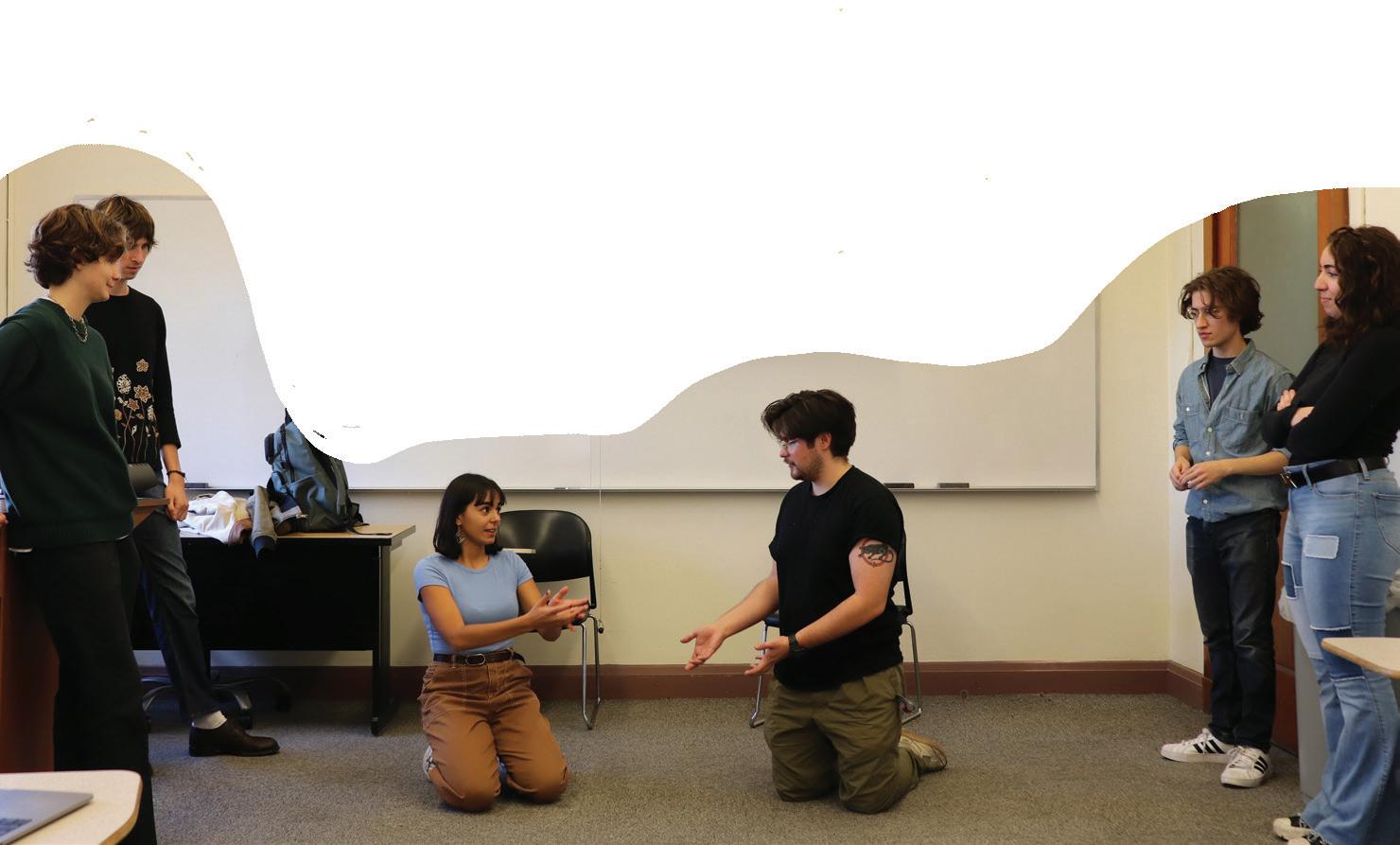
“It’s really about trusting each other,” Martins says. “Whenever you go on stage, whatever you say, everyone on your team is going to be backing you up.”
Visiting assistant professor Clay Cogswell, who teaches a course on humor in 20thcentury literature, says that campus comedy creates a unique social habitat where students laugh over shared experiences.
Goldfrank first tried stand-up comedy at a Glassbox show, a stand-up performance event hosted by satire publication Sherman Ave. Surrounded by talented peers, Goldfrank says he felt he had a lot to live up to, and he appreciated upperclassmen in Sherman Ave workshopping his material.
Part of learning within the comedy community is being humble, Goldfrank says. He’s learned not to take criticism of his material too seriously. While auditioning or performing alongside his Northwestern peers, Goldfrank says he’s “just happy to be there.”





Peer support is integral for the training processes within campus comedy groups. In their time at Northwestern, seniors like Drury go from learning from upperclassmen to becoming the coaches themselves.
This year, Drury is coaching Titanic’s newest cohort of comedians. She finds enjoyment in passing on the improv techniques taught to her by former upperclassmen.
“I’m glowing with pride at their shows,” Drury says. “Watching them grow has been one of my greatest joys at Northwestern.”
BY ALEX MIRANDA Titanic members (from left to right) Max Kroll, Nena Martins, Liv Drury, Eli Gordon, Samuel Buttress and Anelga Hajjar partake in an improv scene. PHOTOMy first class at Northwestern University took place in Harris Hall L07. Instead of focusing on the professor at the podium, my gaze fell on a blonde-haired girl donning a blue sweater. She was one of only three people in the room with blonde hair, an anomaly I had never witnessed. In my 30,000-person hometown of Holland, Michigan — known for the slogan “If you ain’t Dutch, you ain’t much” — blonde hair and blue eyes constitute the majority.
Rural communities are conducive to homogeneity, not only in appearance but also in attitude. Northwestern’s more diverse demographics can come as a shock to students from these areas.
As a multiracial student with an immigrant mother, I feel no connection with any one racial demographic group. I do, however, feel strong ties toward one category that isn’t measured by the University: students from rural communities.
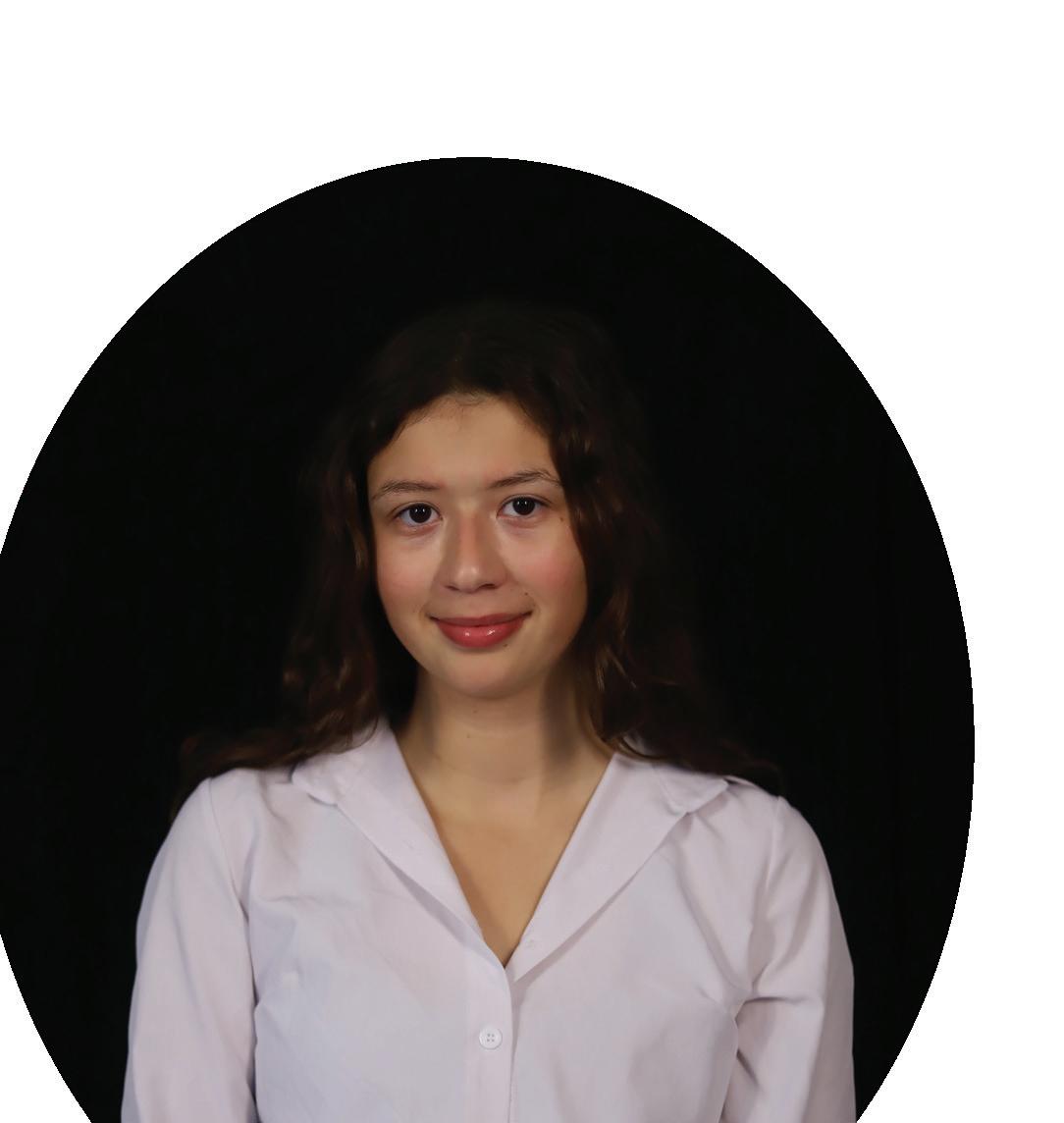
And after moving to the Chicago area, some rural students serve as intermediaries between the political, economic and social intricacies of these two worlds.
In the outskirts of Missouri’s southwestern territory, home of Netflix’s “Ozark,” lies Rogersville, Missouri, a town of just 4,000 people. Though most Rogersville residents attend Baptist church services every Sunday, McCormick third-year Ben Cox’s only connection to church came from his grandfather, a prominent Baptist preacher in the community. When people asked, “What church do you go to?” Cox’s response of “I don’t” was typically met with judgment.
Faith among Rogersville inhabitants was not the area’s only defining feature. In the 2020 election, Cox says a majority of the people in his town voted for Trump. He was part of the handful that did not.
“Someone would bring up a news story, and I would end up getting into an argument with everyone in the class,” he says.
Since coming to Northwestern, Cox says those arguments have diminished, as he shares similar political beliefs to the University’s primarily liberal student body.
Partly due to a clash in political opinion, Northwestern students often want to depart from the rural communities where they grew up. When they return home, it’s only to see family. Weinberg third-year Nathan Ryan returns to his 6,000-person town of Richmond, Michigan, during breaks
“Toto, I have a feeling we’re not in Kansas anymore.”
to see relatives. He says people in the Richmond area tend to live there their whole lives.
“From an early age, I didn’t really envision myself doing the same,” he says. “I realized how limited a worldview people could end up with.”
When Medill second-year Maria Heim revealed she was looking into colleges outside of New England, others in her hometown of Atkinson, New Hampshire, questioned why she wanted to leave. A self-described “ambitious” kid, Heim felt she needed a larger community than Atkinson’s population of 7,000.

“When I told parents, ‘This is where I’m applying to, and I want to go here,’ they would say, ‘Why?’” Heim says. “There were definitely some strange reactions and disconnect.”
In some ways, Heim says, Atkinson residents live in paradise. The seasons are beautiful: Skiing in the winter provides an even balance to country club summers. When someone leaves, the rest search for an explanation.
Ryan received similar reactions about attending Northwestern. A few suggested his decision was an act of defiance.
“I feel like people can have this weird attitude when you tell them that you’re going out of state,” Ryan says. “Maybe like, ‘What, is going to college in Michigan not good enough for you?’”
Ryan and Heim’s hometowns’ suspicion around their desire to leave may stem partly from the insular nature of small-town economies. According to Small Town Sustainability, a book by urban studies researchers Paul Knox and Heikie Mayer, many small-town economies are derived from generations of families employed in the same sector.
While the growth of suburban communities has skyrocketed over recent decades, rural communities have dwindled. A 2018 Vox article by Alvin Chang, “Those who leave home, and those who stay,” found people are more likely to leave their smaller hometowns during their late teens or early 20s in search of school and work, stripping rural communities of economic opportunity.
The economic state of rural communities is by no means bountiful, which leads to relocation in search of jobs, says Michael Allen, Northwestern alumnus and associate professor in the Department of History.
“There are two types of people in rural America: those who own farms and property that ties them to a place, and others who don’t and tend to move around a good deal,” Allen says.
There is indeed life beyond the rolling hills of Missouri, the forested areas of New Hampshire and the farmland of Michigan’s east coast. Ryan says the close-mindedness of Richmond, made his high school self question why moving to a community with more diversity — in all senses of the word — was so taboo.
Cox spent his first quarter at Northwestern taking remote classes in his hometown because of the COVID-19 pandemic. He says immersion in the Northwestern world from afar was “weird” and sort of a “middle ground.”
“It felt like something distant and different,” Cox says. “It was hard to feel like I was actually at school or in school or going to Northwestern.”
Once on campus, Northwestern’s proximity to the thirdlargest city in the country can prompt an adjustment period
At Northwestern, Allen works with first-generation and lowincome students through Student Enrichment Services (SES).
However, SES does not offer specific programming for those with rural backgrounds struggling to adjust to university. Technology is a limiting factor in communities where exposure to the outside world is sparse. Cox says it was only at Northwestern when he first used a TI-84 calculator, a graphing device necessary for post-secondary mathematics. He felt behind coursework wise due to his high school’s complete lack of AP classes.
“In introductory math classes, most people had already taken calculus,” he says.
Cox had not. ***
Now a senior about to graduate into the working world, I have spent many nights tabbing through cities across the globe for my next move. Memories of quiet, sandy beaches along the Michigan coast and European-esque, one-road shopping strips drift in and out of memory. In between the cracks of my upbringing lay a community stuck in their ways, with passive-aggressive comments about my or my mother’s racial makeup and anthems of religiosity interwoven with threads of white saviorism.
Some Northwestern students feel a disconnect from both the University and their rural communities. However, a few still return to their hometowns equipped with a new perspective. Others plan on taking what they have learned from home to new places.
Heim sees herself moving where the job market takes her, but she considers Atkinson a strong place to raise a family. As a computer science major, Ryan feels rural America is inopportune for his field.

Cox imagines living somewhere in the middle: an area without the constant buzz of Chicago or even Evanston, but not entirely quiet.
for students from small towns. Heim’s hometown is 371 times smaller than Chicago’s population, and she says confusion was the defining feature of her first year. The sheer amount of money students had shocked her, and she says she spent nights on the phone with her mom wishing to find students with similar experiences.
According to Allen, Northwestern wasn’t always cosmopolitan. In 1997, when he attended graduate school in Evanston, Northwestern mostly drew students from the surrounding midwestern area. At a school like Northwestern, Allen encountered students with greater cultural capital, which he says comes with a degree of intimidation.
The University has since risen to the 10th place in U.S. News’ rankings of the country’s best universities and pulls students from around the world.
“On the whole, I would say [expansion] is a good thing, but it can be one of those things that makes people from towns like mine feel they don’t fit,” says Allen, who hails from the 20,000-person town of Hays, Kansas.
For now, rural students are simply finding their way. Whenever Heim feels discouraged after losing out on an internship or failing to get into a club, she prides herself on her hard work and accomplishments.
“I think, ‘Hey, it’s okay because I’m still doing a lot for a girl who came out of this town,’” she says.
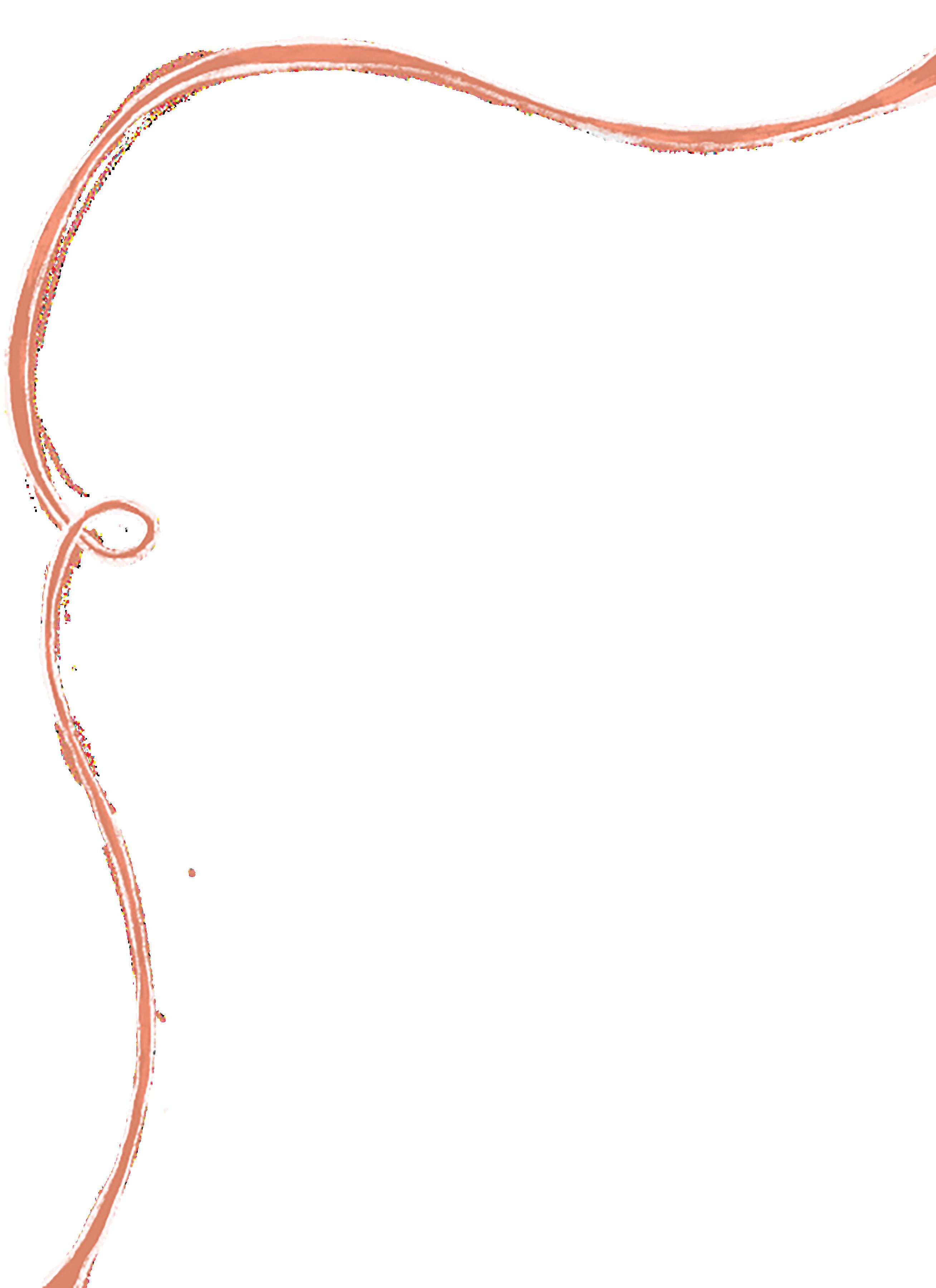 WRITTEN BY SAM BULL DESIGNED BY MICHELLE SHEEN
WRITTEN BY SAM BULL DESIGNED BY MICHELLE SHEEN
On Aug. 3, from her home in Seattle, Washington, Communication second-year Jillian Olson turned on her computer, opened up the TimelyCare website and went to therapy for the first time. Since then, Olson has completed six more TimelyCare therapy sessions.

“If I was going to an in-person therapist, it would probably be a lot harder for me to travel to get to them, and that would also then cost me money on top of therapy being expensive,” Olson says. “[TimelyCare] being so immediately available is very helpful to me, and you’re not limited to therapists in your area.”
TimelyCare, a 24/7 virtual third-party mental health care platform, provides students with free on-demand and appointment-based access to mental health professionals. Northwestern students can now access year-round support anywhere through phone or video calls using the TimelyCare app or its desktop website.

For both on-demand and schedule-based counseling, students check boxes for topics they’d like to discuss such as relationship concerns, depression or substance abuse. They then choose either a phone call or video chat to meet and talk about their selected concerns. Virtual group meditation, yoga sessions and health coaching for sleep, nutrition and stress management are also available. Katie Neal, assistant vice president of media relations for TimelyCare’s parent company TimelyMD, says Northwestern undergraduate and graduate students have used the platform’s services almost 1,500 times since the Northwestern-TimelyCare partnership began in April.
The implementation of TimelyCare comes after efforts to reform the inaccessibility of Northwestern’s Counseling and Psychological Services (CAPS), the
University’s primary mental health services platform. Dr. Shenay Bridges-Carter, CAPS’ director of clinical services, describes the addition of TimelyCare as a supplement to CAPS rather than a replacement.
“With TimelyCare, [it’s about] having options for students to receive mental health care and to know that CAPS does not have to be the only option that students have for receiving mental health treatment,” Bridges-Carter says.
McCormick fourth-year Sahibzada Mayed and other founding members launched Reform CAPS on Instagram in May 2021 to share undergraduate experiences and advocate for administrative change within CAPS. Mayed views TimelyCare as a temporary fix to mental health issues within the Northwestern community and says there still isn’t a dedicated intersectional organization for student mental health. The addition of TimelyCare did not meet all of Reform CAPS’ demands, which included hiring more diverse staff, reducing appointment wait times and requiring transparency on CAPS’ budget, average wait times and staff demographics.
The therapy app supplements Northwestern’s mental health service.is five minutes, and 40% of visits this year have been “after hours,” or outside the 9 a.m.-5 p.m. window.
“Our team follows up with each student 48 hours after the visit, and they could share any feedback there or any questions,” Waldron says. “They can always reach out to our 24/7 customer support team. We look into feedback; we want to make sure we’re offering the best virtual care possible.”
TimelyCare’s terms and conditions state that by signing up for the platform, students agree to let TimelyCare share medical (including mental health and psychotherapy) records to their university, but only licensed professionals can access them. Their information is not disclosed unless there is a safety concern, at which point CAPS steps in to provide additional assistance immediately.


“
“Even if telehealth isn’t your thing or you don’t find a therapist that you’re soulmates with, just having something to help right now is a really important thing that I think a lot more people on campus should take advantage of.”
– Jillian Olson, Communication second-year
Medill third-year and SteadyScrib co-founder Izzy Mokotoff’s grandfather has always been an avid writer. Writing is ingrained in his life: He’s authored everything from journalistic pieces to the handwritten letters he sends his grandchildren every week.
Mokotoff says her grandfather was diagnosed with Parkinson’s disease about a decade ago. As the symptoms of the illness — which include hand tremors, muscle rigidity and slower
movement — worsen, handwriting becomes an arduous task.
“About a year ago, he lost the ability to write the letters [to his grandchildren],” Mokotoff says. “He was typing them for a while, just because his Parkinson’s symptoms had advanced to a debilitating stage.”
When they met, Mokotoff and Alexis Chan, McCormick third-year and eventual co-founder of SteadyScrib, were neighbors in their sorority house. One night, Mokotoff shared her
grandfather’s story with Chan and the pair discussed potential solutions.
“Then [Mokotoff] comes back a few days later and was like, ‘Just so you know, I had so much fun talking to you and brainstorming. Do you want to make this a reality?’” Chan says.
That’s how they formed SteadyScrib, which aims to create the first manual writing tool designed specifically for people with Parkinson’s disease.
Bringing ideas to life is what The Garage’s summer pre-accelerator
 The Garage’s signature neon sign designating the workspace within the Henry Crown Sports Pavilion.
The Garage’s signature neon sign designating the workspace within the Henry Crown Sports Pavilion.
Getting to know the three winning teams of Northwestern’s competitive summer entrepreneurship program.
 WRITTEN BY JADE THOMAS DESIGNED BY VALERIE CHU & S. KELSIE YU
WRITTEN BY JADE THOMAS DESIGNED BY VALERIE CHU & S. KELSIE YU
program, Jumpstart, is all about. The Garage, located on the second floor of the Henry Crown Sports Pavilion, nurtures Northwestern students’ entrepreneurial pursuits with a special focus on initiative and community. It oversees 10 programs, including Jumpstart, throughout the year for Northwestern students interested in entrepreneurship.
In the span of 10 weeks, Jumpstart provides mentorship, workshops and a stipend to support teams’ ventures.
To apply for the program, teams must present an idea and have at least two members. Each team’s work culminates at Demo Day, where students pitch their ventures to a panel of judges for a chance to receive funding in addition to the $10,000 teams receive throughout the summer.
“We had everything from a musical instrument video game that [you play by rehearsing] your instrument, to a device for patients with Parkinson’s disease, to software that helps math teachers grade
and give feedback to math students,” says Mike Raab, executive director of The Garage.
Nine teams participated this past summer, including SteadyScrib, which placed first at Demo Day and took home the $4,000 first place prize as well as the $1,000 given to the audience favorite. Second place’s $3,000 prize went to academic feedback program Renota, and third place’s $2,000 prize went to gaming venture Overture Games.
According to Raab, Jumpstart students valued the wide variety of startups and came to depend on one another for advice and resources.
“A lot of the hurdles that student teams will face, others have faced before them,” he says.
Figuring out how to turn a latenight conversation into a working product was a journey full of hurdles for SteadyScrib. Mokotoff and Chan worked tirelessly to create a product that would help people living with Parkinson’s disease write with ease again.
The current product design has two parts: a magnetic pen with a wide, pliable grip and a metal clipboard. When individuals write on a sheet of paper using the clipboard, the magnetic pen latches to the clipboard underneath it. The strong attraction between the pen and the clipboard stabilizes the person’s hand, allowing them to write comfortably.
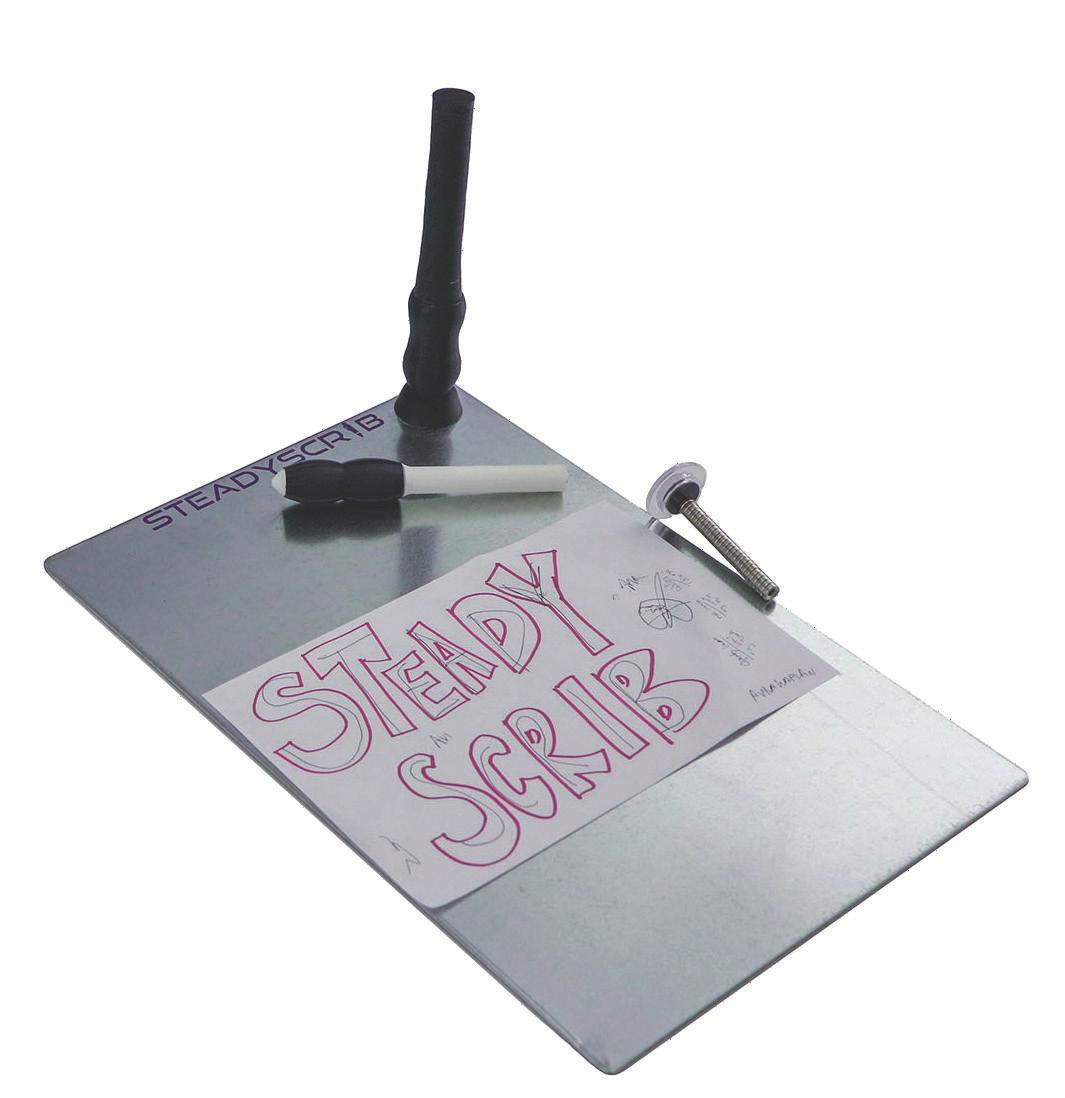
Chan’s first attempt at making the pen using a 3D printer resulted in a pen far too large for anyone to practically use. Her second build attempt went even worse: Instead of anything resembling a pen, the printer spit out a mess of spirals. In Jumpstart’s 10 weeks, Chan and

SteadyScrib co-founders Izzy Mokotoff and Alexis Chan brainstorming at their workstation in The Garage.
Mokotoff developed and tested 10 different pen designs.
“I’m gonna be honest, at the beginning, I didn’t really know where to start,” Chan says. “But I kind of just thought, ‘Well, we have to start somewhere.’”
Chan says each day was full of trial and error, but after around six months and the first six weeks of Jumpstart, she arrived at their current design. Unfortunately, the pair lacked one crucial puzzle piece in order to start receiving feedback from people living with Parkinson’s.
SteadyScrib’s most recent product model.
“We didn’t have enough money to pay a lawyer to write a patent,” Mokotoff says. “So Alexis and I wrote our own patent. We’re both undergraduate students, so obviously neither of us have a legal background.”
With advice from their Jumpstart mentor Casey Grace, founder of neurological device startup Hubly Surgical, along with existing patents on Google, the two third-years wrote their own provisional patent application. This
type of patent establishes a priority date for their product, meaning that if someone else were to make a product identical to theirs, Mokotoff and Chan would be awarded rights to the design over any future inventors. An attorney edited and filed the patent for a fraction of what the original cost would have been if they had paid a lawyer to do so.
Finally equipped with legal rights, Mokotoff and Chan could receive professional feedback. They partnered with Northwestern Medicine and Movement Revolution, a non-contact boxing program that specializes in neurological conditions. Twenty different individuals with Parkinson’s disease gave them verbal feedback on SteadyScrib, and 15 of the 20 preferred SteadyScrib’s product over a similar pen designed for general aging.
“It was exciting to see people being excited about our pen and physical therapists asking to keep our pen at locations for further physical and occupational, therapeutic use,” Mokotoff says.
Using the funding they received from winning Demo Day, SteadyScrib is now focusing on finalizing a nonprovisional patent application, which
 PHOTO COURTESY OF IZZY MOKOTOFF
PHOTO COURTESY OF IZZY MOKOTOFF
requires the formal approval of the United States Patent and Trademark Office. They also want to find a way to decrease their cost of production and examine all possible pathways into the market.

In light of their recent progress, Mokotoff and Chan say their core values always circle back to the man who inspired them in the first place: Mokotoff’s grandfather. At the time of her interview, she had just received a special package.
“I just got my one [letter] for this week. I read it this morning,” Mokotoff says. “The best part of this whole process is being able to watch my grandpa write again.”
classes and assignments for students to upload work. The product’s software automates individualized feedback on each assignment, substantially reducing teacher workload.
“Ninety percent of my time was just figuring out what they did wrong. It was all procedural,” Erichson says. “Why is there a plus sign here? Why is this a six and not a 12? That took so much time and felt like something that a computer could be able to do.”
Erichson first identified this issue while in college, but he didn’t start toying around with potential solutions until after graduation. He worked in consulting for a few years and set the problem aside. When he came to Kellogg for graduate school, he says the academic environment resurfaced old memories.
Jake Erichson is a second-year graduate student in Kellogg’s Multidisciplinary MBA/MS Design Innovation Program and the founder of Renota, an academic feedback program. The concept behind Renota first came to Erichson while he was an undergraduate teaching assistant (TA) during his undergraduate years.
As a TA, Erichson spent around 8-10 hours a week grading problem sets. He says the feedback he provided was valuable for student’s development, but it took him too long to identify the issues in understanding and to consolidate edits. Renota takes on this repetitive task by catching small mistakes that math teachers would spend hours individually correcting, like a plus sign that should have a minus or simple arithmetic errors. Teachers can then focus their time on addressing more substantial errors that target conceptual misunderstandings.
The product also incorporates an online learning management program similar to Canvas or Blackboard. Teachers can create

When Erichson learned about Jumpstart, he saw the opportunity to fully dedicate himself to pursuing the concrete objectives for the software he had dreamed up years prior.
“We want our software to understand what the student is writing and point out where they’re going wrong,” Erichson says. “Then [it should] give the students some of that immediate feedback and give the teacher a snapshot of ‘Hey, here’s where your students and your class overall are struggling.’”
But Renota can only be successful if classrooms are willing to give it a shot. Erichson says the software’s greatest challenge over Jumpstart’s ten weeks was finding schools that would be willing to pay for a trial in the fall.
“In schools, it’s really challenging to get through the budget process and approval. There’s a lot of steps that you have to walk through before you get there,” Erichson says. “It’s heartbreaking when, you know, this is my baby.”
Despite the team’s struggles this past summer, Renota was able to
A communal workstation available to Garage residents as they develop their ideas and products.tout a few victories. This fall, Renota will be implemented in two area schools, Evanston Township High School and North Shore Country Day School. Three teachers at each school will be implementing the program, so the trial group will consist of six different classrooms in total.
Despite being a fourth-year Bienen School of Music student, Aspen Buckingham says he hasn’t practiced piano seriously for a year. Years of practicing and coursework as a music major inevitably resulted in Buckingham feeling burnt out.
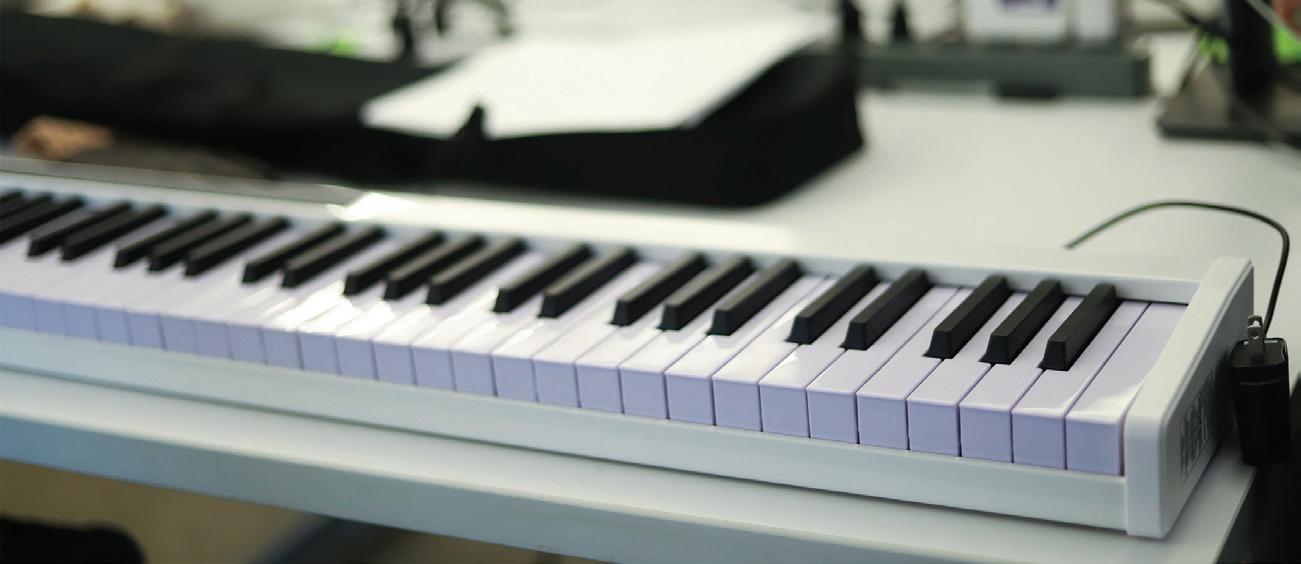

As a result, he became interested in games. Buckingham started attending game jams hosted by the game development community at Northwestern. At these events, participants have a few hours to create a game of their own. At one game jam, he met McCormick third-year Erin Park.
“I developed some games that I could play that got me excited to practice again,” Buckingham says. “I was talking to Erin, and I’m like, ‘Do you want to make this game that combines music, games and technology?’”
That’s how the concept behind Intervallic, Overture Games’ musical instrument practice game, was born.
One day, Buckingham says he remembers overhearing an intriguing conversation between Weinberg third-year Steven Jiang and another student at The Garage.
“I overheard him talking to another student wanting to make this app that helps music students practice their instruments, that helps them get more focused and excited about playing music,” Buckingham says. “I realized, ‘Oh, my gosh, Steven wants to solve the exact same problem.’”
The trio set out to create their own game where the main objective is for students to have fun with their music rather than just learning it. They researched the competition: Some games were too costly, others were too boring and the rest focused on teaching beginners how to play the piece rather than intensive practice for musicians. None focused on the joy derived from playing music.
Buckingham, Jiang and Park conducted over 100 interviews with parents, teachers and middle and high school students about what they look for in a game. Buckingham says

student interests drove their product development, even if this meant starting from scratch.
“We got about three weeks in, and we realized, ‘Oh my goodness, we are making a game that no one is really looking for. They’re actually looking for something completely different,’” Buckingham says.
Overture Games’ research culminated in Intervallic, a game where musicians can practice their pieces with a MIDI keyboard, a piano-style keyboard connected to a computer. Imagine a game like Subway Surfers or Temple Run where the player moves their character on screen to avoid obstacles and collect coins. The frustration of only making it so far and having to start over makes these games addicting. Depending on how accurately users play their pieces, the character can move farther along and collect coins, incentivizing playing and ultimately practicing.
Jiang, chief strategy officer of Overture Games, says everyone is on board to work on the startup full-time.
“We do want to work on this venture after we graduate,” Jiang says. “I think the whole team is trying our best to make that happen.”
Overture Games working on game development at their assigned table in The Garage. Overture Games’ MIDI keyboard that players use to navigate Intervallic PHOTO BY ELOISE APPLE
 WRITTEN BY ASHLEY SANCHEZ // DESIGNED BY S. KELSIE YU
WRITTEN BY ASHLEY SANCHEZ // DESIGNED BY S. KELSIE YU
Northwestern assistant professor of political science Kimberly Suiseeya’s path to research started while advising conservation projects on engaging with Southeast Asian communities. Her position as a biodiversity practitioner required time-consuming meetings between researchers and community members. But for the latter group, whose lifestyle depended on collecting, growing and harvesting food, that time commitment presented a much larger burden with little in return.
“I truly didn’t understand why we would continue to do things that we knew didn’t work,” Suiseeya says. “And when I couldn’t see myself as a change agent, that’s when I knew I had to go and pursue research.”
After obtaining her doctorate in environmental science and policy from Duke University, Suiseeya turned to environmental research. She sought to rethink representation
in the field by examining who is at the table when decisions are made.
According to the University of Minnesota’s guide on conducting anti-racist research, the U.S. has a long history of funding research that suits white interests. Through this lens, studies done on underrepresented communities can have biased results, harm the communities involved and foster distrust toward researchers and institutions. A predominantly white research facility like Northwestern can replicate these systems of unjust research. Suiseeya, among other Northwestern researchers, aims to change this.
Suiseeya says one way for researchers to give back to the communities they study is through “slow research,” a practice that prioritizes building relationships with communities, listening to their needs and learning from them. However, she adds that it’s difficult to get funding for slow research projects,
as academic and research-funding institutions often don’t recognize them as sufficiently rigorous.
Feinberg research assistant professor Jagadīśa-devaśrī Dācus’ projects focus on how Black sexual minority men can stay HIV-negative. Dācus, associate director of the Institute for Sexual and Gender Minority Health and Wellbeing, began his work before the large-scale distribution of PrEP, a medicine that reduces the risk of contracting HIV. He says that while Black sexual minority men are the most burdened by the HIV epidemic, research is only now beginning to look in-depth at how more than half of the population was able to stay HIV-negative.
One challenge Dācus faced when starting his research was a lack of funding to support his specific
Investigating harmful research on underrepresented communities and how researchers are advocating for more ethical procedures.
line of investigation. It wasn’t until he was published 3-4 years after starting his research that he began receiving federal funding from donors such as the National Institute of Mental Health.
“Funding drives research and then research reports funding,” Dācus says. “It’s kind of like a cyclical thing.”
Moreover, Dācus says most researchers who conduct HIV research with Black populations are not Black, so diving into the research initially made him feel like a “lone soldier” in the field.
According to a 2021 Pew Research Center poll, Black and Latinx people of color are underrepresented in STEM research. Dācus says greater diversity is crucial, since researchers who come from communities that are the subject of research have unique insights from their lived experiences. These insights allow them to bring more nuanced context to analysis.

“One of the things I pride myself on as a Black gay male researcher doing HIV work with sexual minority men is that I can draw public experience, although my experience is not necessarily applicable to everybody,” Dācus says.
He adds that those who conduct research on populations they belong to might have access to resources others may not. Dācus says that his sources spoke to him more openly than they may have with a researcher who didn’t belong to their community.
“Many of them would assume, ‘Oh, he’s going to get it, so I can be very frank,’” Dācus says. “I’m going to be respectful of their experiences as Black men and as Black sexual minority men at the same time.”
From his research, Dācus developed what he calls the “Black Resilience Degree,” which breaks down the factors that contribute to Black sexual minority men’s ability to remain HIV-negative.
“Fundamentally, the reason they’ve been able to be [HIV]-negative is really built on how they were taught to survive as Black boys and young Black men in a world that is anti-Black,” Dācus says.
At an early age, parents — primarily mothers — as well as peers and other adults informed them on how to maintain their sexual health. Dācus found that Black sexual minority men draw from these experiences to protect themselves from contracting HIV.
Studies on HIV have mainly focused on acquisition and transmission, with research emphasizing precautions that aren’t taken rather than working safeguards. When Dācus began his studies, he says other researchers insisted he include HIV-positive men. However, Dācus felt it was important to focus on HIV-negative men in order to acknowledge successful preventative measures. Initially, some criticized his perspective, thinking it implied that people who contract HIV are deserving of it — a claim Dācus strongly refutes.
“One of the things I pride myself on as a Black gay male researcher doing HIV work with sexual minority men is that I can draw public experience, although my experience is not necessarily applicable to everybody.”
- Jagadīśa-devaśrī Dācus, Feinberg research assistant professor
“The Black men who are living with HIV that I had either had contact with or professional relationships with would say, ‘Thank you for talking about a different aspect of our lives,’” Dācus says.
Jenna Trost, a second-year chemical engineering Ph.D. student at Northwestern, conducts research on the community effects of mining highpriority minerals used in technologies that reduce greenhouse gas emissions. Working with a cross-disciplinary team of engineers and social scientists through the Buffett Institute for Global Affairs, Trost’s group strives to ensure the technologies they implement do minimal harm to the environment. They also seek to guide researchers and policymakers to conduct the most economically sustainable and socially beneficial mining processes.
Trost wasn’t always focused on the broader purpose of the research. Initially, her concentration was solely on building technologies. It has since expanded to considering the impacts of her projects on surrounding communities.
She credits two experiences for widening her considerations. This past summer, she worked with locals in Chile to gain the community’s perspective on mining. As an undergraduate at University of Colorado at Boulder, she worked on a project about energy and water access in Sub-Saharan Africa.
“[That experience] really opened my eyes to realizing that research is much more than just a little tiny problem,
and that even as an engineer that likes the technical stuff, I still need to open up and look at all the social implications,” Trost says.
Medill professor Patty Loew, who is Mashkiiziibii-Bad River Ojibwe, recalls a prime example of exploitative research on underrepresented communities: When researchers first began extracting Pacific yew trees from Indigenous lands in the northwest United States to study their medicinal properties, the Indigenous communities complied. However, by the time the research had been done, nearly all the yew trees — which are sacred to the Indigenous people in the region — had been depleted.
Loew says that although researchers claim to conduct research that improves the communities they study, the communities often don’t see social or monetary benefits.
“When somebody shows up and says, ‘You know I’m here to save you, and this is what I’m going to do for
you. This is the kind of research that I want to do on you and your people,’ be afraid,” Loew says. “Be very, very afraid.”
Northwestern assistant professor of sociology Beth Redbird is a member of the Choctaw Nation of Oklahoma and grew up in a borderland, or the land surrounding a Native American reservation. She says that some nonIndigenous residents of borderlands perpetuated inequality through engaging in systemic injustices, including racial bias in policing and violence against Indigenous individuals. Her most recent research examines the legal, economic, cultural and conceptual boundaries between Indigenous and non-Indigenous groups in these borderlands.
Redbird says that social science has historically been used as a tool to aid in Native American erasure. Surveys delineated by race generally lumped Native Americans into the “other” category, which led to a lack of data on topics such as the rates of child poverty, voting disenfranchisement and hate crimes.
“When you study Native inequality, the work that has come before you can tell you a lot,” Redbird

says. “But, in the Native context, it has also been weaponized and has been very destructive.”
Social scientists frequently enter communities and study people as if they could be put under a microscope, Redbird says. She believes communities should both participate in and help drive research to create the next generation of knowledge.
“We want to do research with communities, not on communities,” Redbird says. “We want research to be affirming of Native values and lifeways and traditional knowledge.”
Some tribes, like the Bad River Band of Lake Superior Chippewa, have started implementing their own research protocols in recent years. Loew says that under these protocols, community leaders would have the ability to decide whether they will participate in research. While protocols vary by tribe, some require researchers to go before the tribal council in person to explain their research and answer questions, while others have a council of elders that examine research proposals.
“The power is getting more in balance now between the researchers and the researchees,” Loew says.
The Center for Native American and Indigenous Research (CNAIR) was founded in 2015 with the aim of advancing scholarship, teaching, learning and artistic

Loew and Annelise Riles, executive director of the Northwestern Roberta Buffett Institute for Global Affairs, helped facilitate conversations between CNAIR and the Buffett Institute. In November 2019, the groups partnered with Indigenous scientists and an interdisciplinary team of researchers from various universities. Together, they conducted conservation research on the Great Lakes and examined how climate change disproportionately impacts Indigenous communities.
“We had a research methodology which was not to assume that we knew what the Ojibwe communities that [the Great Lakes Indian Fish & Wildlife Commission] represents needed, but rather relationship-build with them and see if our two entities could gel in a way that was beneficial for both,” Loew says.
or cultural practices related to Native American and Indigenous communities. Given how research has marginalized underrepresented groups both as researchers and as research subjects, Loew, inaugural director of CNAIR, says the Center is crucial to helping Northwestern researchers improve conduct.
This type of research is important because the outcomes allow Indigenous people to protect their way of life, Loew says. If Indigenous communities have to go to court to fight against environmental threats, it is useful to have scientific evidence like data on air and water quality to support their case.
When Loew first saw a graphic summarizing the Great Lakes
“We want to do research with communities, not on communities. We want research to be affirming of Native values and lifeways and traditional knowledge.”
- Beth Redbird, Northwestern assistant professor of sociology
conservation research, she teared up because it involved the Ojibwe worldview of orders of creation and ascending dependency, which view humans as dependent on the elements, plants and animals.
“It’s the kind of research that I’ve waited my whole life to see conducted in my community,” Loew says.
In her latest project, Suiseeya, a faculty affiliate of CNAIR, is working with multiple Ojibwe nations to better understand the ethical impacts of research on Indigenous peoples and how research can be useful to the communities. In this way, Suiseeya says communities can advance their own aspirations and well-being.
“There’s a lot of distrust between Native American communities and the academic community,” Suiseeya says. “We’re trying to be much more respectful partners, but we have to confront that reality. That’s the history that we’re going in with.”
According to the Northwestern Office for Research’s 2021 Research Activity Report, Northwestern

researchers received a total of $893 million in awards during the 2021 fiscal year. Loew says one of the ways researchers can be more respectful toward the communities they work with is by distributing some of these funds to them. Grants allow researchers to pay for everything they need to conduct the research, which should include compensating communities for their time.
Another way to give back to the community, Loew says, is to perform mutual capacity building, which means that members of the community are learning and being credited for their contributions. As a professor, she brought a group of students to the Oneida community to learn more about food sovereignty. In exchange, the students engaged with the community by spending the weekend picking, shucking and braiding corn.
Through using his research findings to develop curricula and advise on public health policy, Dācus has influenced funding, programming and practices that impact Black communities.
“I have been able to really contribute to a whole body of knowledge that offers counter-
narratives around how Black communities are not necessarily homophobic — but also, if I can just be frank, how brothers are doing things that are right,” Dācus says.
Loew lists the five Rs — respect, relationships, responsibility, relevance and reciprocity — as a simple way to determine if research will be community-centered rather than extractive.
She says that some universities have difficulties adhering to the responsibility aspect because often, certain information from Indigenous communities is not meant to be shared outside the community. Furthermore, given historic relations between Indigenous people and non-Indigenous researchers, she says researchers that work with Indigenous communities need to emphasize relationship-building and think about reciprocity to determine what to both give and take.
“Academics have certain privilege that comes with power and federal money and all sorts of things,” Loew says. “So, go into those relationships with humility.”

Northwestern students share dangerous experiences from their outings and give advice on how to stay safe while partying.
At a Chicago bar in the beginning of Fall Quarter, Weinberg second-year Barb Burns saw a student cornering her friend into a wall. Burns says the pair was hidden in plain sight, standing right next to the populated dance floor, but amid the chaos of strobe lights, the crowd and loud music, no one seemed to notice the unwanted advance.
When Burns saw her friend angling away from the student, she approached her and asked if she wanted to go elsewhere. She took her hand, and they disappeared into the crowd together.
“I think a lot can be said for what’s not spoken,” Burns says. “Especially when there are people around, when you’re under the influence of whatever substance, it is hard to get out of a situation.”
With the possibility of incidents like this, Burns and her friends take certain precautions when they go out. Safegaurds include sharing locations via cell phones and ensuring that they travel in groups. Throughout the night, they check up on each other to make sure everyone is comfortable and that they’re up-to-date with exit plans. They also cover their drinks with their hands — or with lids, if available — and sometimes bring pepper spray.
Nightlife as a Northwestern student can be overwhelming. In addition to the overstimulating atmosphere, students must consider how to drink safely, coordinate transportation and navigate interactions.
According to Northwestern’s 2016 Alcohol Data Dashboards, 87% of students have consumed alcohol at least once in off-campus residences. Bars, restaurants, fraternity houses and dorms are other common places for drinking and parties. While the majority of events hosted by social clubs have safety protocols, students must also adopt ways of looking out for themselves and their friends.
ShaafiGreek organizations have a number of University-mandated and personally set rules meant to ensure student safety at events. Northwestern Interfraternity Council (IFC) president and Weinberg second-year Shaafi Flener says all fraternities must register their upcoming events with the IFC. If the event is offcampus, it must also be registered with the University. The registration process keeps fraternity events on record and requires them to adhere to a standard of safety.
While alcohol is prohibited in campus venues, it is allowed in off-campus events if the space is registered with the University and all participants are over 21. A fraternity must contact venues with a safety checklist that the IFC and the University’s Office of Fraternity and Sorority Life approves to ensure it is up to University policy. This criteria includes a requirement to provide free water, closed containers for any drinks, safe fire escapes and a bouncer at the door to confirm attendee ages.
Flener is also trying to develop rotations of IFC risk managers that will visit local venues in advance for background checks to provide additional security. While fraternity-hosted events already have certified risk managers, he plans to have one additional IFC risk manager for every 10 attendees.
Last year, the Office of Community Standards (OCS) investigated Alpha Epsilon Pi and Sigma Alpha Epsilon for alleged non-consensual druggings of multiple individuals at the fraternities’ houses. In light of those events, Flener hopes to heighten the standards of event hosting and improve methods of fraternity accountability.
“I think one of the biggest problems with accountability has been that we haven’t had things like [rotations of risk managers] in the past,” Flener says. “We haven’t had things like standards and boards to actually say, ‘Hey, these things happened. What are we going to do about it?’”
His goals for the IFC are to set stricter rules for venues, promote IFC and University violation forms and be more involved in student policy violations.
Fraternities are required to report all policy violations to the University so that OCS can investigate the case. The IFC reviews the OCS ruling and decides a method of punishment, including options like a student’s removal from the fraternity or a fine. Only the University can expel a student from the school, but OCS investigations are taken into account when determining expulsion decisions. Flener hopes that the IFC will take a more active role in investigating cases and evaluating OCS rulings.
“The biggest idea is that the fraternity is not worth as much as someone’s personal well-being,” Flener says.
Weinberg second-year Sammie Hesekiel, a member of the sorority Delta Gamma (DG), says that cups supplied at Greek life parties now have lids to avoid drink spiking. She adds that she feels safest at Greek events because their attendance is generally composed of the same people each time. The sense of familiarity gives her comfort.
“It’s good because almost always you’re at places where other DG people are so you could turn around and you’ll always see a familiar face,” Hesekiel says.
university-based
university-based university-based
The biggest idea is that the fraternity is not worth as much as someone’s wa personal well-being.
“ “ “ “ “ “- Flener, NU IFC president and Weinberg second-year
Cultural affinity groups on campus are another facet of the Northwestern social scene. Student-run organizations like Chinese Students Association (CSA) and the Korean American Student Association (KASA) host events for undergraduates interested in connecting with others of the same culture or learning about a new one.
In the first mandatory meeting for new KASA members, the executive team presents slides about rape culture and sexual assault. They highlight the club’s zero tolerance policy for sexual assault, battery, rape, stalking and hazing and tell inductees about the club’s blacklist, a record of individuals banned from KASA events.
In addition, they talk about the significance of power dynamics in East Asian cultures.
“Not only Korea, but East Asian culture in general, if someone’s older than you, they’re superior in a sense,” says Weinberg fourth-year Sean Lee, wellness chair of KASA. “A lot of underclassmen might do something even if they don’t want to, because that’s just kind of how the culture revolves.”
McCormick fourth-year Haolan Zhan, co-president and former social chair of CSA, says they assign volunteers or executive team members as risk managers to check on members’ safety and well-being during their events.
CSA also has an anonymous feedback form where members can inform the executive team of any dangerous incidents. Zhan says the team has a written procedure based on how the school defines sexual assault, which can result in the perpetrator being removed from the organization. CSA gives the survivor agency to decide what happens after, because Zhan believes the school can sometimes do more harm than good when dealing with sexual assault cases.
“It’s honestly how best you want to support survivors and the people involved,” Zhan says. “Things should happen at their pace and what they’re comfortable with.”
Before first-years set foot on campus, they are informed on topics surrounding alcohol, consent and sexual assault through the University’s mandatory True Northwestern Dialogue (TND) seminars.
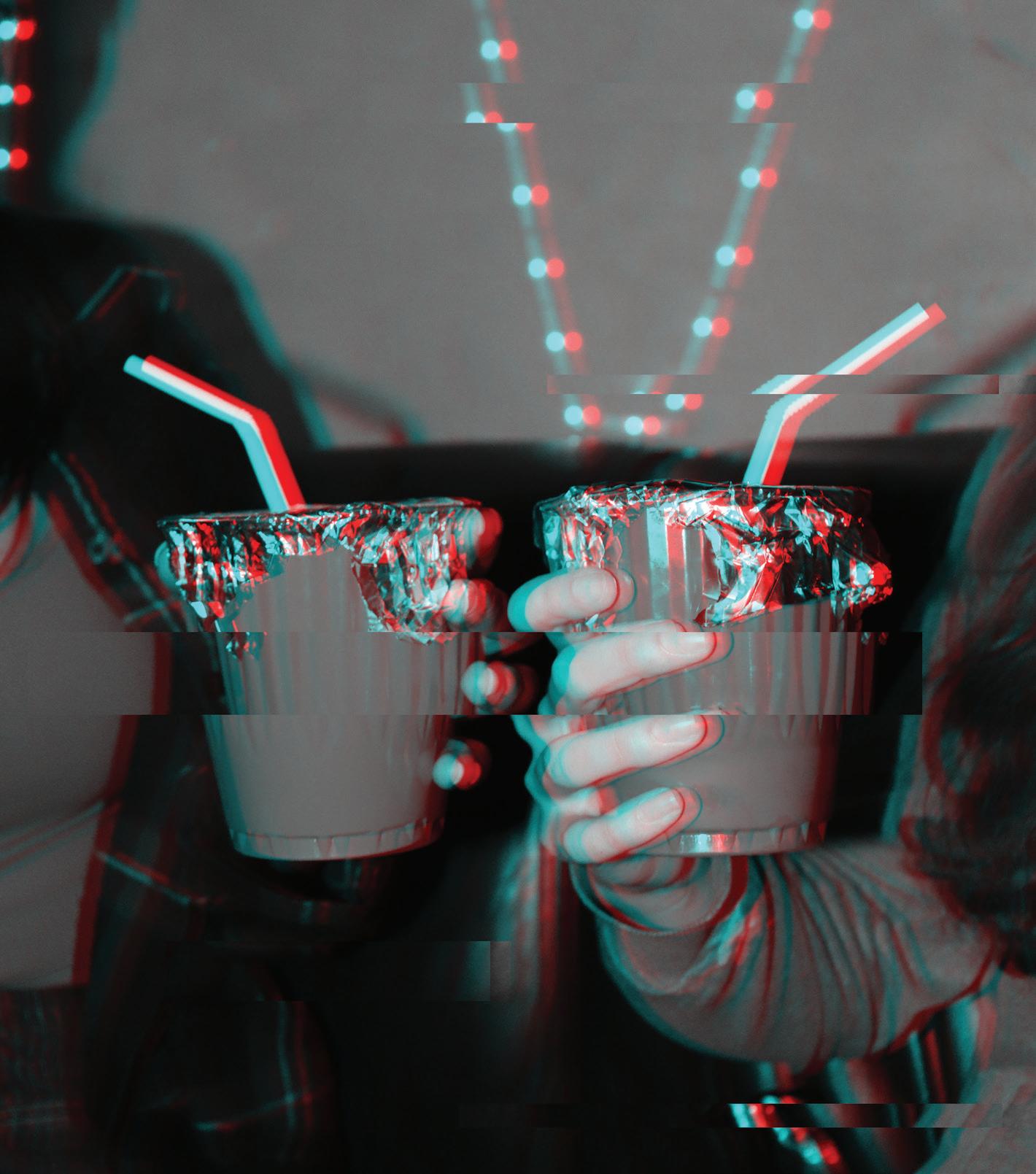
During Wildcat Welcome, incoming students continue TND programming through a combination of large group presentations and small group dialogues led by student Peer Advisors (PAs).
In one dialogue called the “Student Body” TND, students attend a peerperformed play about consent and sexual assault before breaking into smaller groups to discuss Unversityscripted questions and debrief.
Weinberg second-year and PA Andrew Guo says the discussions he facilitated with his PA group often went beyond the script given to him by the University. One time, a student asked him what to do at a party if they saw a friend interacting with a seemingly dangerous stranger.
“There are so many real life situations that we’ve been through that the script doesn’t cover but the freshmen really want to know about,” Guo says. “When our personal experiences come in, that definitely helps a lot.”
McCormick second-year Lena Sylvan adds that discussions with her PA group often turned to discontent with what the University covers in TNDs. She says her group felt that the curriculum left students behind by assuming that first-years knew about concepts like bystander intervention. These honest evaluations helped create meaningful discussion.
“It was beneficial for them to critique the TND because it challenged them more to think about what was wrong: Where were the gaps? What are the gaps? Do we all know what those gaps are?” Sylvan says.
The TNDs also highlight the Amnesty through Responsible Action protocol.
This policy withholds disciplinary actions for students who have been caught drinking underage if they’ve called for medical assistance due to alcohol or drug consumption.
According to data from the OCS, Northwestern issued 121 amnesties in the 2020-2022 school years. Second-year Joel* was granted amnesty in Fall 2021.
It was the first time Joel* had ever drank beyond his limit. After showing up to his friend’s dorm on North Campus, he began taking shots of alcohol without drinking water or eating an adequate amount of food.
“I think what happened is that after I blacked out, I kept on drinking. And then I got to the point where I was throwing up and I was dehydrated, but I couldn’t drink water,” Joel* says.
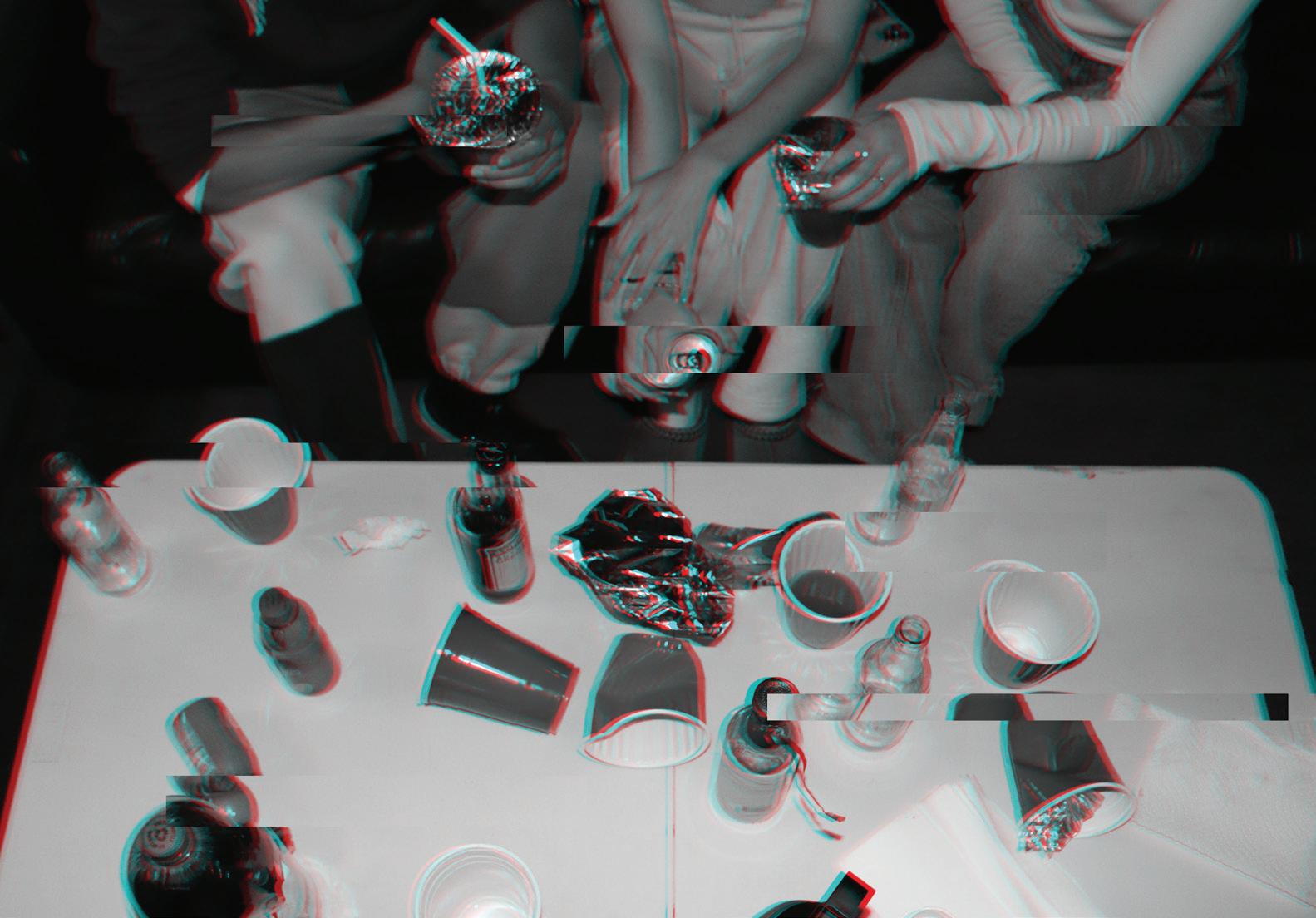
While Joel* doesn’t remember much from that night, he does remember the immense amount of pain he experienced from drinking too much. Extreme dizziness, stomach pain and a headache caused him to slip in and out of consciousness on his friend’s floor.
“I was really freaking out because it was my first time being so intoxicated,” Joel* says. “At the same time, I really felt like shit.”
The next thing he knew, his arms were around his friends’ shoulders, and they were walking back to his dorm in Shepard. Joel* decided that the pain was too unbearable and asked his dorm’s security officer to call an ambulance.
Joel* woke up in the hospital the next day with an IV in his arm and nausea medication on his side table. He left the hospital shortly and received an email from Residential Services about the incident that asked how he was doing and when they could meet to discuss his amnesty.
On a Zoom call, the residential director informed him that he was granted amnesty and would not receive disciplinary sanctions because he’d asked for the ambulance himself. Joel* was then asked about what happened that night and informed him that his parents would receive a letter about the incident.
“I remember being quite nervous,” Joel* says. “I was worried I would get in trouble, or my friends who I was with in the party would get in trouble, but ultimately nothing like that happened.”
For Weinberg fourth-year Max Honzel, cultivating safe party culture requires efforts beyond situational precautions. Honzel is the external director for Masculinity, Allyship, Reflection, Solidarity (MARS), Northwestern’s masculine-identifying peer education group that focuses on combating rape culture, promoting healthy sexuality and challenging perceptions of masculinity on campus.
In practice, Honzel says being survivor-centered includes maintaining an awareness of triggers in discussions of sexual assault. It also involves reflecting on how men can dominate these conversations in ways that inhibit other voices from being heard.
Within MARS, members reflect on the impact of masculinity on their lives and relationships. On campus, they host workshops for fraternities and hope to expand to other groups like sports teams. MARS also helps facilitate discussion around the “Student Body” TND during Wildcat Welcome. In these conversations, Honzel emphasizes the importance of centering survivors of sexual violence.
“Being survivor-centered means centering anyone who might come to you or who’s faced any of these forms of violence — centering them in the conversation and making sure that whatever they want is respected and that their opinion is heard,” Honzel says.
Weinberg third-year Savir Maskara, MARS’ workshop chair, says their programming with clubs aims to make members more willing to confront the issues their group faces instead of sweeping them under the rug. Maskara believes the leaders of these groups can be role models for their underclassmen.
“The goal is that if you saw your friend doing something shady, you’d have the comfort, the ability and the skills to go up to them and ask them about it and say, ‘Hey, I am not comfortable with what you did last night,’” Maskara says. “Starting those discussions, to me, is the most powerful thing because that is where true accountability will be held.”
When it comes to campus parties, Weinberg first-year Sarah Ordway uses Northwestern’s Safe Ride services, a University-affiliated ridesharing app that offers students free car transport from 7 p.m.-3 a.m. within a campus radius.
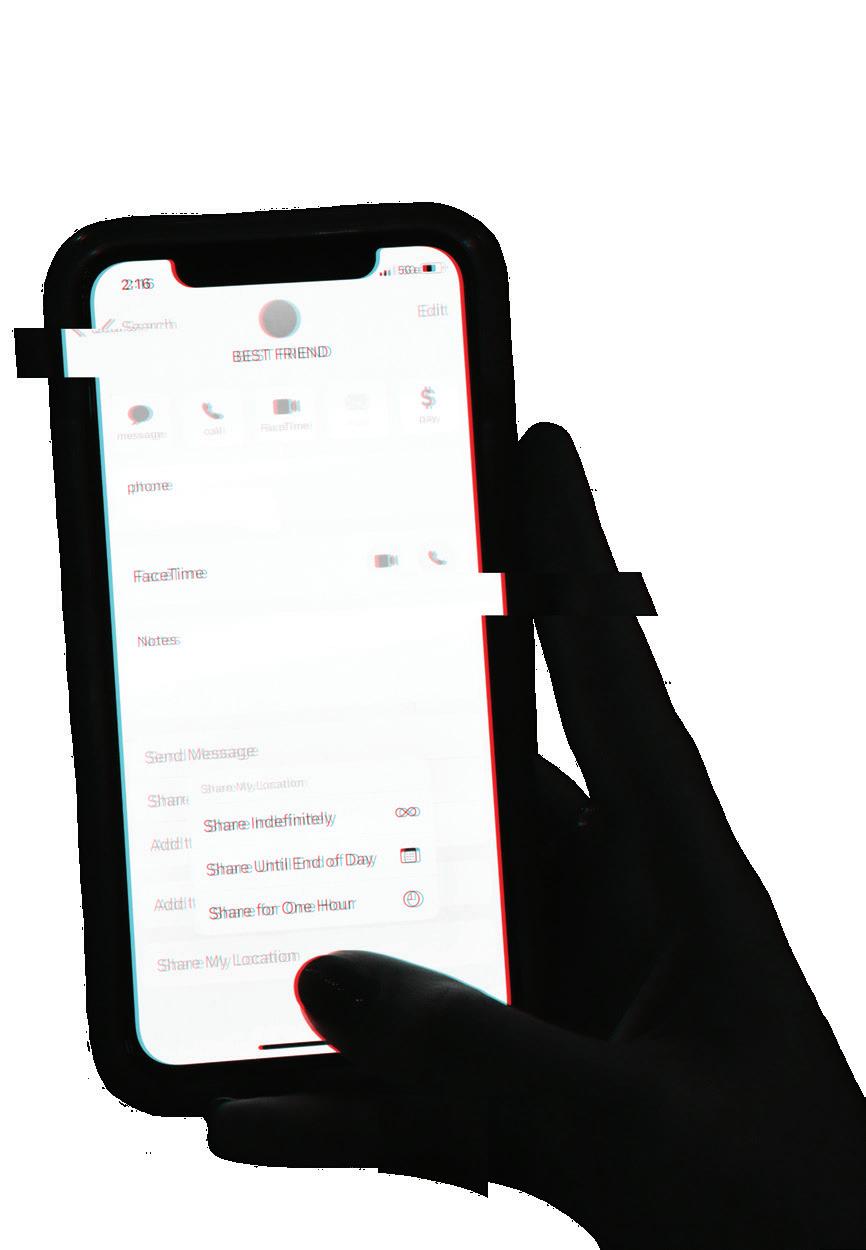
Ordway says her Safe Rides occasionally don’t come at the time indicated on the app. Other students have had their Safe Rides cancel at the last minute or never arrive. This poses a problem for students, especially if they are trying to quickly remove themselves from dangerous situations but do not have the resources to pay for ridesharing services.
Other than Safe Ride, Ordway says the University never educated her and other first-years about the existence of the Intercampus bus, the CTA 201 or how to take the ‘L’ train, which she thinks are all valuable resources. Greek event organizers and clubs like CSA and KASA sometimes charter buses or set meeting times at train stations for off-campus events. When there is no organized transportation, students must find their own way to get there.

Transport options like ridesharing offer the safety of privacy that the train doesn’t, but students must wager the ride’s expensive price with the cost of their safety. Burns and Hesekiel will only use ridesharing apps when it’s too cold to walk to a station or if the trains are taking too long. Otherwise, they take the Red Line, which Burns says is a place where she and her friends notoriously feel unsafe. She recalls instances of unsolicited staring and advances.

Burns and Hesekiel usually opt to coordinate their public transport plans with male friends to feel more comfortable on the way to downtown Chicago.
”For them, it’s less concerning, but for us, we’re like, ‘It would be nice to have some guys on the train in case the worst happens,’” Hesekiel says. “It’s just
Pepper sprayBurns and a group of her female friends went to a bar in downtown Chicago during her first year at Northwestern. Upon entry, the bouncer escorted them through a side staircase and into a separate room without explanation. The private area had seats filled with young women along one wall, while another side had five booths that sat middle-aged men with more women. Bodyguards stood around doors to private rooms blocked with velvet ropes. No one in the room was talking.
“There just seemed to be some shady characters and weird energy in that room,” Burns says. “So that was pretty scary.”
Burns and her friends stayed in the room for about eight minutes before she motioned for them to go to the bathroom, inconspicuously leaving the bar and then taking the next train back to campus. After that experience, she stopped going out for a month and has not returned to that bar since.
She thinks that women need to take initiative to be safe when going out, because she finds that the culture of partying is difficult to change.
“It would be hard to implement things there that would make people feel more safe or make the environment more safe, just because there’s not very much regulation on who can come in [and] what they’re bringing with them,” Burns says.
For Burns, gender inequality is inherent in the very act of going out. She finds that it naturally makes these spaces more dangerous for women and that people should prepare by taking precautions like bringing pepper spray or staying with a group of friends.
“Women being hypersexualized in general [makes me more unsafe],” Burns says. “That’s probably the primary reason. I just feel more vulnerable going out.”
Every time Ordway and her friends go to a party, they map out their night. Before the event, they exchange locations on their phones, create backup plans for transportation mishaps and establish boundaries for leaving with different people. Throughout the night, they check on each other and then debrief the next morning to ensure that everyone was comfortable with what transpired the night before.
“[We’re] just making sure we know where they are, that they’re conducting themselves responsibly,” Ordway says.”I know my friends, and I know [when] something’s uncharacteristic of them.”
Burns and her friends also communicate about leaving plans throughout the night.
“We make sure that if somebody is going to deviate from that plan, that it’s communicated, and we don’t leave unless everyone’s in their place,” Burns says. “I would say there are some boundaries that are set before, but [we’re also] going with the flow and just staying conscientious.”
Constant communication proved useful during the incident at the bar where Burns and her friends were escorted into a private area. After they left the venue, they texted the friends they planned on meeting on the dance floor and informed them of their new plans. They then regrouped with the others outside and returned to campus together.
Throughout her experiences, Burns has developed two ultimate principles for going out: trust and transparency. Trust involves going out with friends she can depend on and exercising caution while interacting with strangers. Transparency means communication and honesty with friends to establish boundaries.



“It’s really important to speak up about what you’re comfortable with, and that way, everybody is going to have a good time,” Burns says.
*Names have been changed to preserve anonymity.
It’s really what you’re comfortable with, and that way, everybody is going to have a good time.
important to speak up about “ “
“ “
“ “
- Barb Burns, Weinberg second-year
Diving into the little-known art of fight choreography.
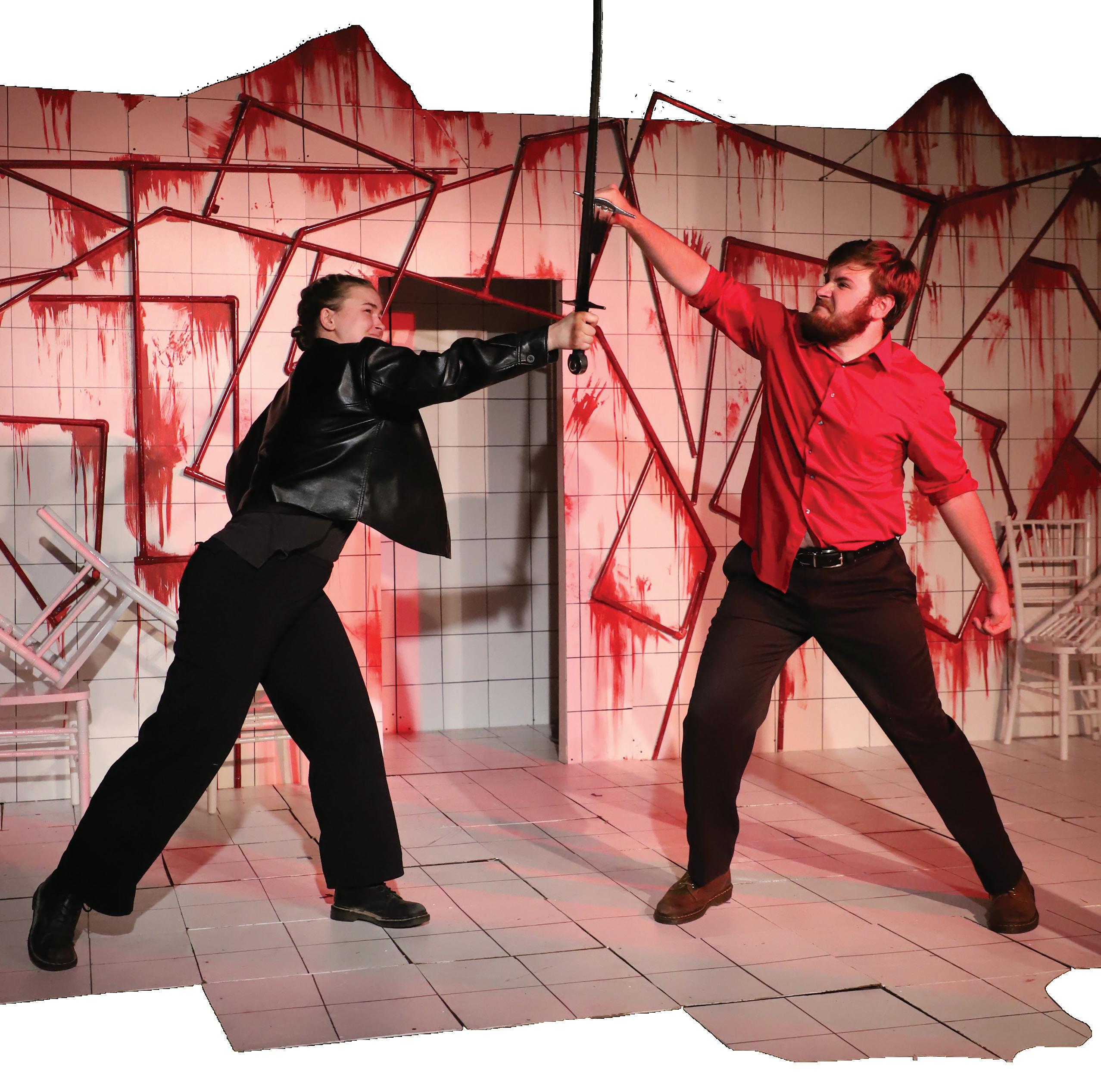 WRITTEN BY NOAH COYLE // DESIGNED BY SARAH KIM & EMMA ESTBERG
// PHOTOS BY ELOISE APPLE
WRITTEN BY NOAH COYLE // DESIGNED BY SARAH KIM & EMMA ESTBERG
// PHOTOS BY ELOISE APPLE
In the second-floor rehearsal room of the Wirtz Center, a group of students rehearse for WAVE Productions’ Macbeth . The director approaches the actor playing Ross and asks him to recite his monologue. The actor only makes it through the first phrase before stuttering and asking for his line. The director is infuriated, and before the actor can explain himself, she slaps him across the face.


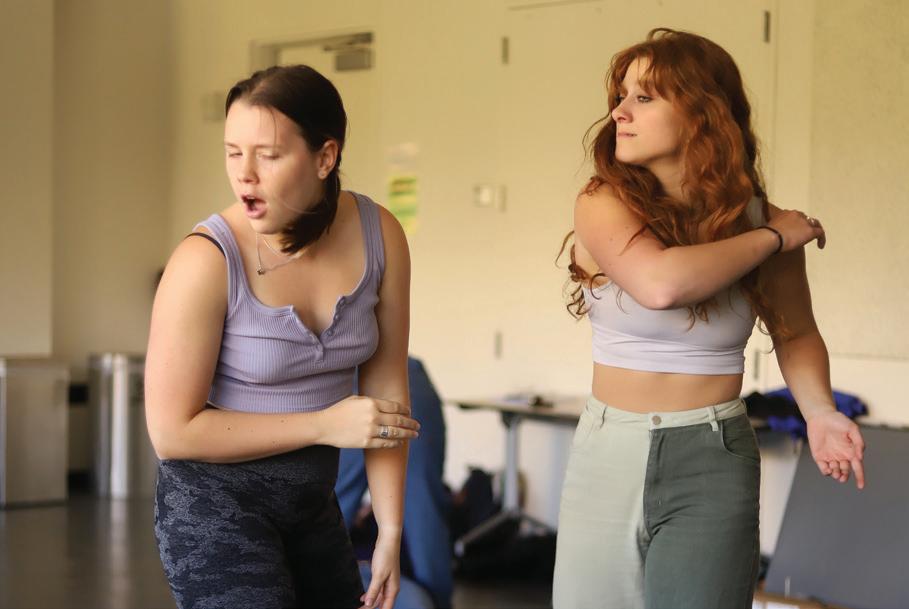
The actor stumbles back. Then, lurching forward, he lands a right hook on the director’s face. She follows by delivering a punch to the actor’s gut, the force of which takes him off his feet and lands him flat on his back. After pouncing on the actor and choking him
to death, the director rises and exclaims to the spectators, “We’re gonna have to find a new Ross!”

The room erupts in applause. This “fight” was the culmination of the day’s workshop, aiming to prepare for Macbeth’s fight choreography. Earlier, the fight choreographer taught actors how to fall backwards convincingly and safely by demonstrating the following steps: toe down, knee down, butt back and finally, head down. The actors practiced this process in groups of three. Starting off clumsily, their falls became increasingly fluid as they overcame their initial reservations.
Afterward, the actors paired up to work through a fight from initiation to resolution. Face-to-face, one
participant would confront the other over an imagined slight. They would trade blocks and blows before one fell to the floor.
While punches and takedowns may not be what first comes to mind when picturing rehearsal for a play, fight choreography is a complex art integral to many theatrical productions. It presents a study in contrasts, lying at the intersection of safety and danger. Just as scenes of violence can be a matter of life and death for performers, they can also give life to a production’s full dramatic potential. At Northwestern, a small but passionate group of student fight choreographers inject the vibrant theater scene with calculated conflict.
Fight director Grace Wagner conducts a workshop to teach fight choreography skills to the Macbeth cast.Communication second-year Gavin Shaub had a rude introduction to fight choreography. During a play in ninth grade, his friend’s character was supposed to slap him in the face with his glove.
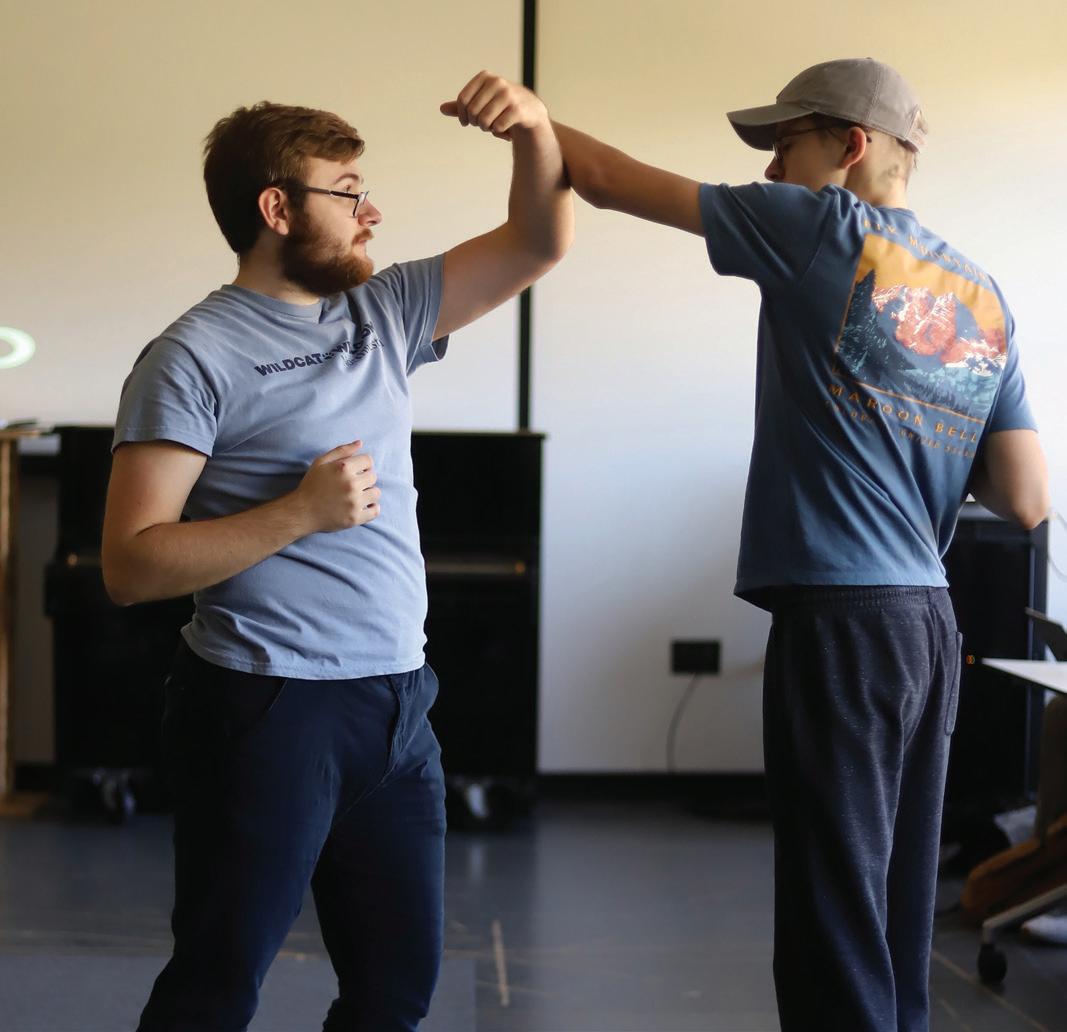
“My friend accidentally hit me in the nose with the entire force of his fist,” Shaub says. “I had to keep going with the scene because it was a dress rehearsal.”
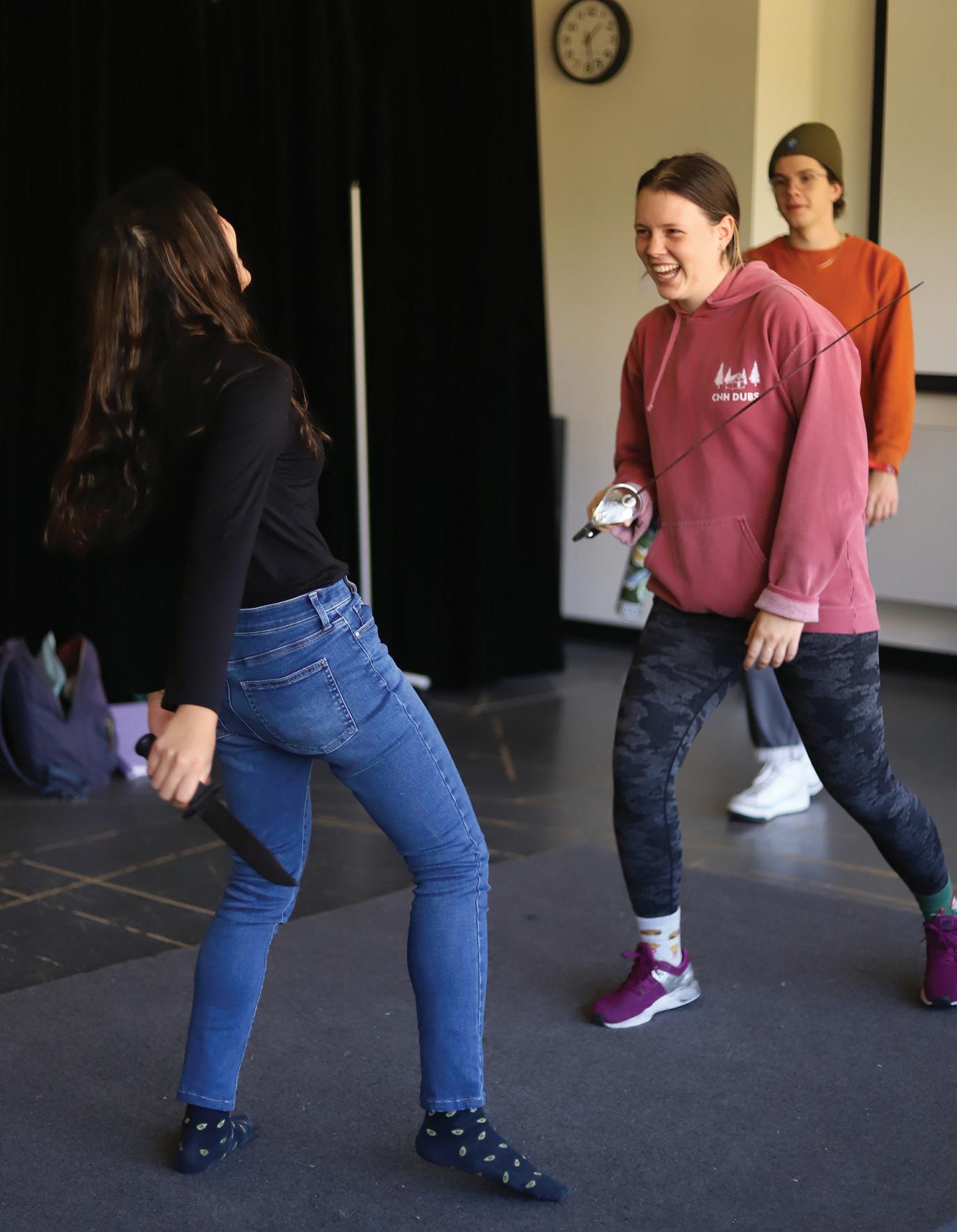
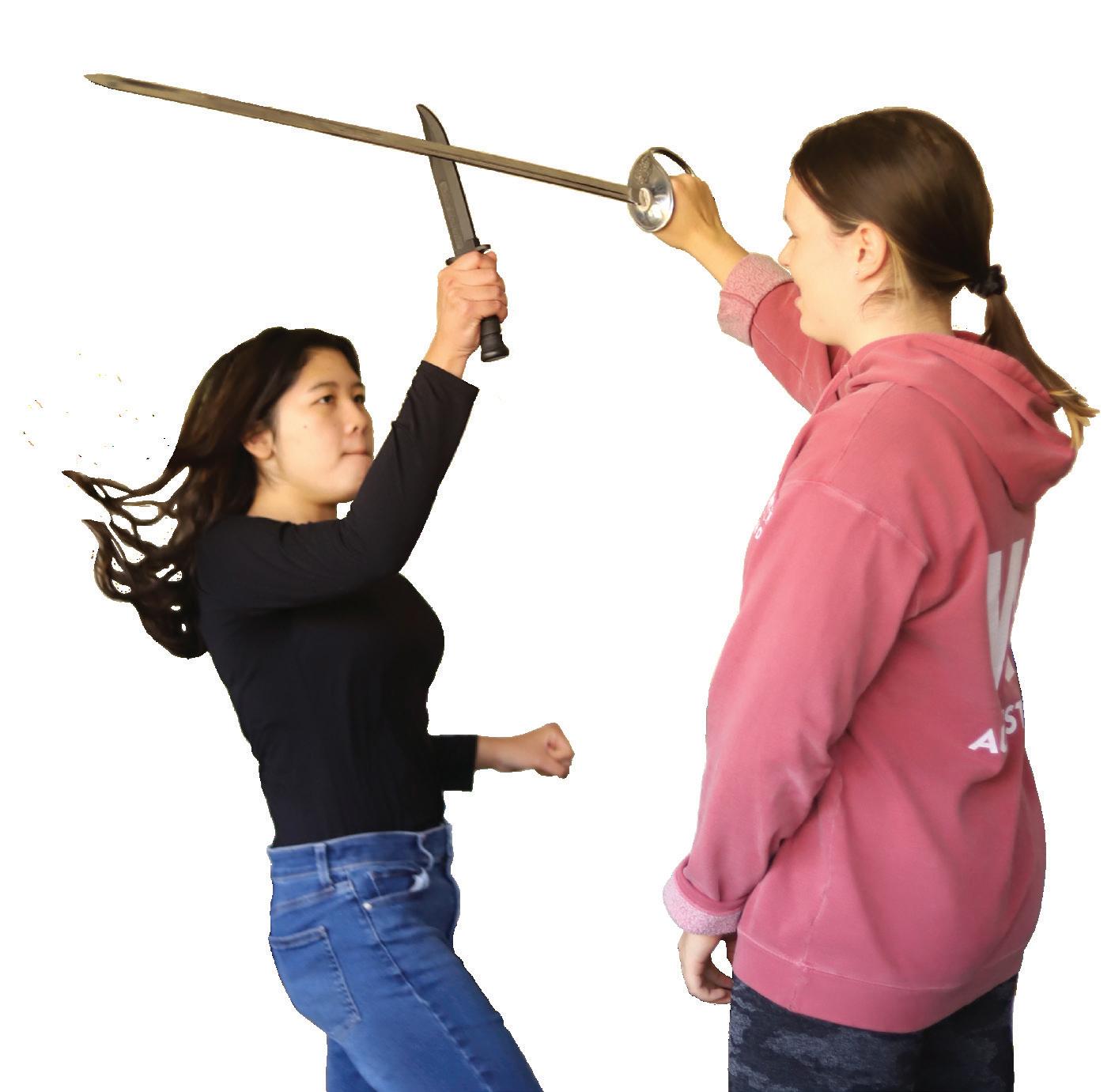
Despite this experience, Shaub made it his mission to infiltrate the fight choreography crowd when he arrived at Northwestern. Alongside Communication second-year Grace Wagner, he reached out to upperclassmen who had done fight choreography in the past and asked how to get involved.
Those conversations opened the door for Shaub and Wagner to serve as assistant fight choreographers on productions of The Lightning Thief and She Kills Monsters. With only one or two new recruits per year, Northwestern’s community of fight choreographers is small but welcoming.
“It was very easy to just immediately get involved, and now as a sophomore, I’m waiting for some ambitious freshmen to come up to me and be like, ‘How can I get involved in fight choreography?’” Shaub says.
Wagner, who is now the fight choreography instructor for WAVE Productions’ Macbeth, was also injured early in her theatrical career. In eighth grade, her scene partner forgot the choreography and improvised, leading Wagner to nearly concuss herself on the stage.
Nonetheless, Wagner’s fictional female role models inspired her to continue.
“When I was growing up, I would look up to Katniss Everdeen and all of these strong women when that’s not really the norm,” Wagner says.
She finds that helping others play those characters through choreography is very rewarding.
Sirin Jitklongsub and Margaret Pirozzolo learn fight choreography with swords in the workshop.Julie Monteleone, Communication second-year and director of Macbeth choreography before attending Northwestern. She grew up working with a Shakespeare company in her hometown of Lenox, Massachusetts, where she gained ample experience in stage combat.
As with Shaub and Wagner, Monteleone was hurt while performing. She suffered her worst injury in 10th grade, when she tore her ACL and meniscus in the opening performance of a production of Henry V instruction she received wasn’t comprehensive, and her peers weren’t rehearsing safely.
“I wanted to start doing fight direction myself because it means a lot to me to make fights look safe and be safe for the actors,” Monteleone says.
The goal of fight choreography is making simulated violence convincing while preserving the safety of the performers. To Shaub, this all comes down to training. One exercise that he finds instrumental involves gradually shoving a scene partner harder to determine their limit.


“A lot of people just push very lightly because they’re scared of hurting the other person, even though the other person is affirming them,” Shaub says. “It can be hard to get past that first barrier, but it’s about getting people comfortable with each other and with feigned violence.”
When each participant feels comfortable, the shoves look real.
Wagner communicates the fight to the audience via a “bigger is better” approach.
“The bigger movements are, the bigger it will read to the audience and the better it will congeal into one picture,” Wagner says.
There are exceptions to this rule, however. Wagner says that different types of plays require different presentations of violence. While a production involving superheroes may call for exaggerated movements during a fight, subtle maneuvers may be more compelling in a more serious production like Macbeth

For Monteleone, fight choreography is only as good as the preparation that goes into it, and preparing actors for a staged fight can be a long, exacting process.
“A lot of the process of building [the choreography] is going slowly and adding move by move what makes sense for this story — who’s winning, who’s losing — and then really locking in whatever you do,” Monteleone says.
This approach is integral to Monteleone’s production of Macbeth. While a less violent play may demand only a single visit from a fight choreographer, Monteleone brings Wagner in about once a week to ensure the cast’s readiness.
Communication fourth-year Gray Watson, the actor who was “strangled to death” in the workshop, affirms that Monteleone’s efforts are working.
“The guidelines we have in place makes it feel like a very safe space,” Watson says. “I’m never scared of the show or anything else.”
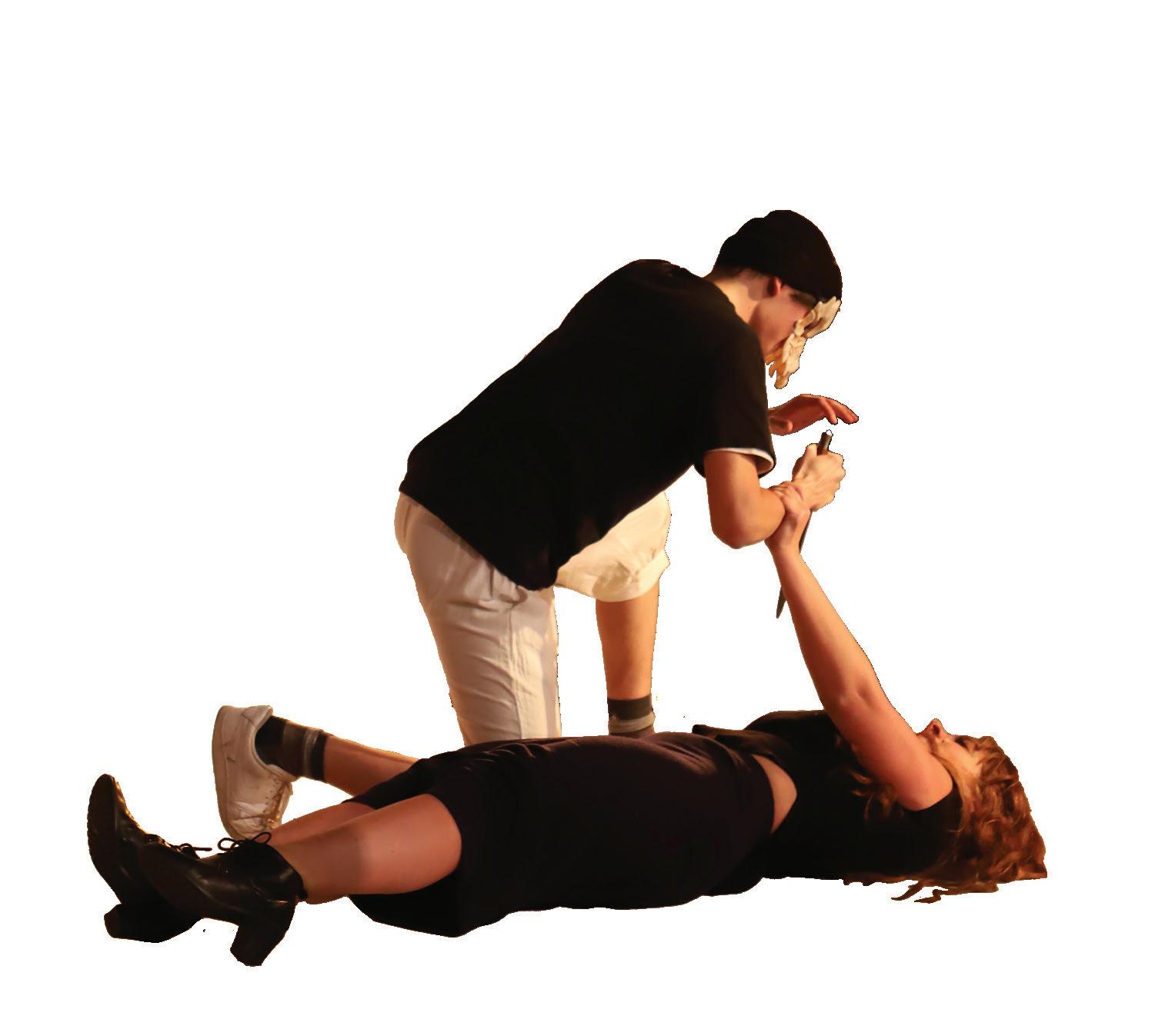
Beyond ensuring safety, adequate preparation allows the cast to master the finer details of fight choreography. Monteleone says that there is more to fight choreography than going through the motions.
“How do you tell a physical story with your body and your voice? You could do the weakest sword slash, but if you make a scream that sounds realistic, then people will believe it — sometimes more than the visuals,” she says.
Throughout the Macbeth workshop, there was constant communication between sparring partners, and everyone had a smile on their face. Every minute or so, a burst of laughter escaped an actor.
“We have fun doing it, you know? It’s not all serious,” Wagner says. “I mean, we all love swinging swords around.”
Fardon stabs Wysocki on stage.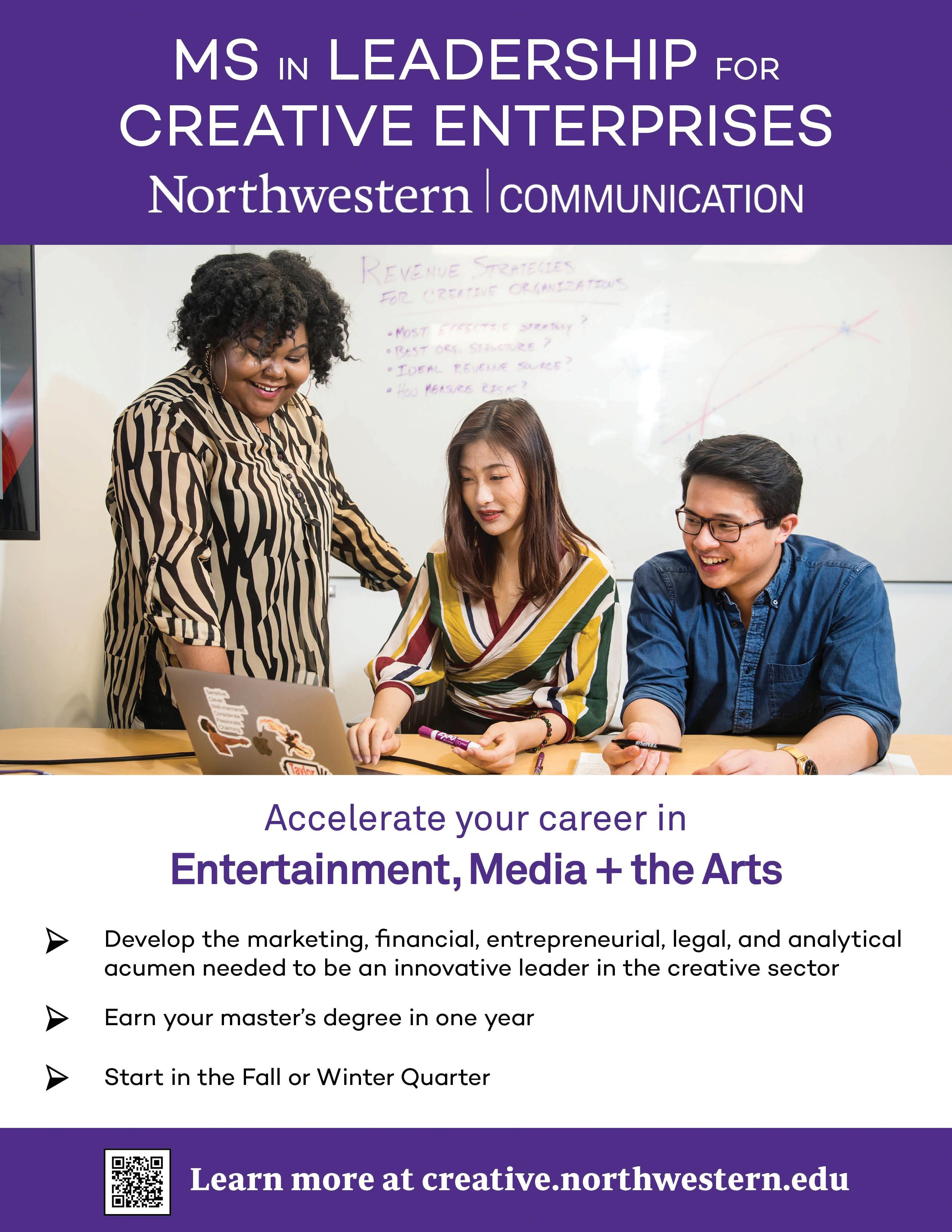

Unfortunately, the iconic blunt rotation from That ‘70s Show is the exception, not the rule. In a vast sea of students, faculty and Evanstonian stoners, it’s important to scope out campus characters that would kill the vibe. Consider this a guide to the groups on campus you can overlook the next time you organize a smoke sesh.
If a STEM student can get through a chem sequence at this school without seriously reconsidering their life choices, good for them. However, you know they probably stink, because even personal hygiene can’t get in the way of their love of stoichiometry. If they ever stumble upon your rotation, make a quick escape by reminding them of how much SESP homework you’re drowning in.

While a lululemon-sponsored blunt rotation sounds intriguing, suburban MILFs will probably try to rope you into their latest multi-tiered skin-care business. If you do let them and their crusty white dogs into the rotation, be prepared for questions such as “Is this marijuana organic?” and “What is a sativa?” Skip the hassle by hosting your smoke sessions at the same time as Sunday brunch.
Listen, spending Friday night getting hammered at your local Mediterranean & Persian restaurant happens to the best of us. However, posting a #collegelife selfie on a vacant dance floor while getting outnumbered by families enjoying lamb kebabs? Not it. Stay mysterious, have some restraint. Inviting a rampant Reza’s snapchatter to your blunt session is just asking for their desperate party-chasing entourage to pull up.
Talk about not sharing the wealth. These people will find a way to drain a joint faster than your bank account. If they’re supplying, get ready to be harassed with some charming Venmo request like, “miscalculated :( need $10.50 ASAP.” We’re in a recession. I am begging you to leave us alone.

To preface, I love Willie — who doesn’t? But, the old Willie the Wildcat, the one with the eyes of someone who’s taken a few dozen hits too many? He looks like the nightmarish omen of an impending green-out. Cross the purple version of the Cat in the Hat off your invite list and stick with our sexy fan-favorite Willie instead.
You all know who I’m talking about. The herds of people that walk around campus soliciting students to join their holy Bible rotation. I’d skip reminding them that “left is law” unless you want a lecture about how there are better ways to ascend. Want to avoid getting pestered about their latest Bible study session between hits? Offer up an extra edible and soon, we’ll all be feeling a little closer to God.
Anyone who’s ever said, “I actually thought that gen chem test went really well!”
Kellogg

T –You know how the British say privacy? Exactly. It’s spacious enough to hide from the Louboutin-wearing business students that know I shouldn’t be there. O –Smells like success. Given the amount of money Northwestern invests in the business school, I would expect nothing less. I –I took an international call and invested the rest of my dining dollars into cryptocurrency. L –Rounding up the girlies and pregaming in the Kellogg bathroom just for the selfie lighting. The mirror looks like a vanity, which is perfect for self-absorbed undergraduates (me!). E –The feng shui was top-tier. I felt very at peace. T –If bathrooms could give hugs, Kellogg would be akin to a corporatized Paddington Bear. No complaints.

























































NBN ’s comprehensive guide to the best and worst bathrooms on campus. WRITTEN




 BY HANGOVER EDITORS DESIGNED BY ESTHER TANG
BY HANGOVER EDITORS DESIGNED BY ESTHER TANG
T –Someone has walked in on me multiple times in this bathroom. After large lectures, you’re basically trapped in a revolving door of people. O –To be fair, I don’t think I’ve ever detected a stench in this bathroom. But also women don’t poop so maybe that’s why. I –Usually too overwhelmed by the STEM kids’ palpable stress to even take out my phone. L –Cold and medical. Feels like I could be providing a stool sample for someone’s bio lab. E –One of the stalls (the one I used) doesn’t lock properly, so prepare for that door to swing right open mid-pee. Pretty exhilarating. T –Tech always has me on edge, from pre to post-bowel movement. When it’s time to wash your hands, you can’t help but make awkward mirror eye contact with the other two stressed-out people wedged against you.
T –Private, but in an isolating way. If the massive cockroach I saw had attacked, I would’ve been fucked. O –If the bowels of a building could stink, this bathroom would’ve been putrid. Fortunately, the pipes visible through a giant hole in the ceiling were more of a visual offense than an olfactory one.

I –Poor. The underground signal sucks. Couldn’t call for help. L –No lighting inside the stalls. Dim and scary. There is a decently lit full-length mirror though, so students can do a quick fit check as they make their escape. E –The ceiling hole provides a perfect passage for resident spiders, mice or other Lunt fauna to descend mid-shit. Exciting in a scary way.
T –If Harry Potter’s cupboard under the stairs was a bathroom, it would be this one. The slanted ceiling had me ducking my way into a stall, which forced me closer in proximity to the floor (and the cockroach).
Norris (basement)



T –There are often lines out the door, which usually makes for a rushed, stressful dump. I can feel the judgment of the people in line when I take more than two minutes. Atrocious. O –It’s so musty in there. Can Norris please invest in air fresheners before they build another Starbucks? I –No bars, no service. A crime. What is a trip to the bathroom if not a social media binge? L –If The Shining had a baby with the color yellow. Why would you ever paint a bathroom chartreuse? Everyone looks like they have jaundice. So disconcerting. E –The visual chaos of this bathroom threw me for a loop. Why is it shaped like an F? I was excited to leave. T –Legend has it the sink’s scalding water gets one degree hotter for every first date that happens in Norris. My recommendation, do not go piss girl. You can do better.
T –These bathrooms are such a well-kept secret that most people don’t even know they exist. To get there, take the elevator to the basement and turn right, then let it flow! Did I mention that these bad boys are single-stall? O –Since these johns are less frequently used, they’re probably less frequently cleaned as well. I –Not much service down here. Maybe enjoy a good book instead! I hear they have a bunch upstairs. L –A nice dimness gives your bathroom trip a sexy, candlelit vibe.
E –Considering how off-the-grid and seemingly soundproof these bathrooms are, you could party in here until the a.m.!
T –Deceptively spacious. Amenities range from a full stall to standing urinal. Visit with your significant other to take advantage of the his-and-hers sinks.












T –For a long time, one of the two stalls in the second floor men’s bathroom had no functioning lock, while the other stall had no functioning toilet seat. Thus, a diarrheal dilemma ensued. Sacrifice privacy for a place to park your rear? Or sacrifice the safety of your ass so you don’t get walked in on?
O –Smells fine, probably because no one in their right mind would shit in here. I –Pretty good coverage, so you can record your latest podcast. L –Gloomier than the future of journalism. E –I’ll admit, there’s no rush quite like pooping when anyone can walk in on you. T –There’s nothing worse than entering a bathroom and getting an eerie feeling that you’re a part of some psycho Medill student’s fucked-up social experiment.




















































T –An anxious shitter’s dream. Single stall, not one but two locks, sturdy wooden door and an exit hidden from any nearby classrooms. O –Clean and relatively scent-free. Harris, home to the history department, is a civilized place, so no one is tinkling on the floor.


I –Everything streams just fine. TikTok, ASMR slime videos, piss… L –Serene. Indirect lighting emanates from above the porcelain throne, which is tucked away in a cozy corner banked by walls of retro tile. E –No rush. Relaxing. There’s never a line in Harris, because who the fuck majors in history? T –Warm. Cozy. Throw a futon in there and I’m moving in.

Post-Halloween regret is inevitable. Hungover, we reflect on the hodgepodge of accessories we donned atop spandex and lingerie, wondering whether dressing as busty Big Bird was really the right call. While the social cost of our Halloween choices is nonrefundable, don’t let the money you poured into your Amazon cart go to waste. Instead, keep the Halloween spirit alive and repurpose your costume for everyday use.

From pouring shots to administering them, the sexy doctor and naughty nurse costumes are eternally useful. Why leave your bedside manner in Halloween’s past when you could put it to use at Searle? You have what it takes to make Northwestern’s totally unsexy health service center hot again. Just swap the plastic stethoscope for the real deal, and the only unbelievable thing about your job credentials is how good you look doing it. Just don’t ask for my Symptom Tracker, because I’d be lying if I said I wasn’t hot and bothered!
Flag on the play! This is a cop-out costume for sports kids who are too cool for Halloween. Regardless, there are ways to resurrect that striped shirt. Try interpersonal mediation, for instance. Instead of calling out linemen for being offsides, call out some emotional players for ghosting your friends. Redirect that ref whistle at your local frat brother! Flag down manipulation! Make calls on vital questions like “What are we?” and “Why did you leave my Snap on open?” Alternatively, you can add a mask to the mix, grab a burlap sack with a giant dollar sign on it and rob a bank. If all else fails, you can always apply for a job at Kids Foot Locker.
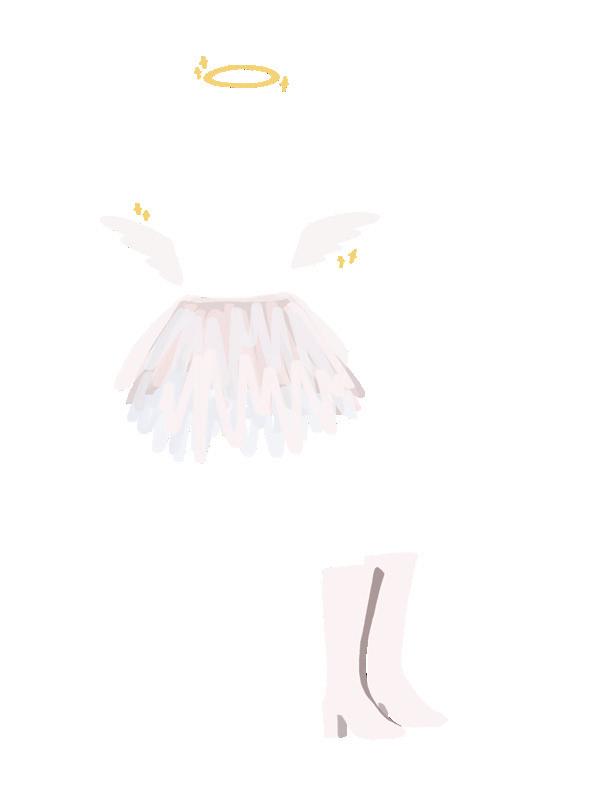
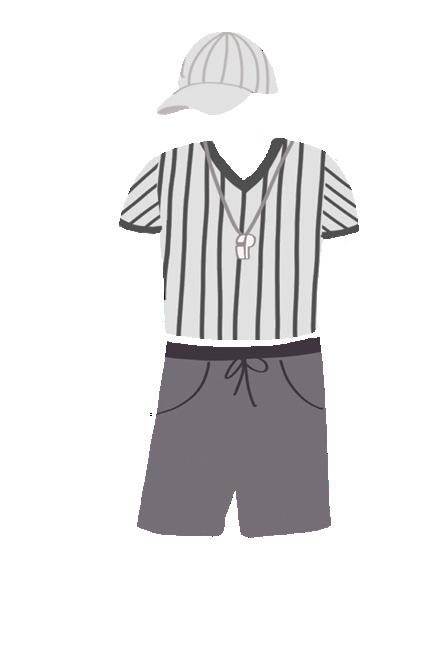
Without your best friend in a devil costume by your side, the angel outfit may garner some unwanted attention — specifically from the campus missionaries, who will be thrilled to see that their message is sticking. TBH, wings are hard to style, so you might as well lean into it. Once you have the look down, show everyone you have the vocals to match! What better place to use that voice of an angel than the Alice Millar Chapel Christmas show? Make it a multi-holiday look — you in a white tutu, surrounded by a bunch of kids playing wise men and sheep. Churchgoers will love your corset top (so Reformation-chic), and you’ll be fielding “Did it hurt when you fell from heaven?” pickup lines till Lent.
Screw. Hammer. Nail. Drill. Bang. Construction lingo is hot, and so is the costume. The whole ensemble is pretty utilitarian post-Halloween, too. The reflective vest is a great start to your career as the first Sheridan Road crossing guard. Standing in the Arch intersection and ushering students safely to the other side is a vital service our campus lacks. Your hard hat can be used as a helmet to protect that sexy brain in case you crash your electric scooter. Your utility belt is like an extra-capacity fanny pack. It’s the New Age mom bag that can carry snacks, wet wipes and five types of wrenches. So versatile, so hot. This costume basically repurposes itself.

How
If you dressed as a sexy schoolgirl for Halloween, you seriously have to put down the academic obsession for a night. It’s not hot to be overworked, girlboss! That being said, this look is super versatile. Office hours, LinkedIn photos, rushing business frats, consulting fairs, meeting your partner’s parents — plaid is fashion-forward for all occasions. Costume components can be used in isolation, too. Those thigh-high ruffled socks are great for preventing ticks when hiking in wooded areas. Suspenders are totally coming back too and are a foolproof way to avoid being pantsed. Props for being functional as fuck.


I get it, you were trying to put that cowboy hat to good use, but let’s face it, we live in a Midwestern suburb. Congrats on manufacturing a reason to wear it, I guess? Alas, the useful part of this costume is not the hat. It’s the chaps. The assless chaps. It’s important that they’re assless. Picture this: You just ate an ungodly portion of dining hall buffalo chicken strips. They’re hitting your intestines hard and fast. You’re starting to preemptively mourn the loss of a perfectly good pair of pants. But wait, you wore your assless chaps! You can let it fly right out that convenient gap, knowing no pants will be in harm’s way.
The sexy cop costume is not chill. It can really only be repurposed for the Republicans-only dating app, Righter, or for cosplaying Zootopia’s curvaceous cop, Judy Hopps. Not the kind of sustainability we’re looking for. Instead, Halloween hotties are dressing as everyone’s favorite federal employee: the air traffic controller. They can still handcuff you, but instead of shutting down your house party, they’re safely sending you up into mile-high-club territory. Depending on your favorite branch of air traffic jurisdiction, it is also an excuse to rock head-to-toe camo. Now once you’ve got the camo jumpsuit, the natural next step is to take it on a little birdwatching trip. You’ll be well-hidden while you meditate on the sights and sounds of nature. You can keep up the flight theme, but instead of promoting the airline industry’s immense carbon footprint, take a moment to appreciate nature’s airplanes. Identifying aviary fauna is the best way to decompress after Halloween.

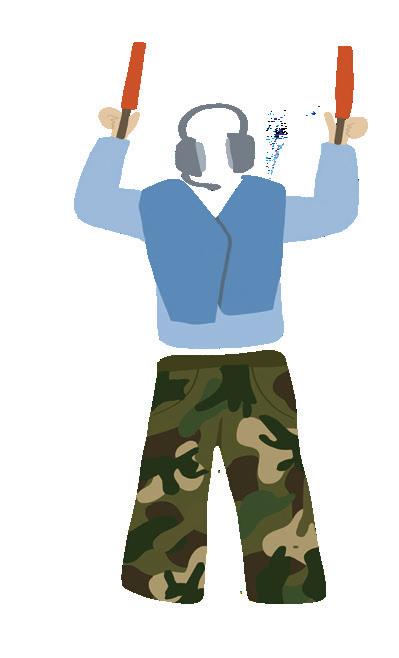

For the first time in human history, your khaki shorts are sexy. That is, of course, only when complemented by an open vest and a cardboard box with a conveniently-placed hole cut in it. But after you’ve delivered your Halloween package and retired the USPS badge (Is it a felony to impersonate a federal employee?), what do you do with your saucy khaki ensemble? There’s no reviving the allure of those shorts, so toss them. The vest could be cute over a turtleneck or something, but the cardboard box has the most potential. For example, it can be repurposed as a receptacle for any frogs or rodents you catch outside, especially because it already has a breathing hole to keep them oxygenated. It could also be transitioned into a multi-holiday accessory — just wrap it up and add a bow, and you’re ready to give the Christmas/birthday/Hanukkah/anniversary/Valentine’s gift as old as time. Special delivery: your package.
Oh my god, you leafy bastard. Literally come over right now. My roommates aren’t home. We can like, watch a movie or something. That tunic needs no repurposing — you can keep it on.
NBN wades through the dregs of the internship pool.
WRITTEN BY GOLDIE BECK // DESIGNED BY BENNIE GOLDFARBSo you’re late to the internship game, and you don’t have any tangible skills (besides self-sabotage, of course). Did you just forget to apply, or are you a bad, bad girl who wants a bad, bad future? Either way, NBN has generously compiled the seven best(ish), still-available internships seeking applicants with no valuable skills or sense of career direction.
$15/situationship that turns into a real relationship
• Help students grieve someone they never dated. Provide the tissues. Lend an ear. Offer yourself if your patient needs a rebound. Maybe this will be your chance to escape the friend zone with your client.
Benefits: Feel better about your own love life, find yourself a new bae or if you play your cards right, join as a third.
Possible sign-on bonus??
• Carry the Evanston community’s voice on your back next summer and become the app’s content-creating aficionado. There’s no need to get too creative, since most of the yaks are just horny college students on the brink of a breakdown. Here are five real yaks I just read, and it’s only 4 p.m. on a Sunday:
• “My old lady neighbor has probably seen me touching my worm”
• “Any girl tryna join me and my girl for a threesome? Dm if down”
• “hey guys, show me your balls” — This one received a LOT of eager replies.
• “The fedora with the safari flaps stays on during sex”
• “The clap of my cheeks alerts the guards”
Benefits: Get paid to broadcast your horniness! No matter what, you’ll have a sexy Yakarma count by September.
$20 + tips
• With these cuts becoming more popular, the workforce needs someone to nurture that head. Be there for The Circumcised before, during and after the operation. Hold their hand during the chop, take them out to Applebee’s for some replenishing Bahama Mamas and check in every 20-30 minutes to dab rubbing alcohol on the infected areas.
Benefits: Learn more about human anatomy. Plus, you get to take home the extra foreskin! Yippee!
• Hot take: This campus needs a pestering street show person to bombard people with a microphone at 8 a.m. on a Monday. How have the Medill kids not gotten on this yet? You could be the one to make it happen!
Benefits: Unite the Northwestern community by becoming our common enemy.
$6.90/furry clothed
• Help the furries clothe themselves, but you can’t use your hands. (If they don’t get opposable thumbs, why should you?) Zip up their zippers. Unbutton those buttons. No getting freaky with the furries though (before the show at least). Must sanitize each suit after the convention.
Benefits: Free admission to the convention and staff parties. The fandom is one of the strongest alive. And they always want newbies. Winky winky.
Benefits: You’ll get your own private coat rack. No longer fear the Reza’s Canada Goose jacket thief!
Retirement home newsletter, obituary writer
HIGH DEMAND! hybrid – in person & remote work!
One of a kind deal!
$14/mosh pit started
• Shadow and learn from Reza’s resident WNUR emcee. The people need their music! Just think, you could design the soundtrack to someone’s dance floor makeout! Since Reza’s signature dance room does shut down over the summer, you will be playing for the establishment’s restaurant side, an intimate Mediterranean and Persian cuisine eatery.
$15/obit
• Write the weekly obituaries for local Evanston Retirement Homes. There’s plenty of material because there are about 20 retirement homes in this 10-mile radius. Immerse yourself in Evanston’s elderly community, but don’t get too attached to the residents.
Benefits: Free meals, housing, geriatric gossip and bingo!
Northwestern’s “Excuse me, what song are you listening to?” TikTok host $.003/viewUnfortunately, NBN has yet to send our staffers to ambush pedestrians for a “What song are you listening to?” TikTok, meaning Northwestern students’ niche musical identities are yet unknown. Fortunately, the Hangover section has decided to take matters into our own hands by composing incredibly obscure playlists tailored to your unique listening habits. That way, we know exactly what you’re listening to on your walk to class! No need to ask.
Start here!
You walk into the dining hall for din-din. What’s your drink of choice?
I’m obviously booking it straight for the
cantaloupe-infused water. (Freak.)
My go-to is a sugary fountain drink as a little “treat yourself.”
I’m terrible at time management and want to make it everyone’s problem, so coffee!
Your favorite artist is performing in Chicago next weekend. How much are you willing to pay?
Nothing (I mean nothing) could keep us apart.
Five whole meal exchanges
You’re walking along the Lakefill with headphones in. What’s your genre of choice?
Top 40 EDM remixes
Glee: The Complete Playlist (yes, this is a genre)


Favorite Holiday?
Queen Bey’s Birthday (May she live forever)
Queen Elizabeth’s Birthday (May she rest in peace)
Whale sounds to maintain my mysterious persona
Taylor Swift or John Mayer?
Moped menaces
Someone asks you who the most annoying people on campus are. Your response is:
Sailing team
There are five minutes left before you send Reza’s for the twentieth time this quarter. What’s your go-to hype song?
Help! Your “friend” just invited the worst person you know to the pregame. What’s one surefire way to get them to leave?
“Karma” “Ms. Jackson” John
Taylor (pass go and collect $200)
Stuff those seven Pink Whit shooters into your socks and tell them you’re out of alcohol.
Text them that the pregame was relocated to the Norris basement bathroom (see: “The shitlist,” page 59).
On my X Æ A-12 Musk type shit P*SSY POPPING Timeless Christmas doing nofing

Congratulations! You’re one of the most intolerable people on campus. Enjoy this meticulously curated playlist that could kill a Victorian child in 30 seconds.
You’re a bad bitch. But you probably knew that already. Here’s a playlist for you to strut down Sheridan to, whether you’re practicing your runway walk or trying to build up the confidence to work out.


Imagine falling white stuff (snow), hot, thick, creamy beverages (eggnog) and wrapping up your gift for that special someone (Midnights on vinyl). Throw this one on to get ready for a “Christmas” delight!
If you’ve ever wanted to try self-hypnosis or you’re just grinding out that last paper before Winter Break, enjoy this playlist with nothing but white noise and nature sounds.
WRITTEN AND DESIGNED BY BENNIE GOLDFARB
And that’s what you will learn at Medill IMC. You’ll create innovative marketing communications strategies and engage consumers in the digital age by working collaboratively with global companies, faculty and your peers. Our program will teach you the IMC “way of thinking” that focuses on understanding consumers and balances qualitative and quantitative data to build strong brands. Medill IMC will help set you apart from others in the industry and prepare you for the future.
www.medill.northwestern.edu

The future belongs to those who understand the art and science of marketing communications.